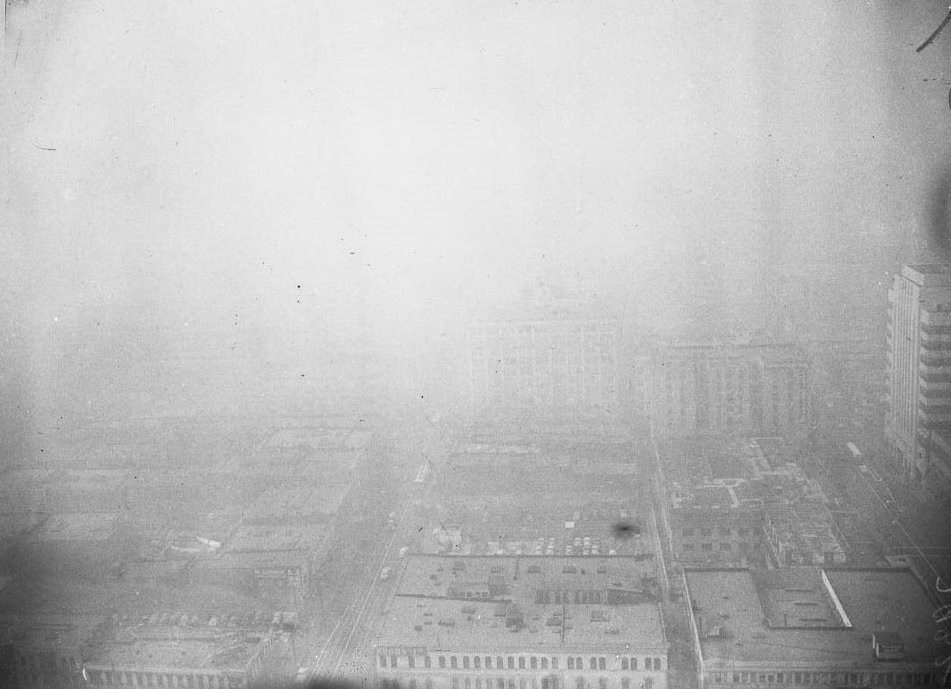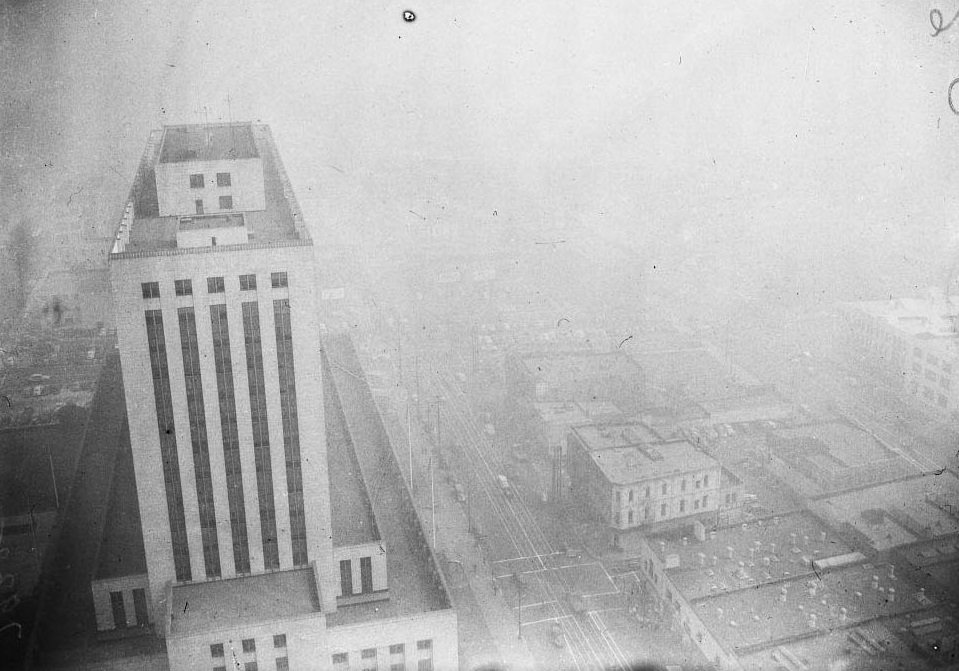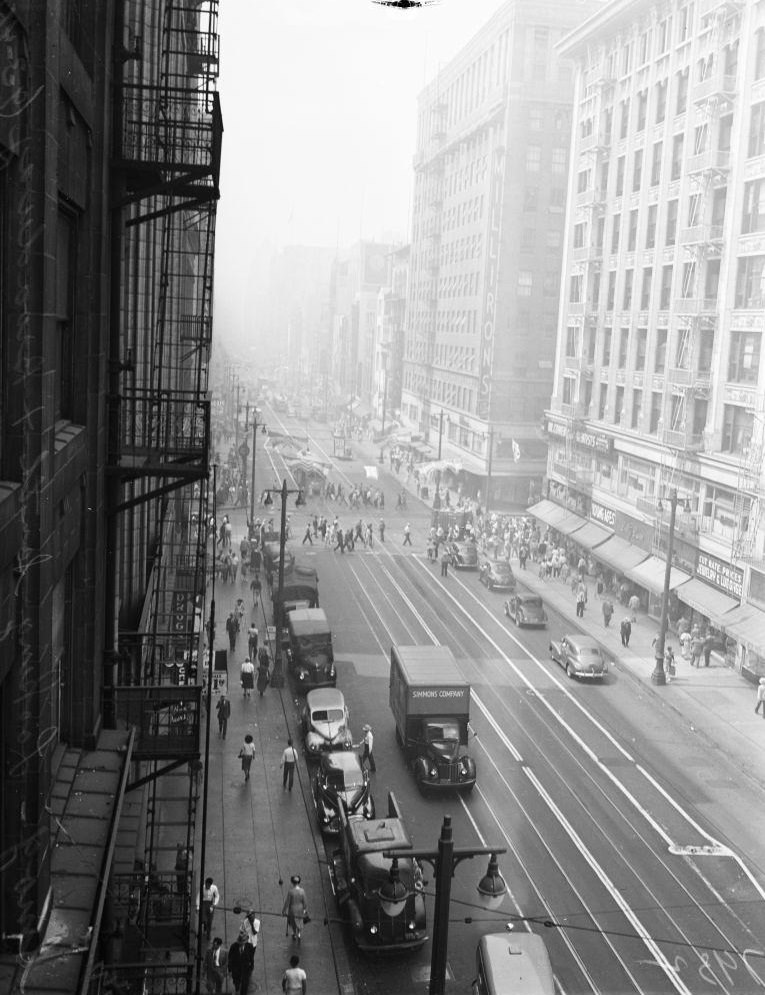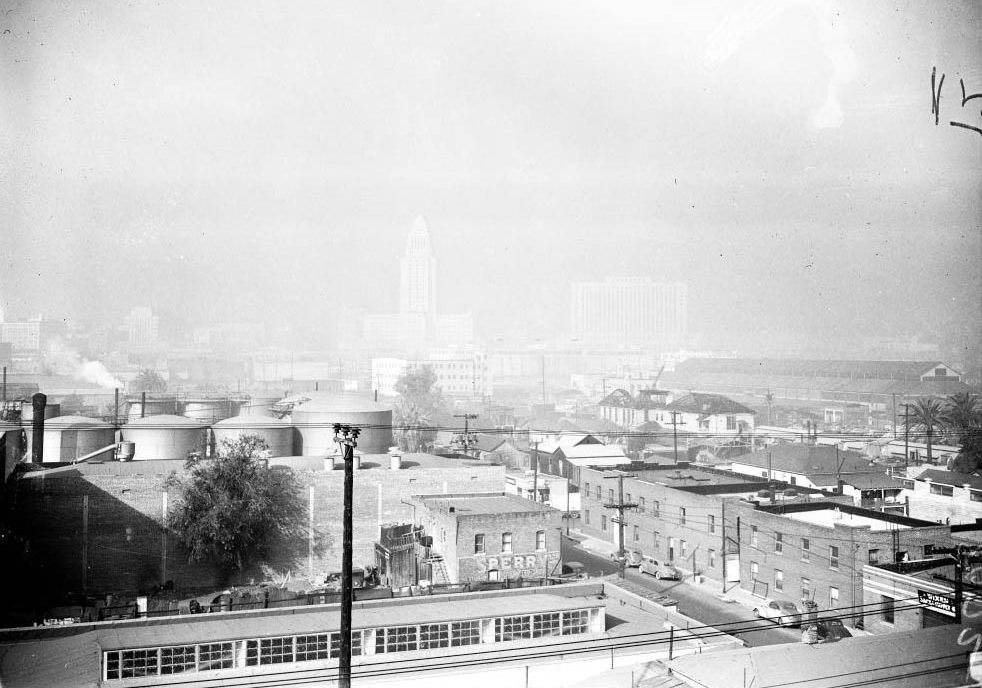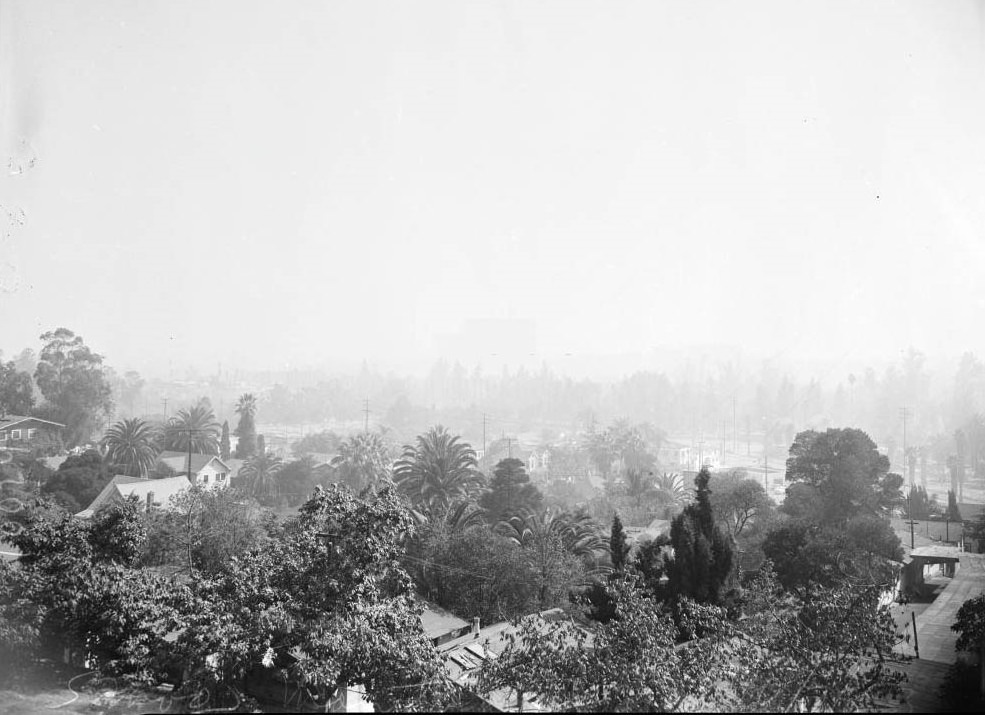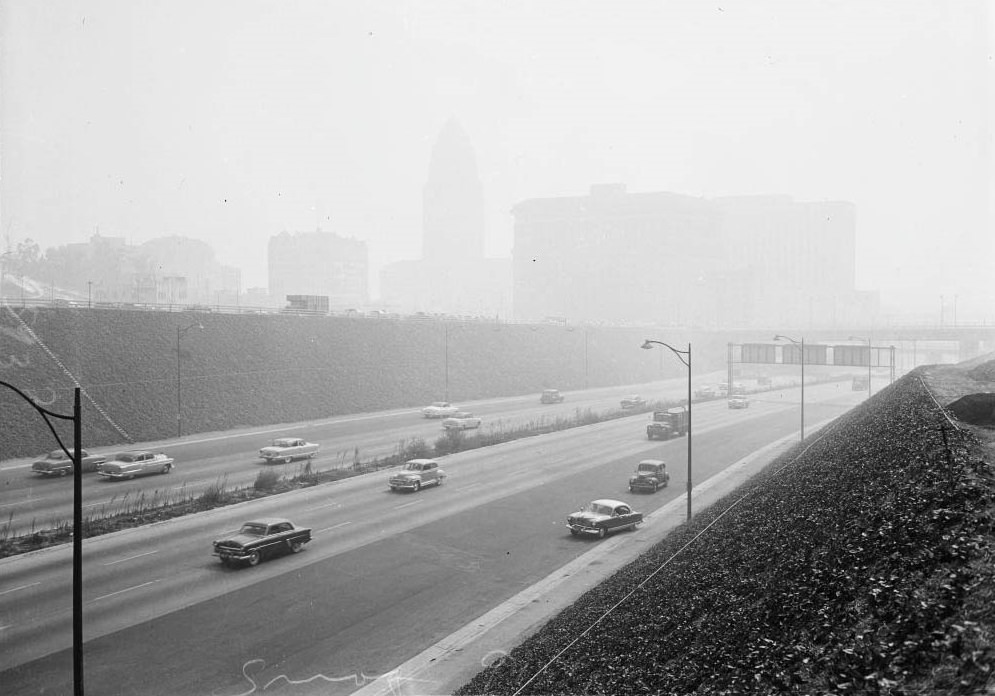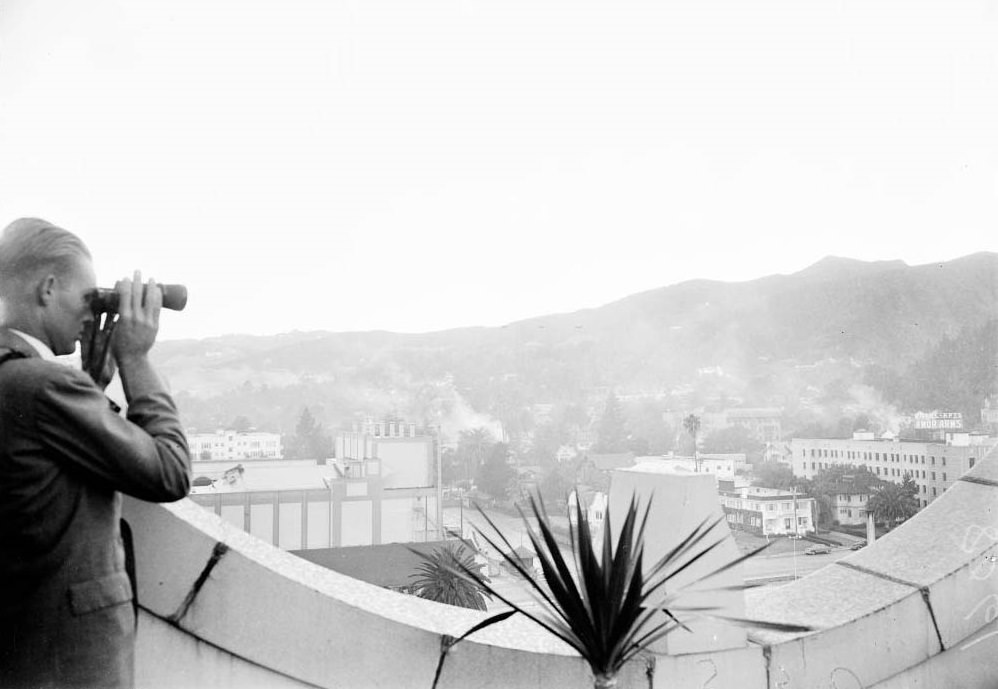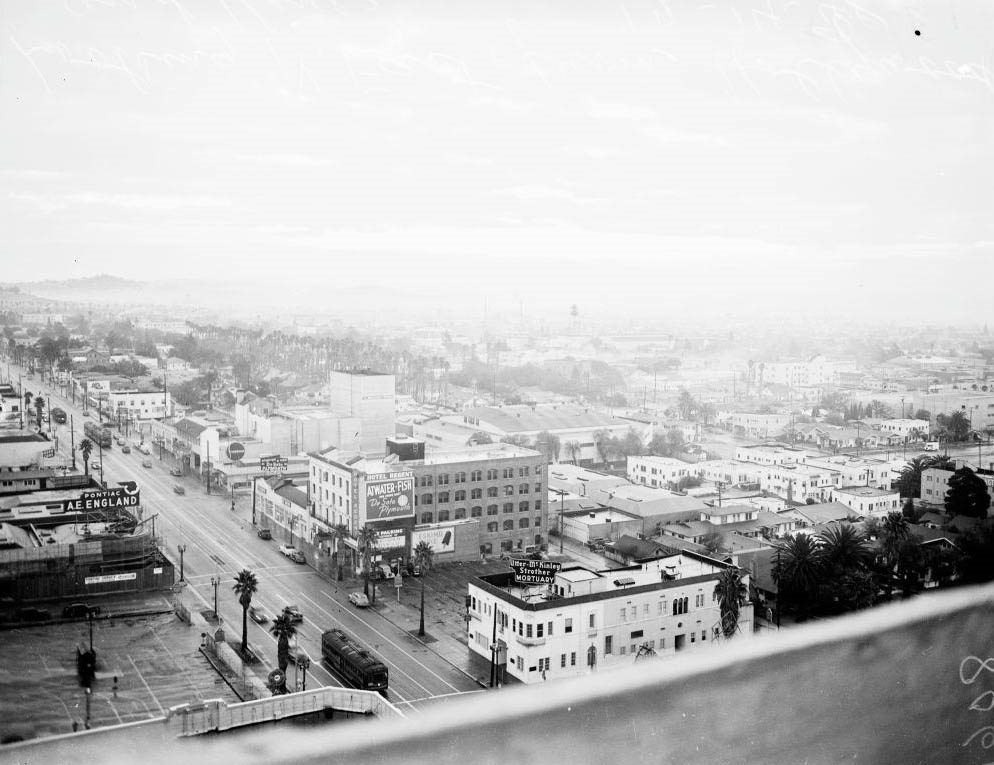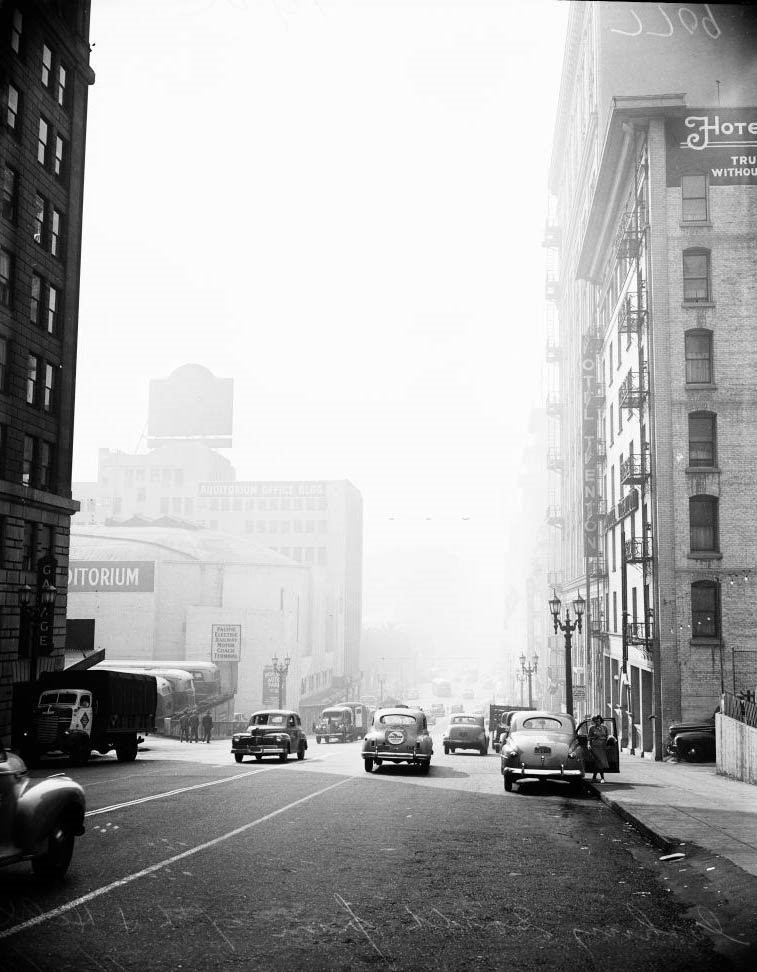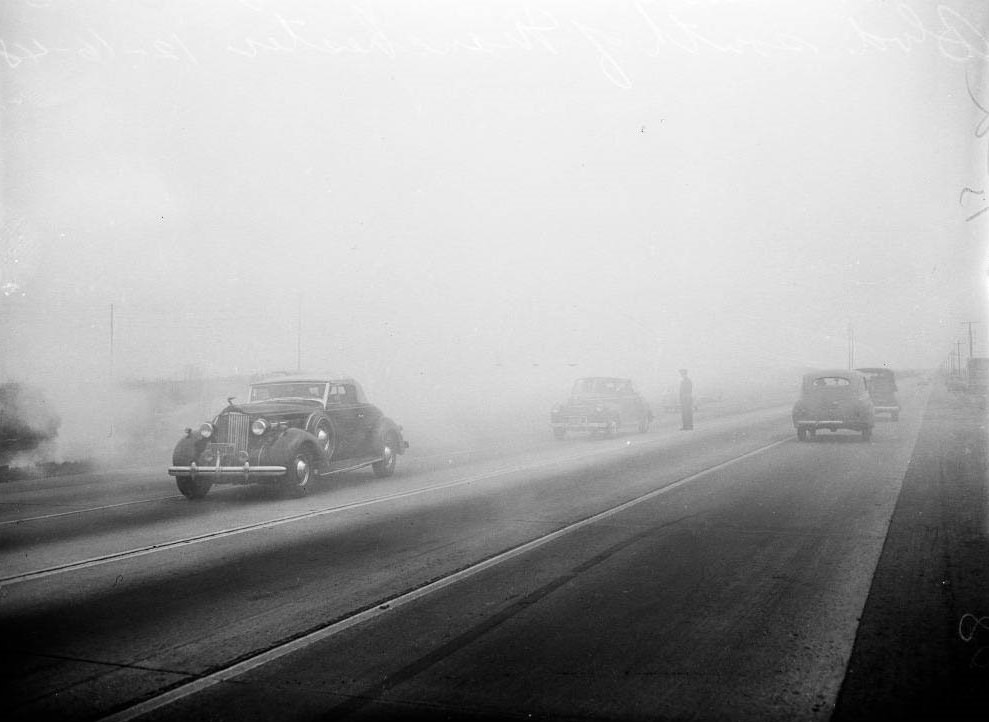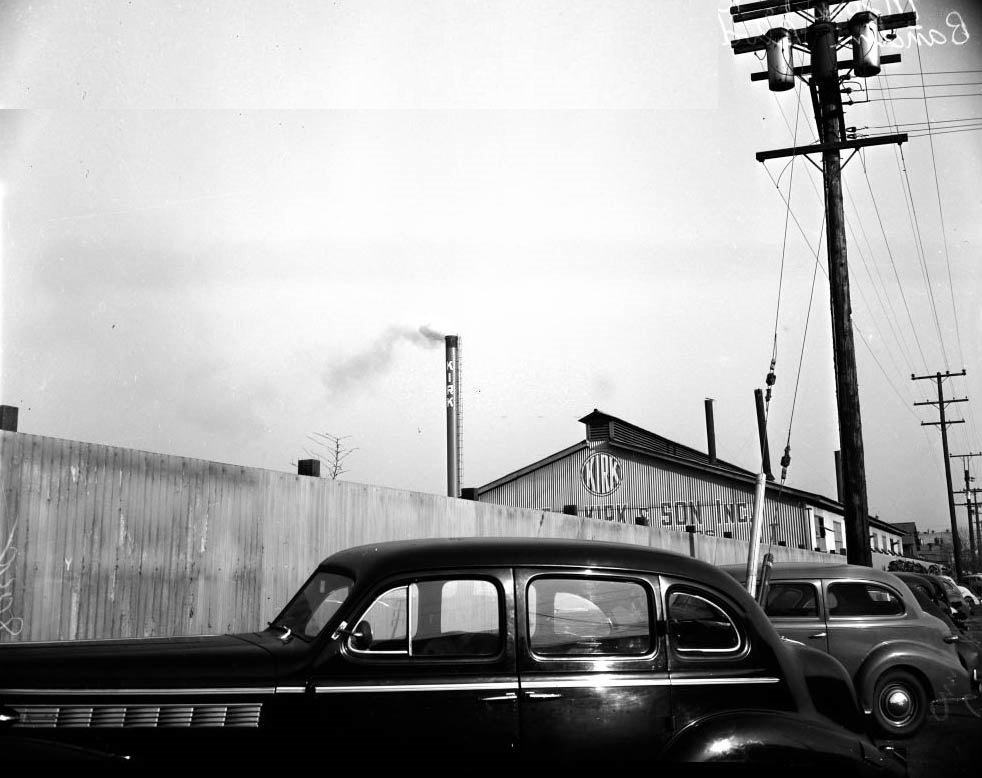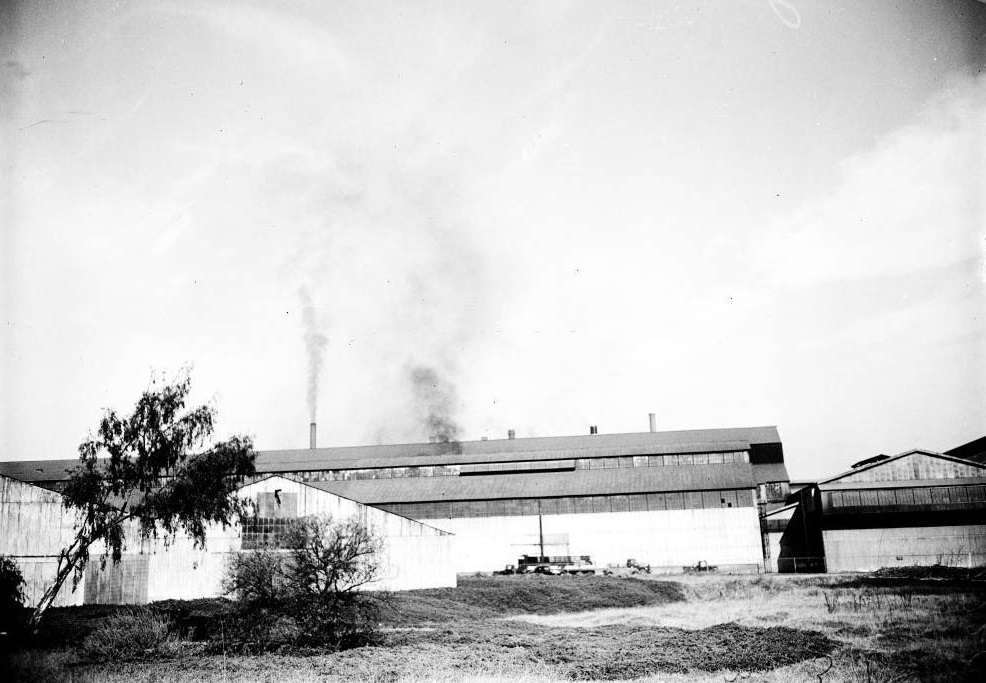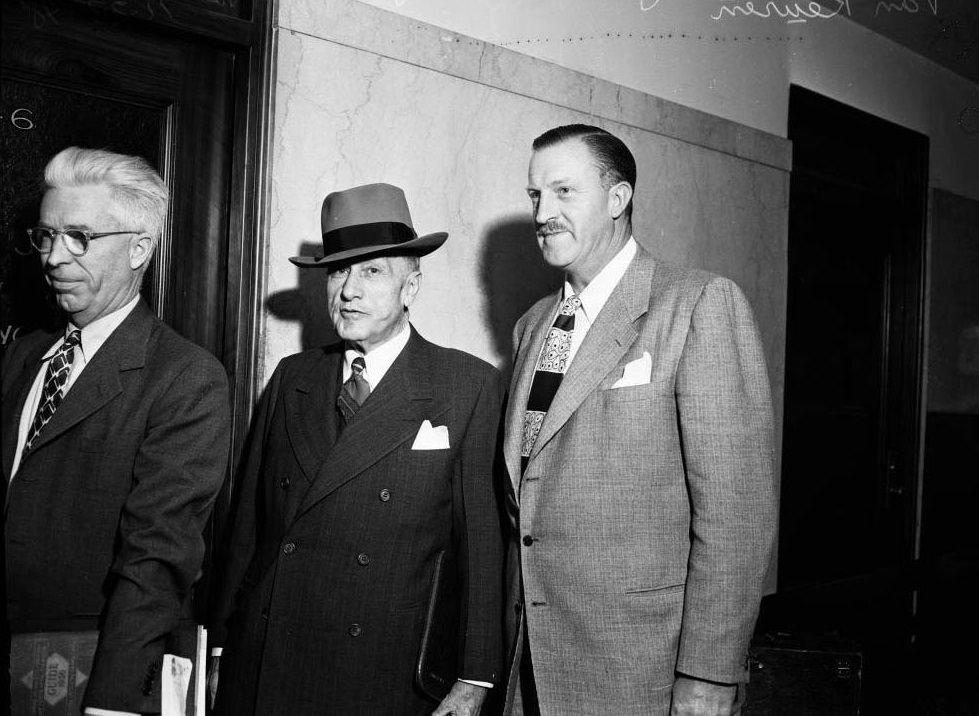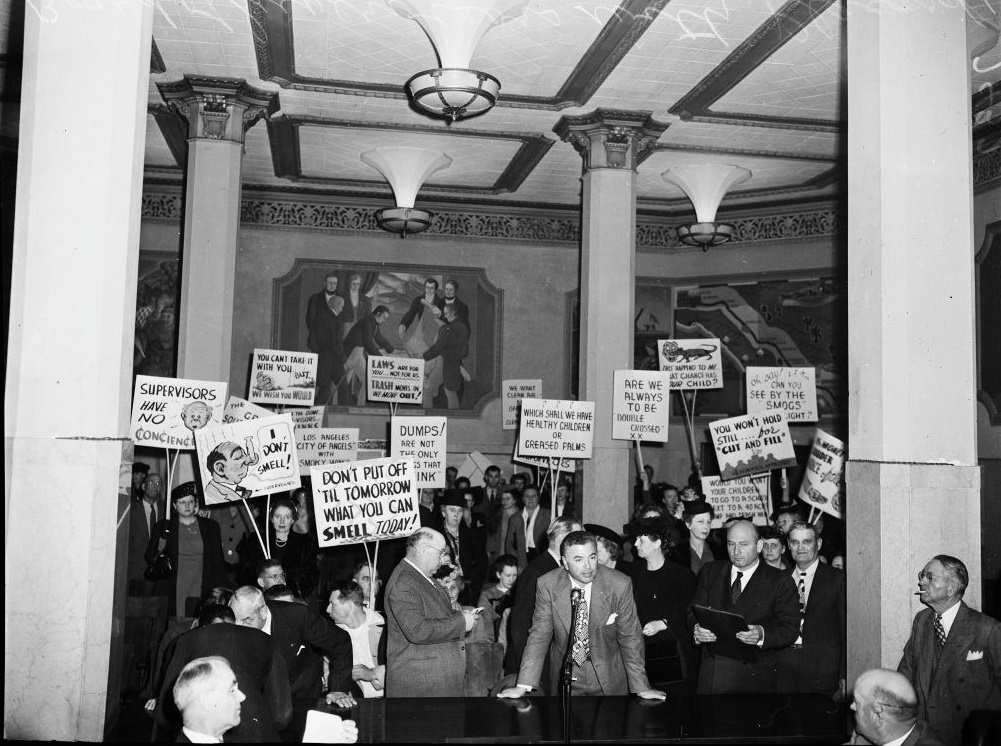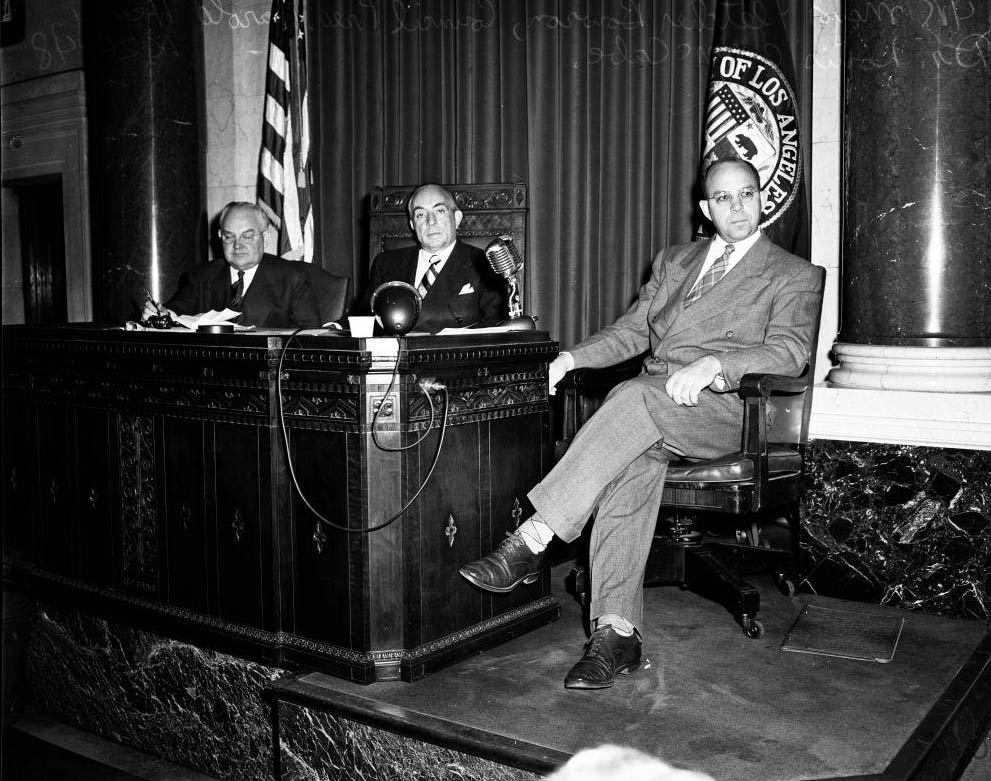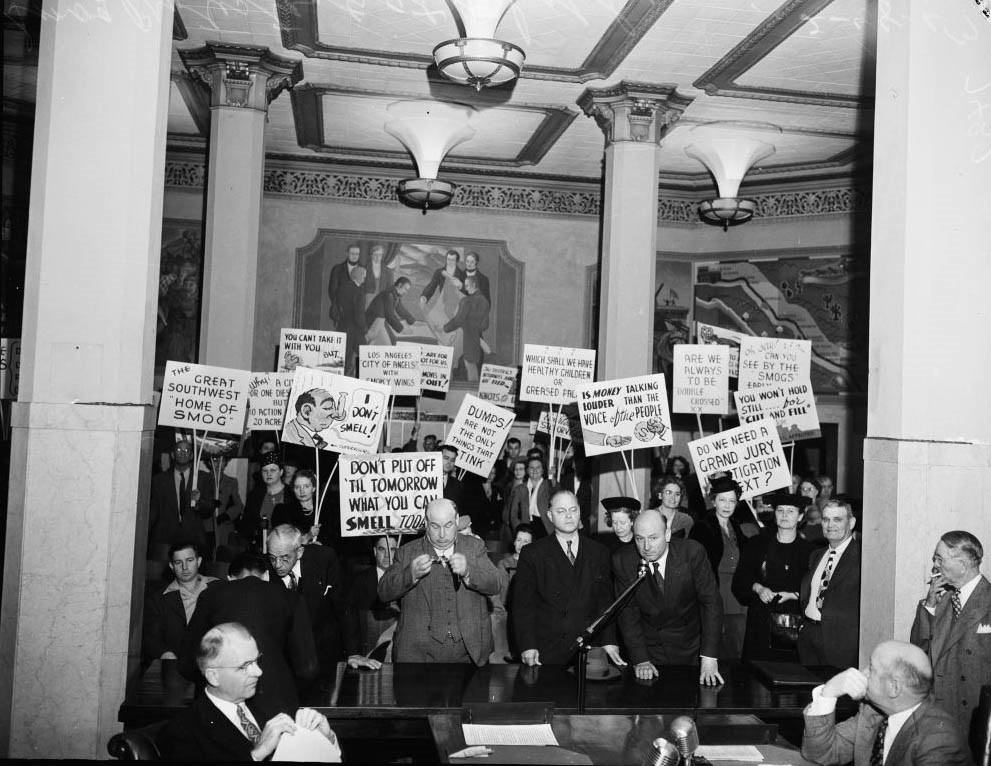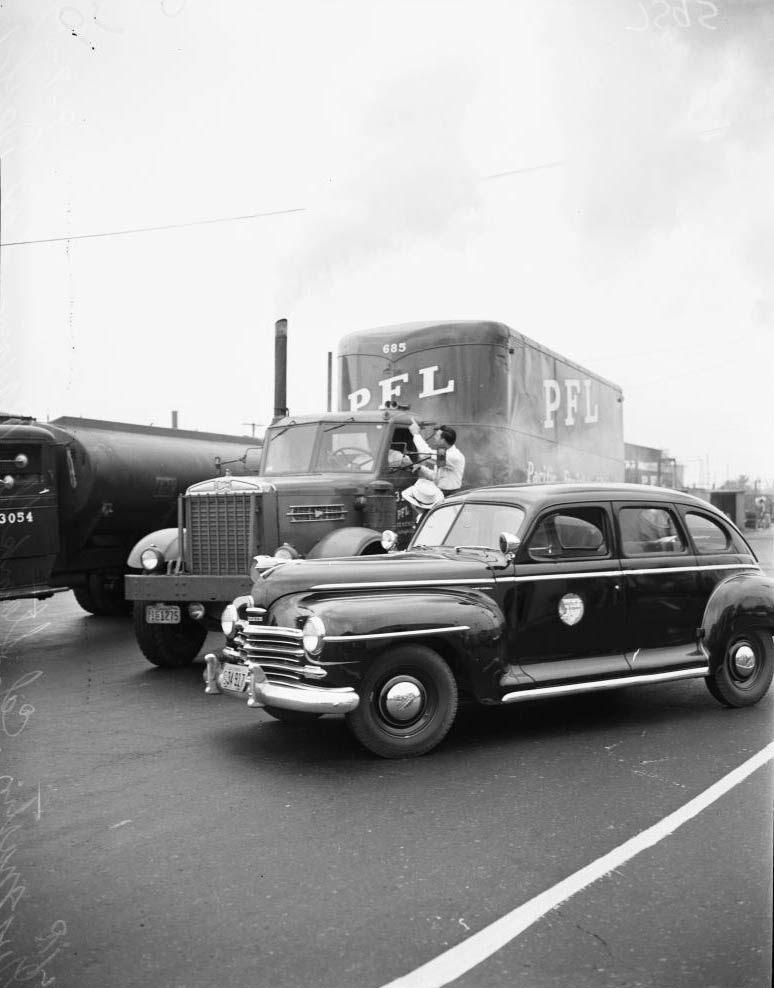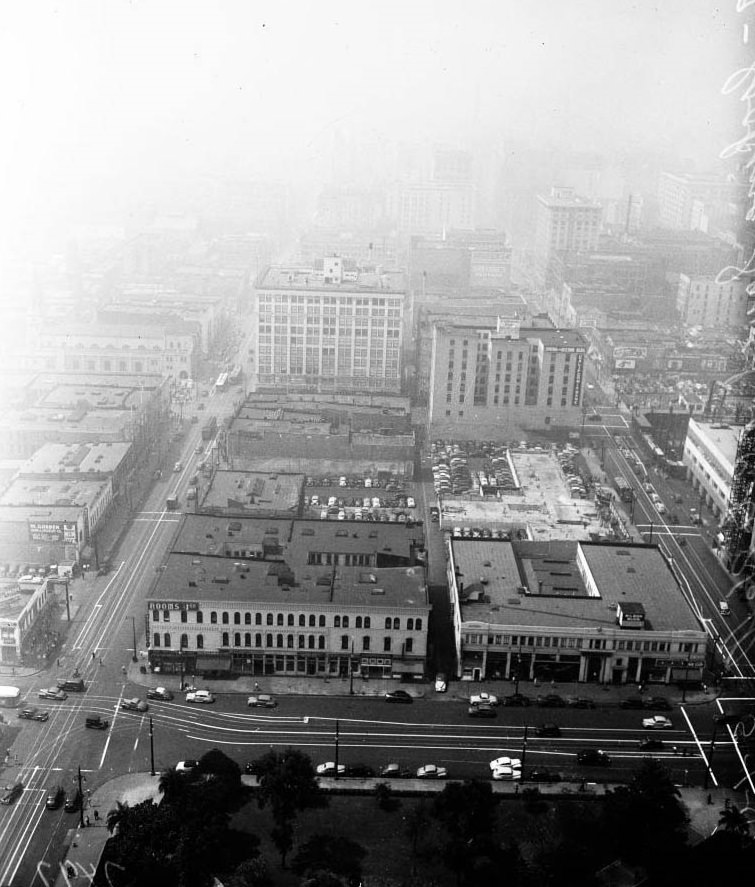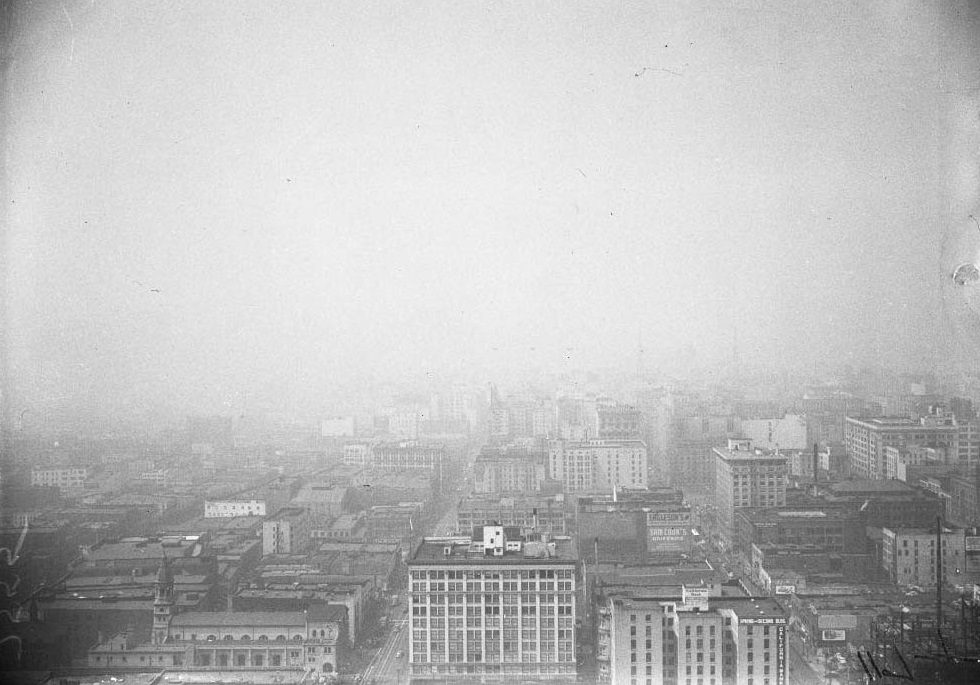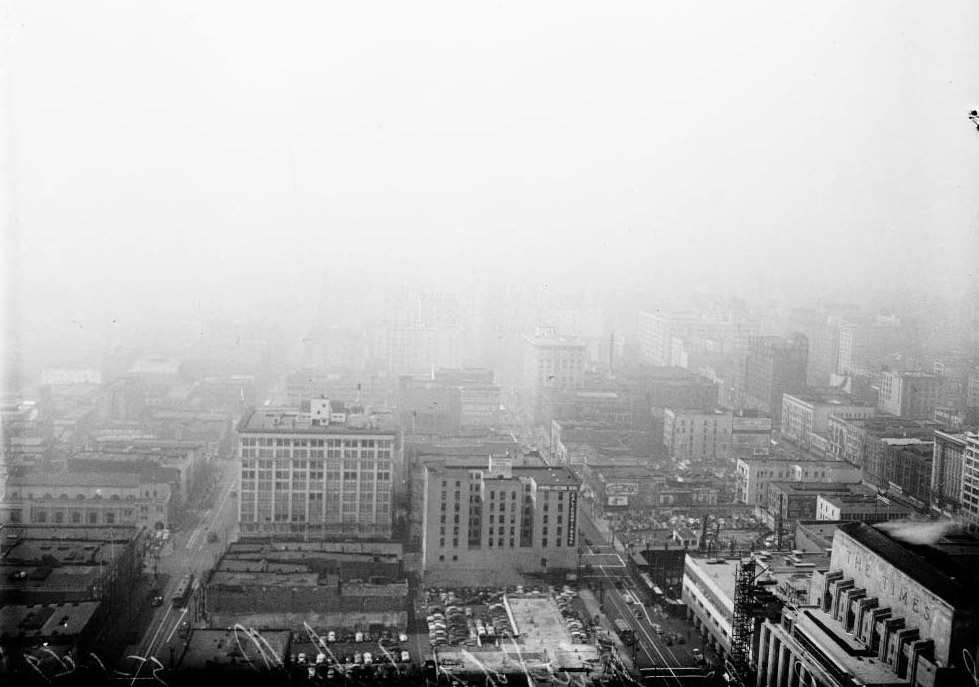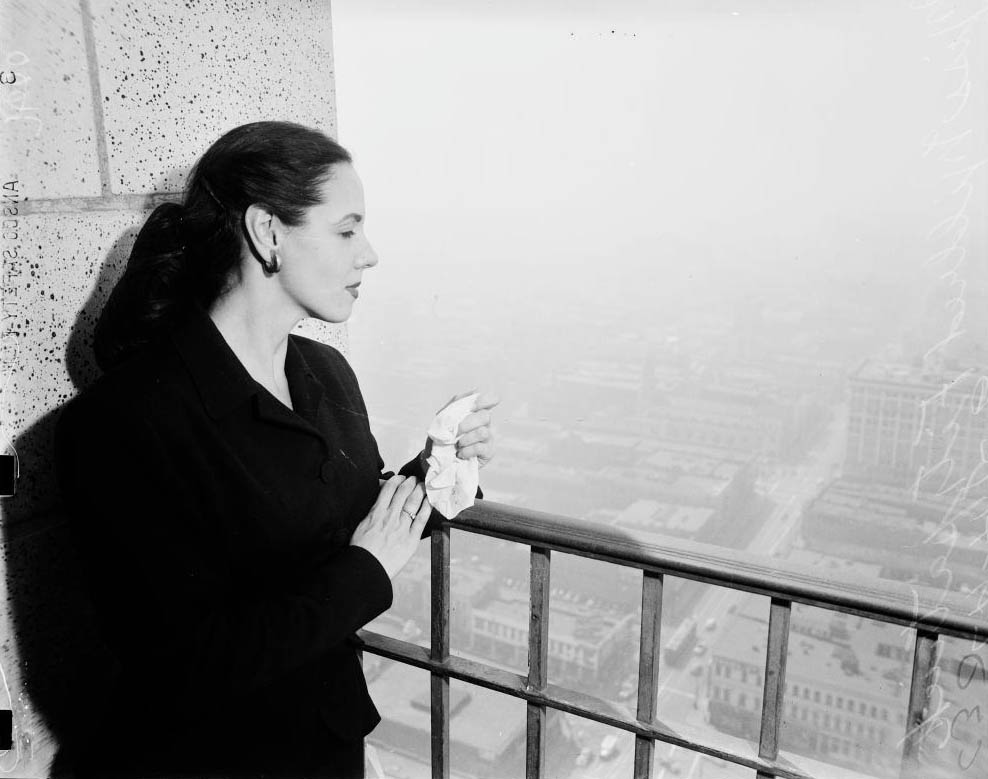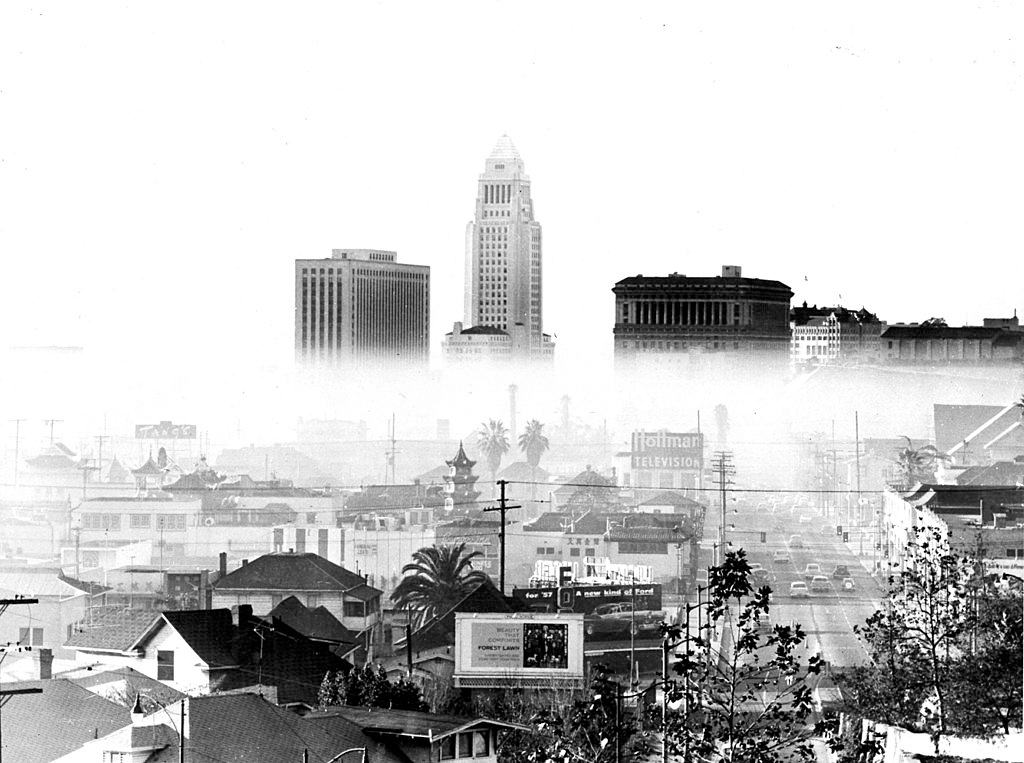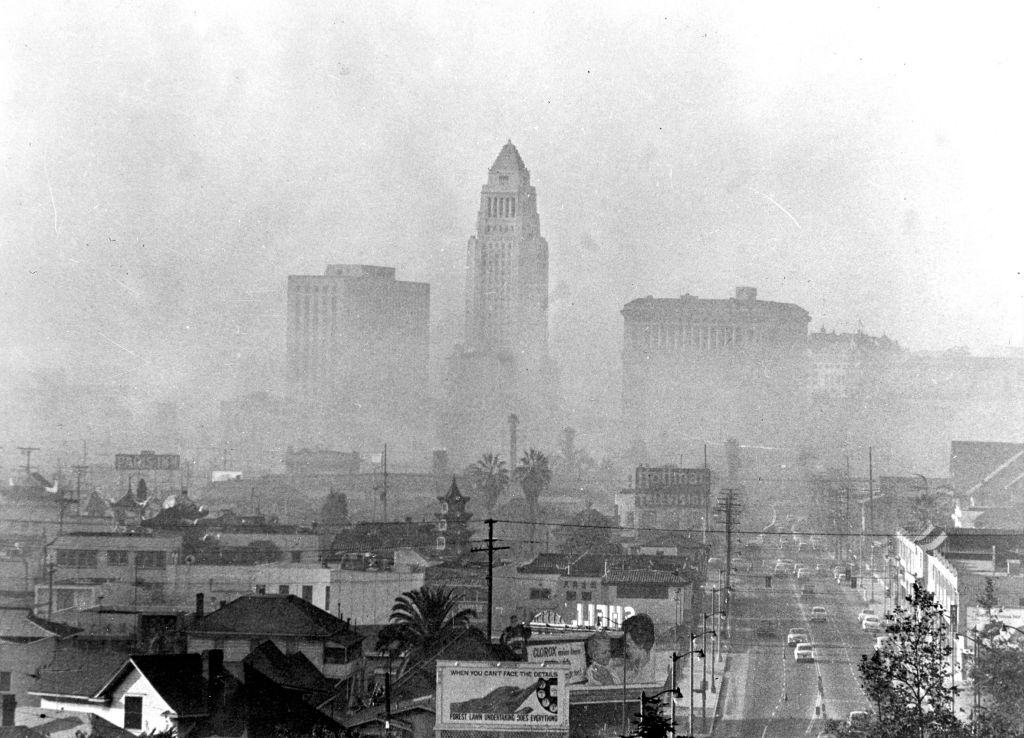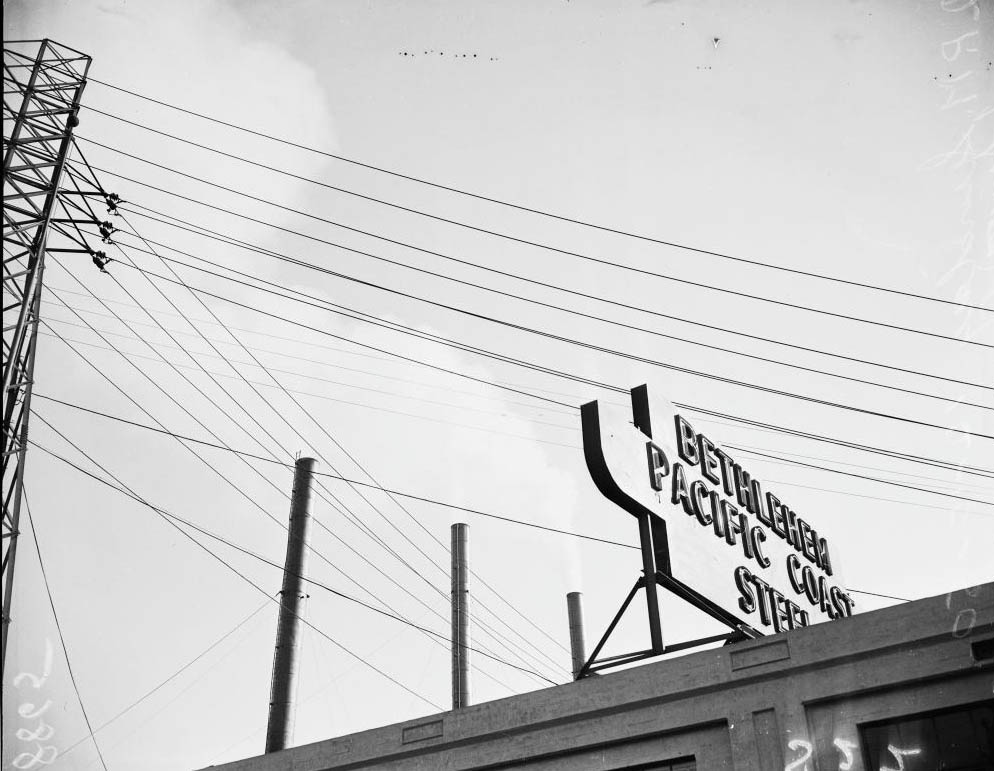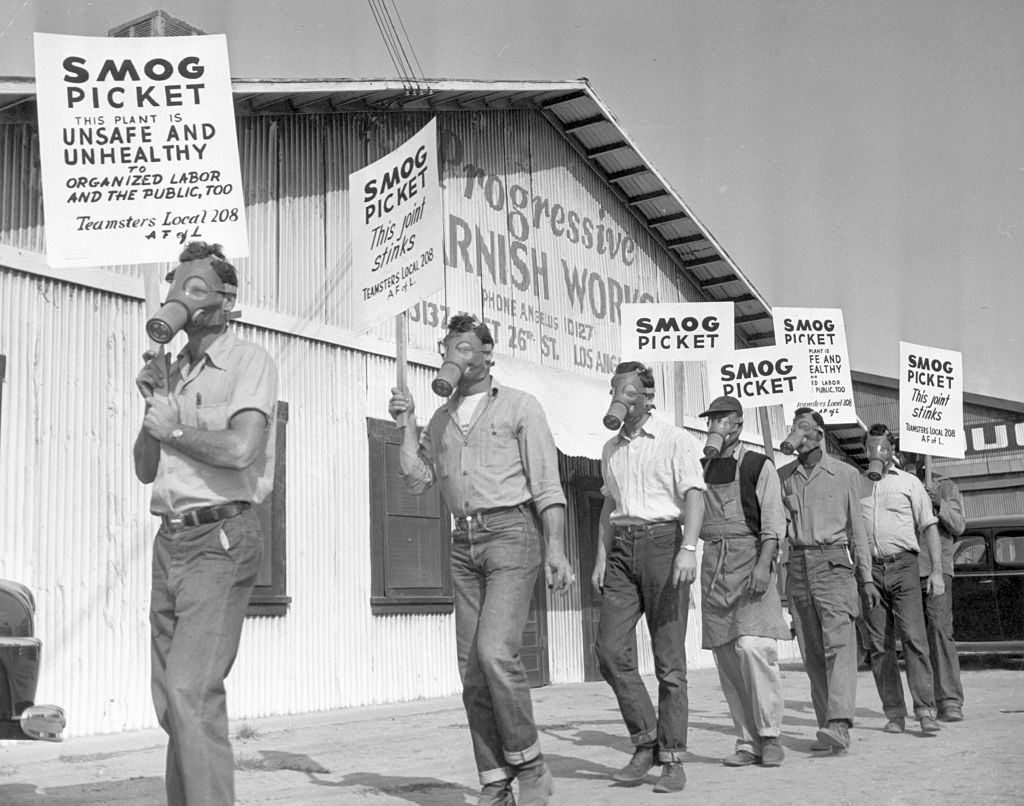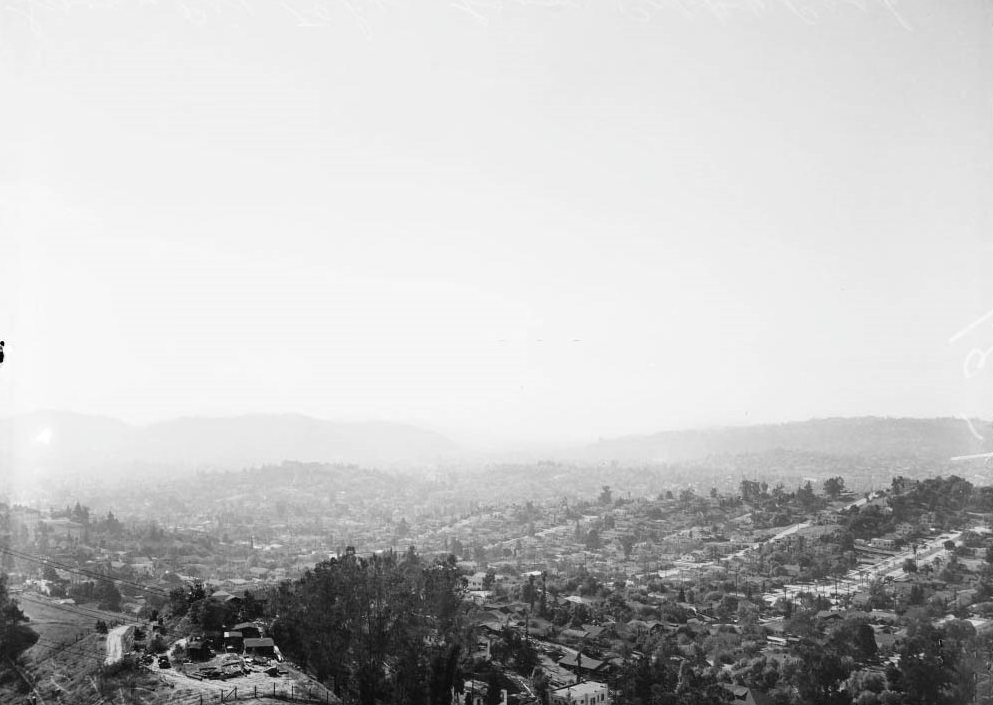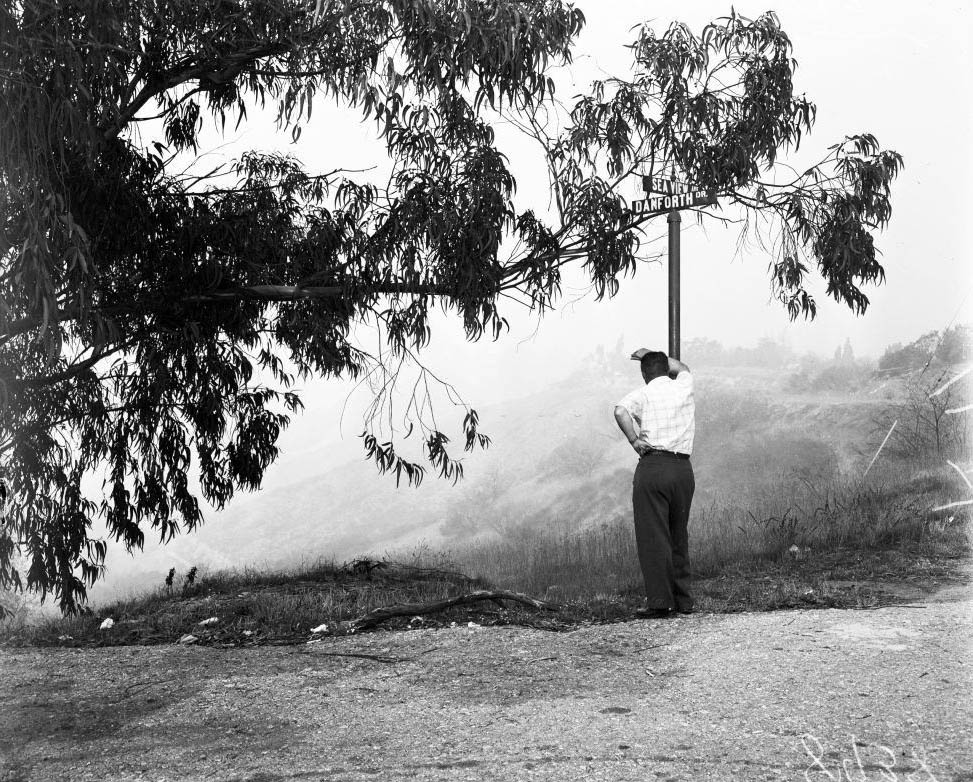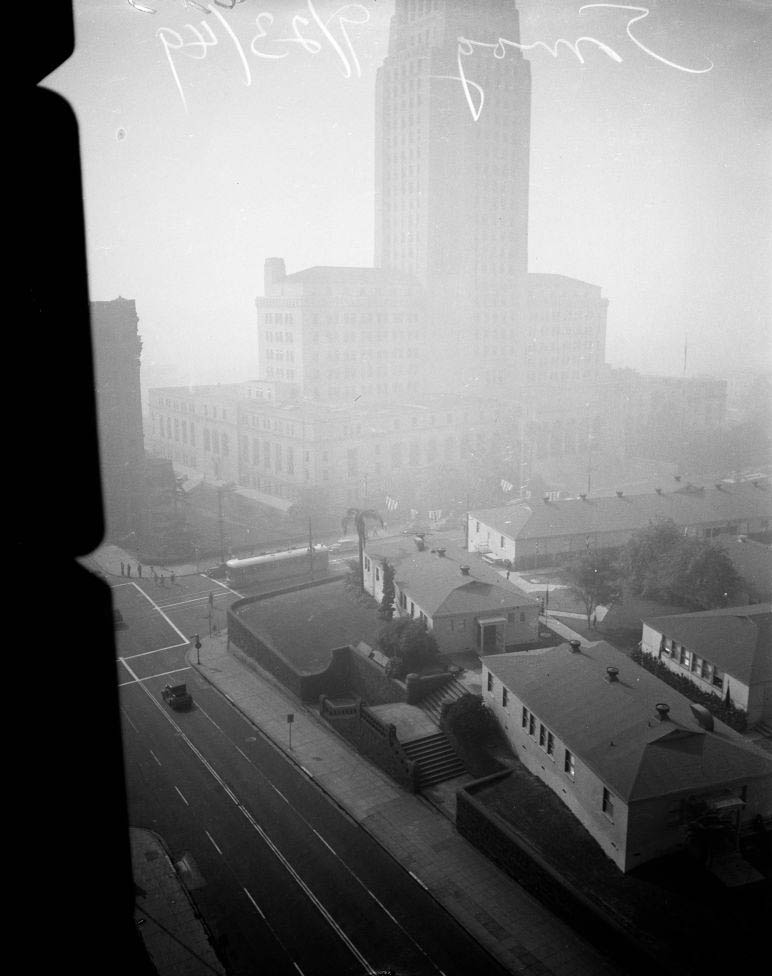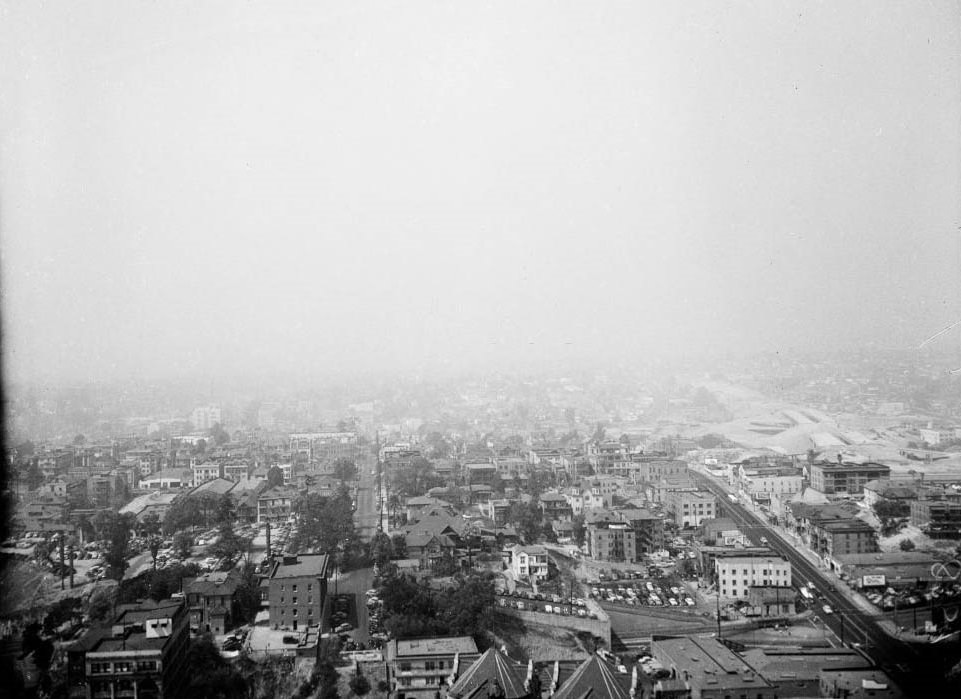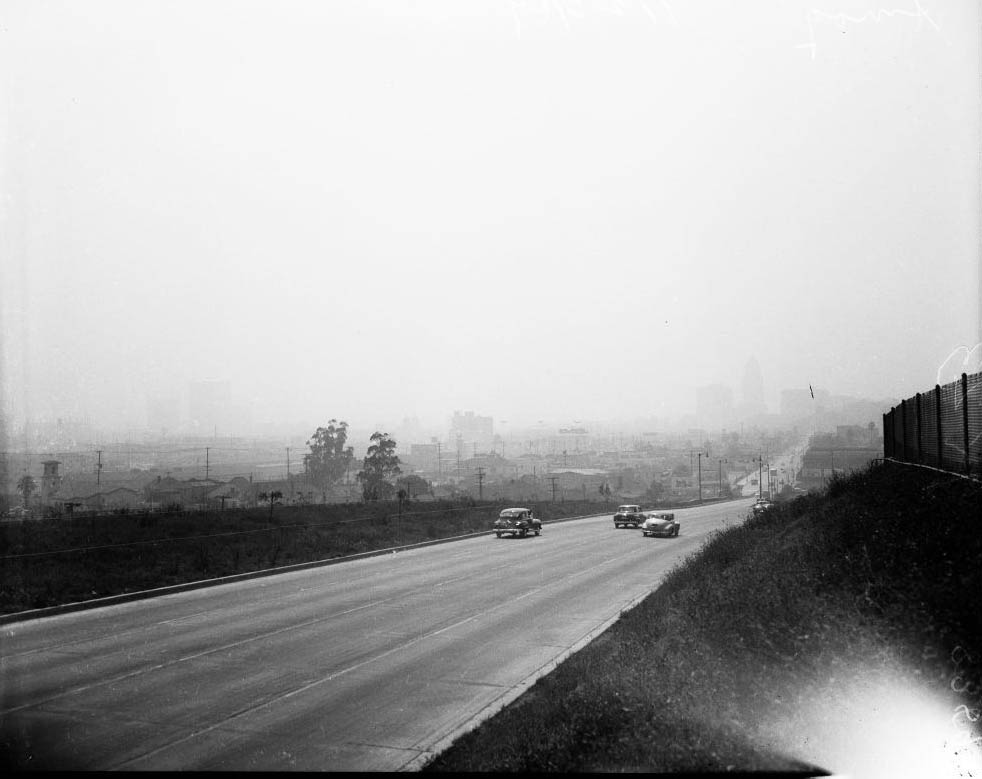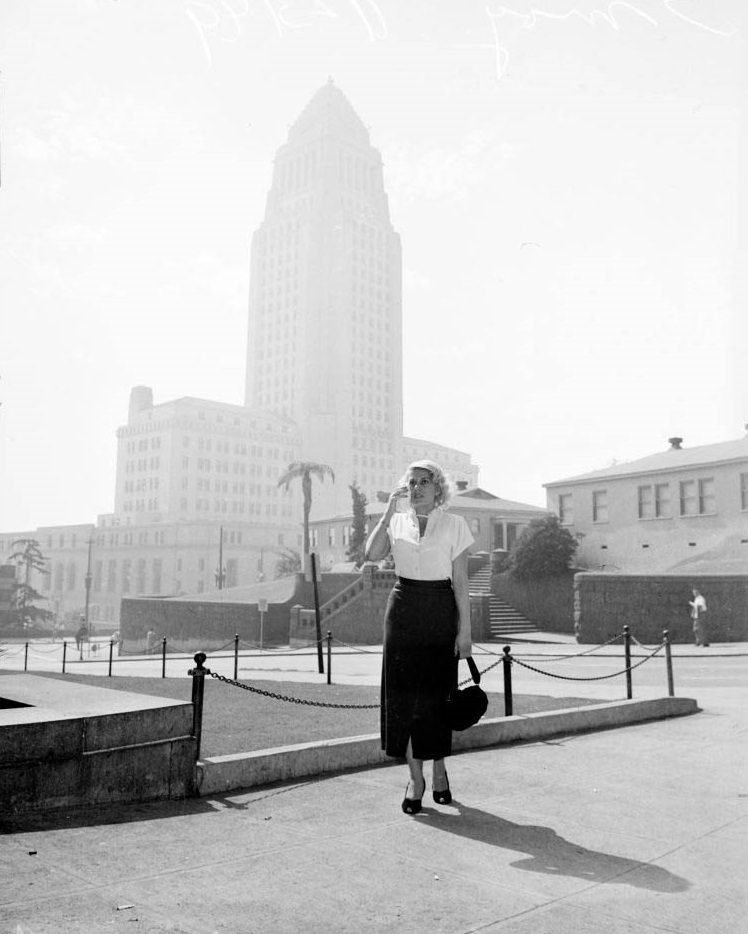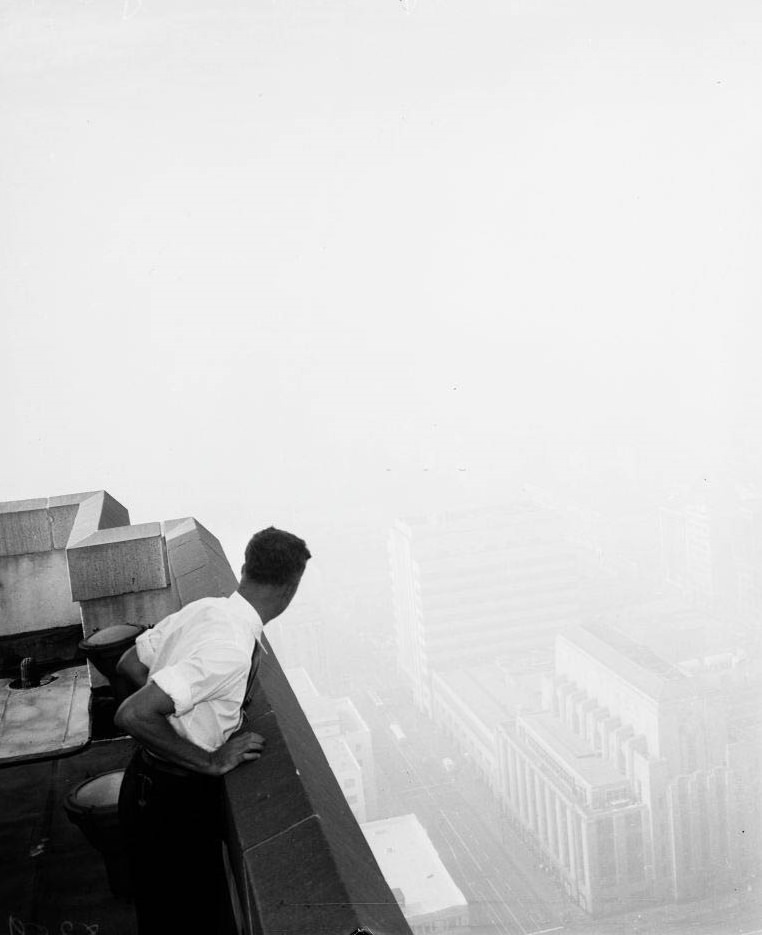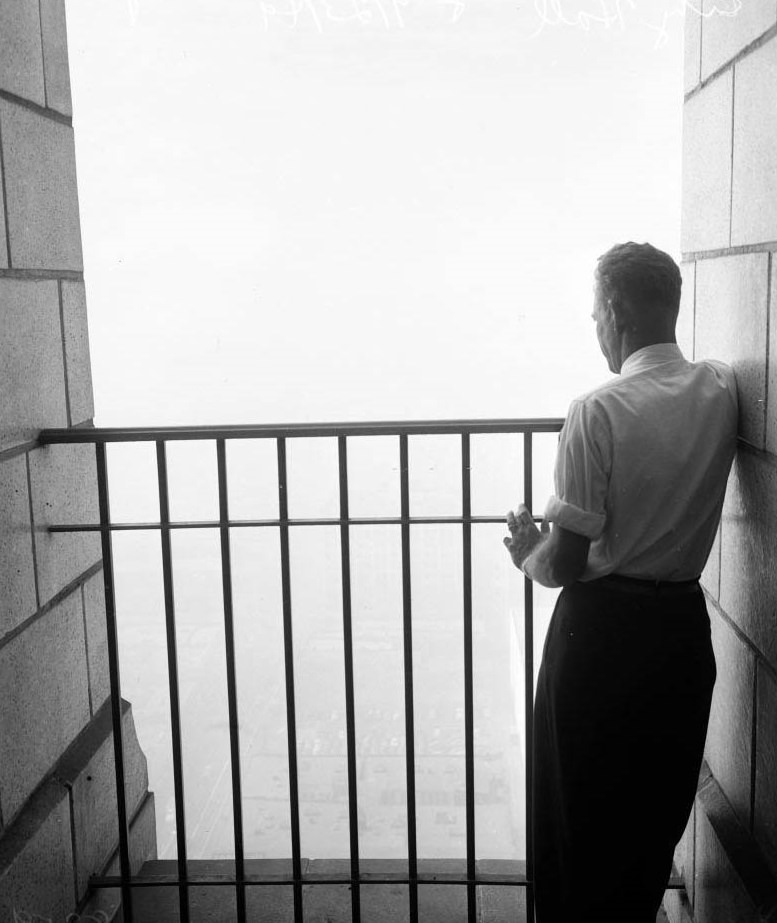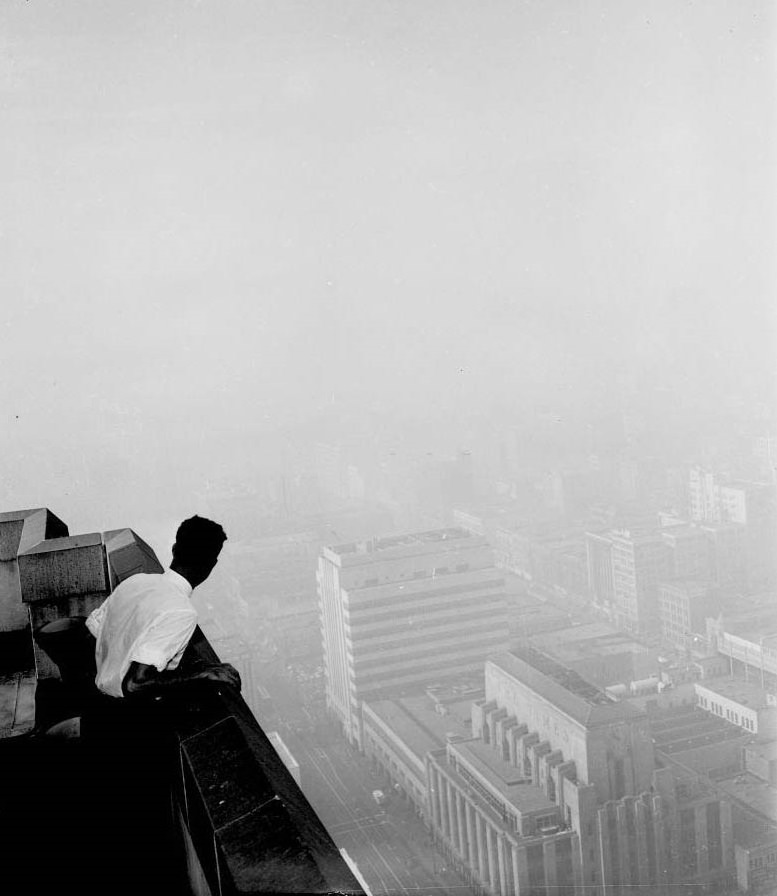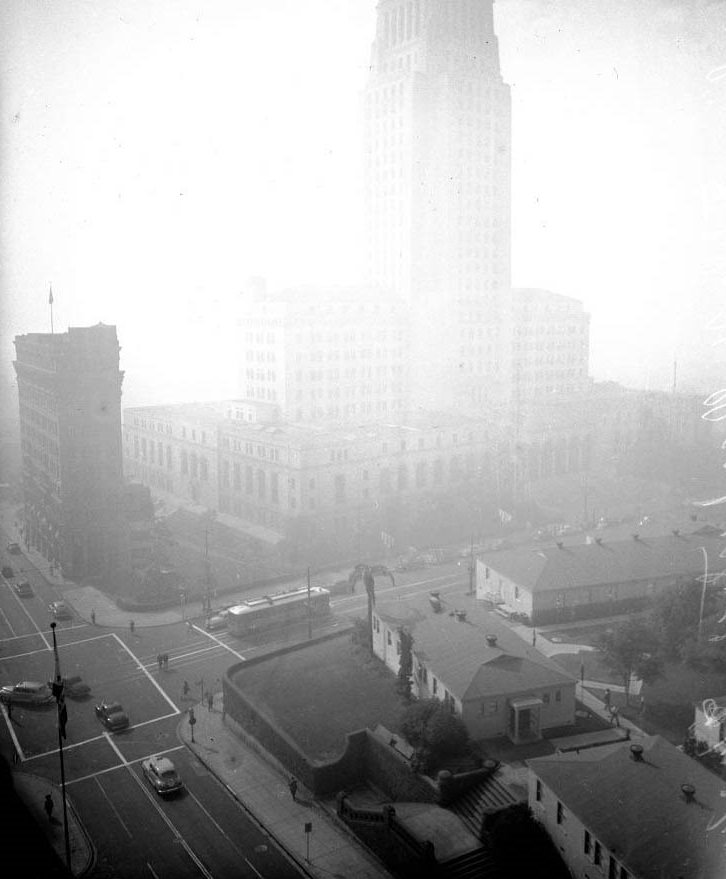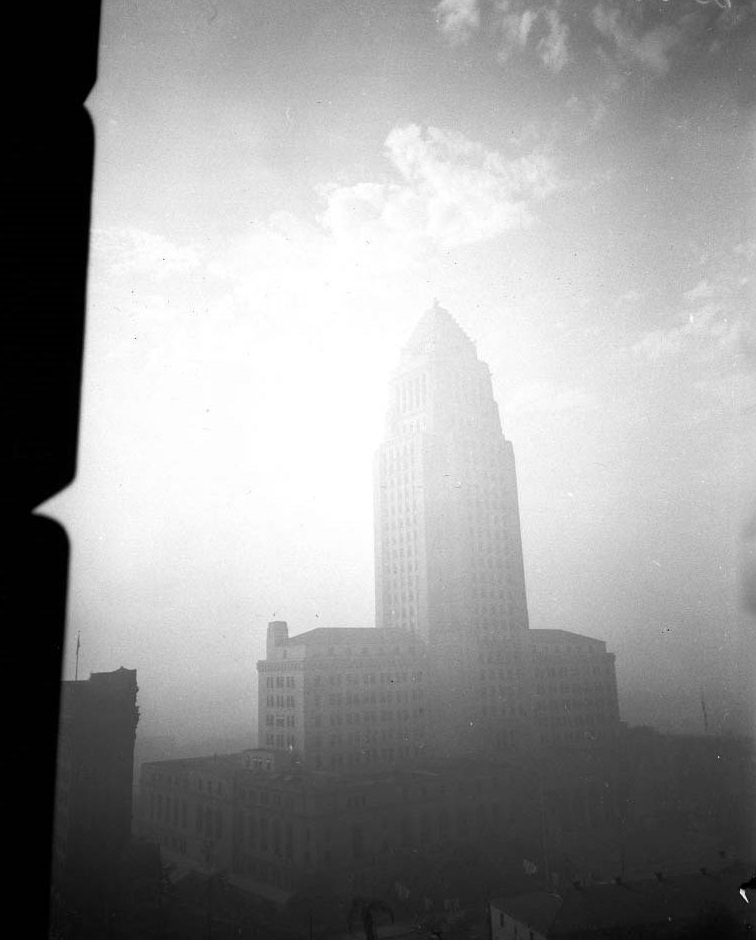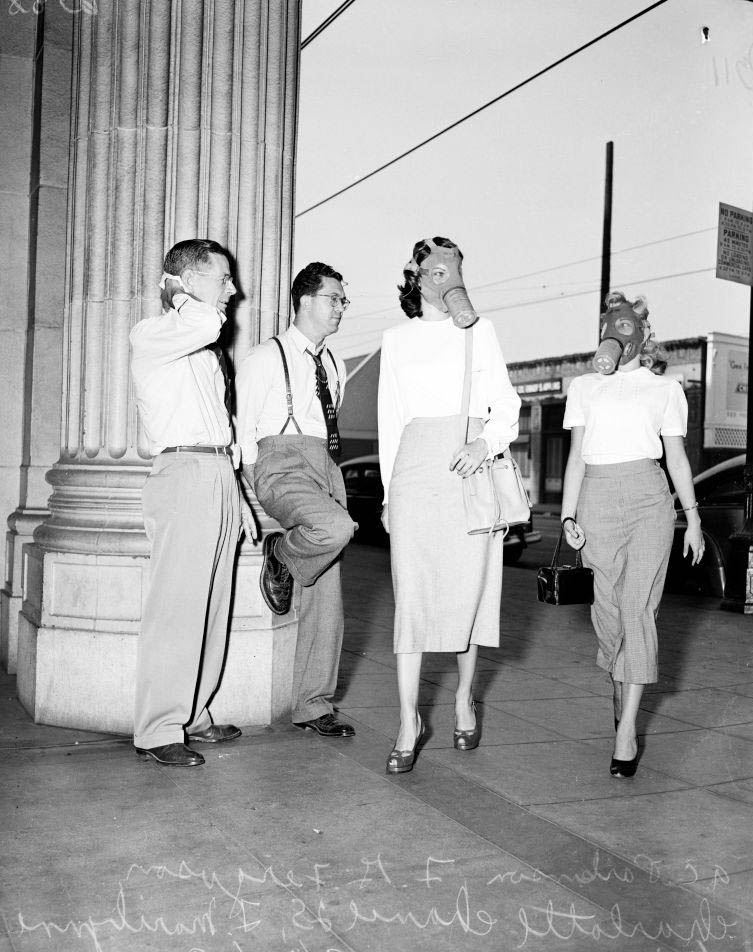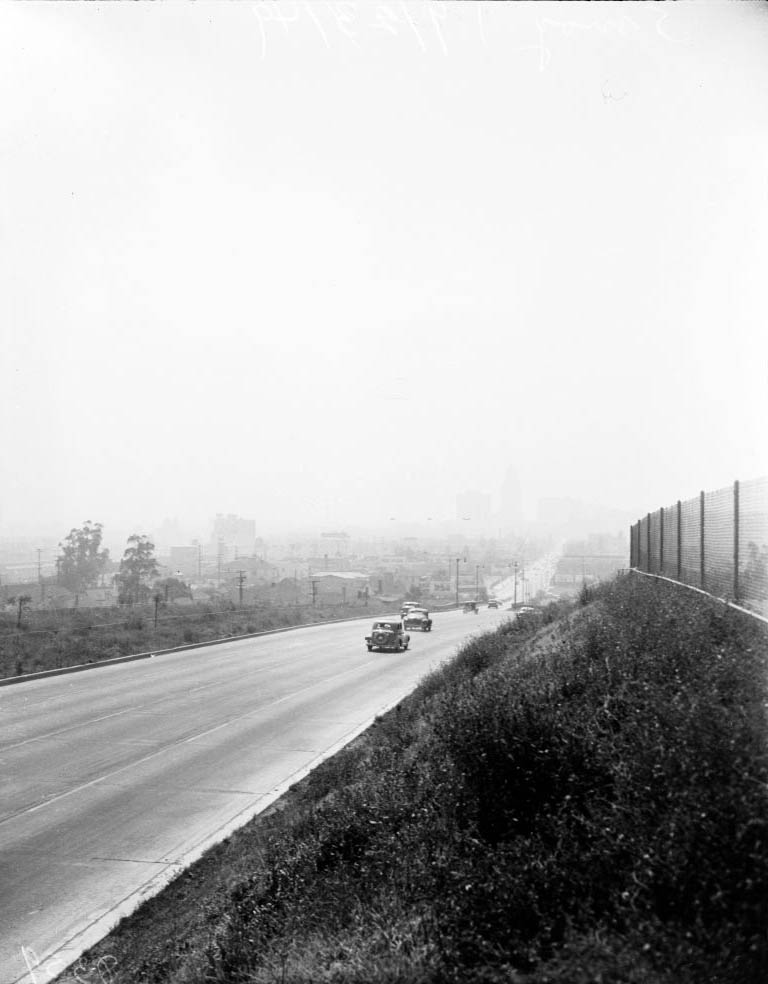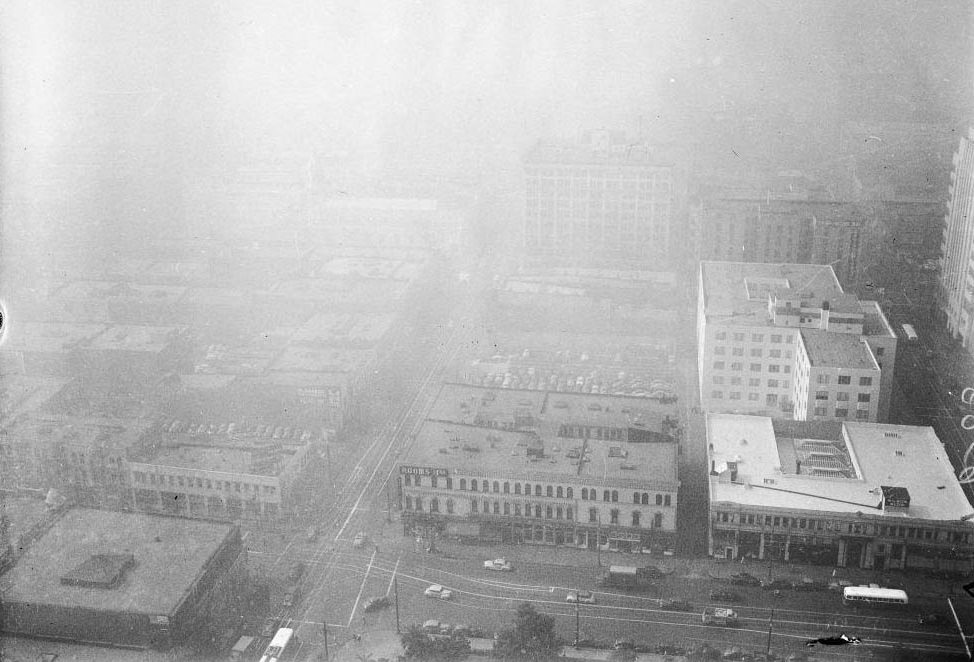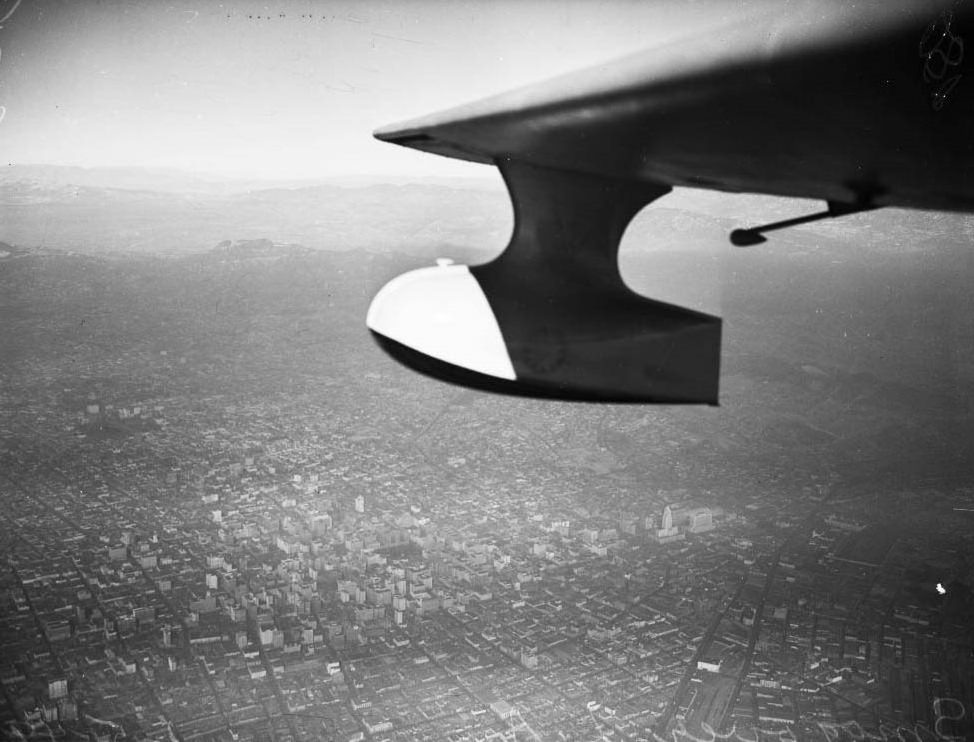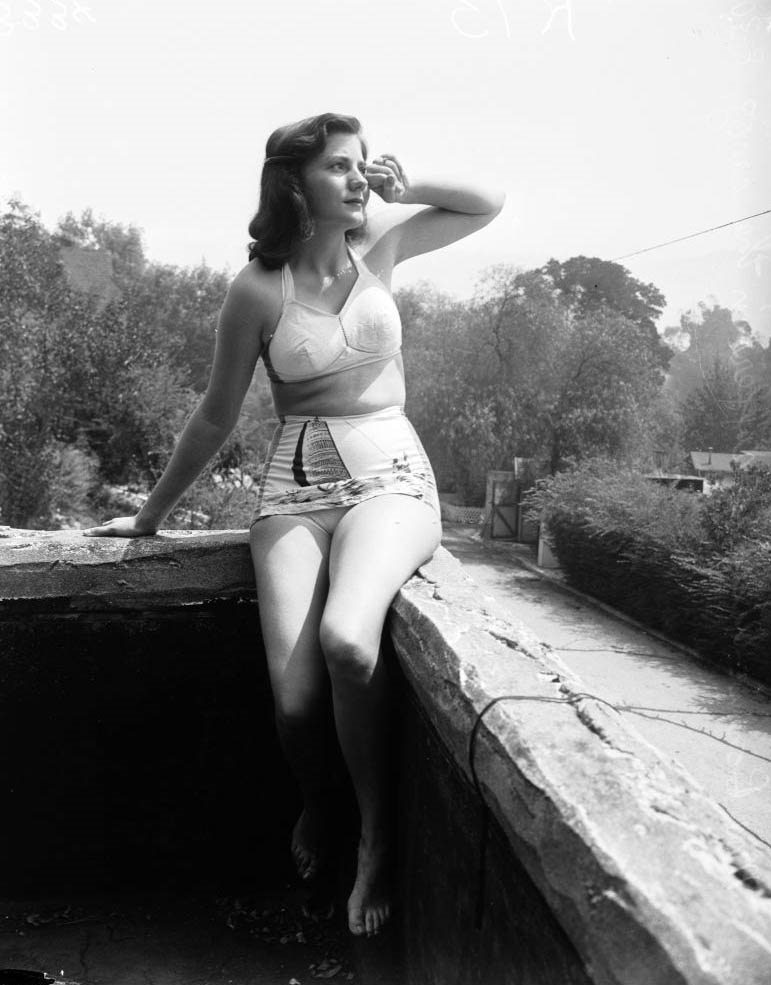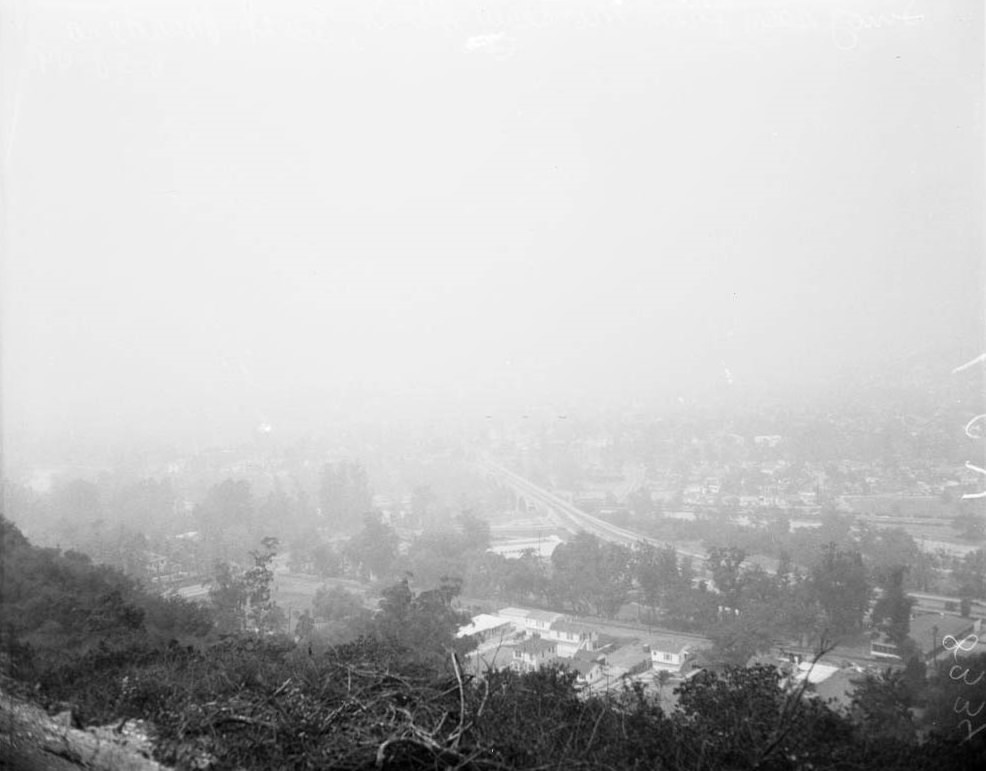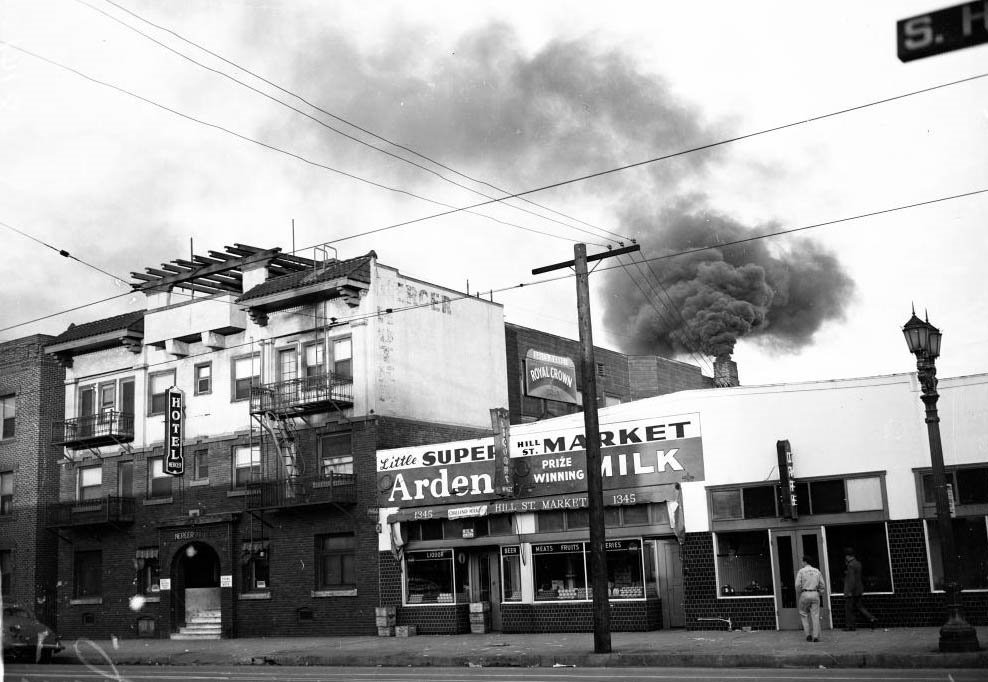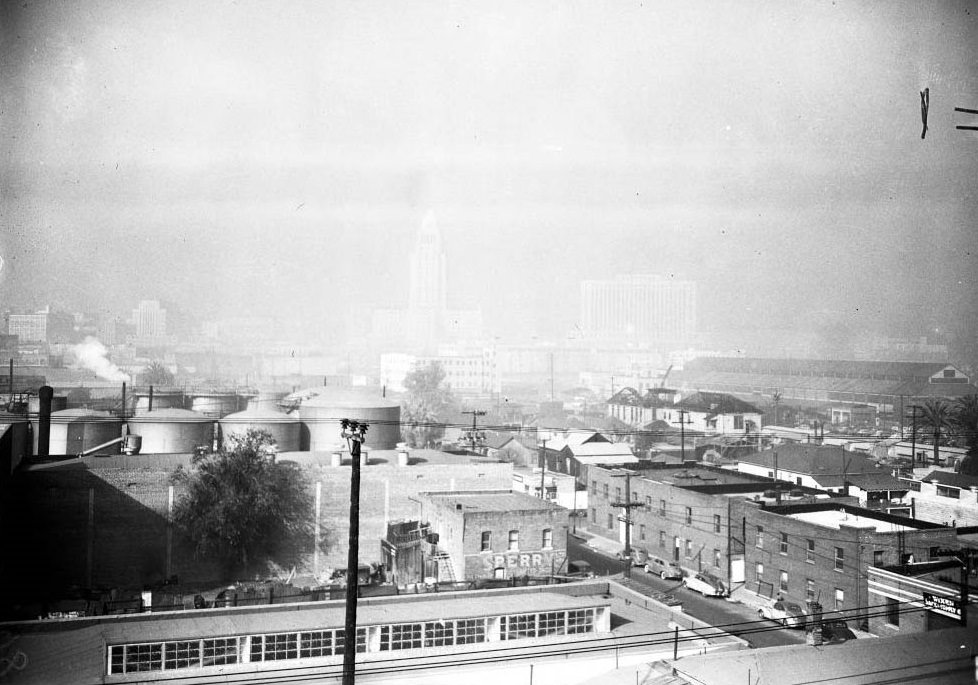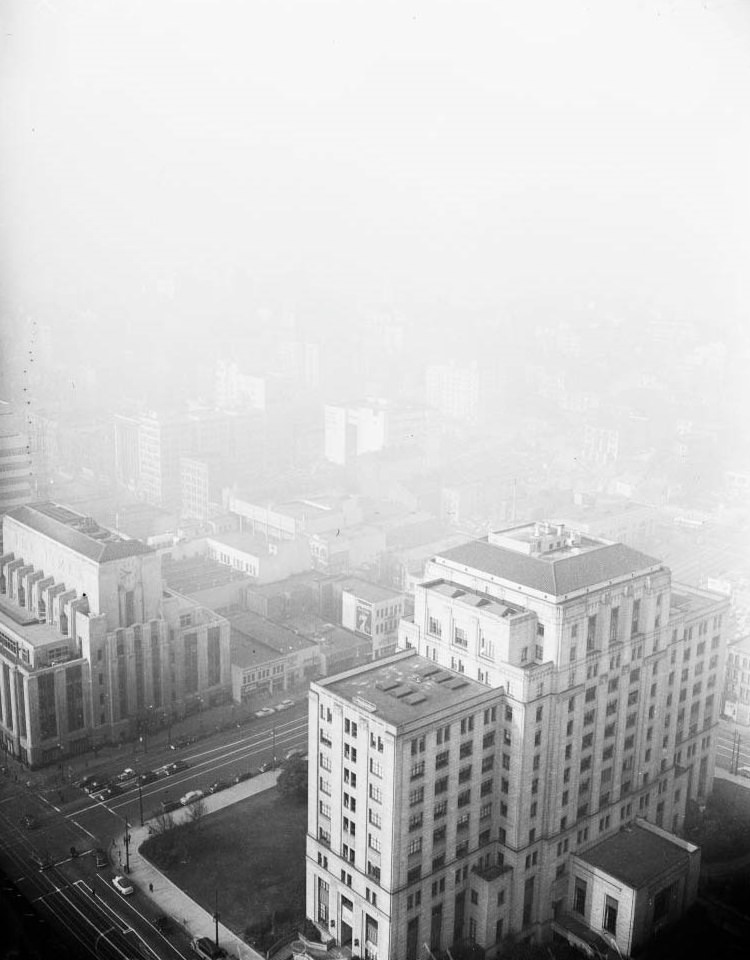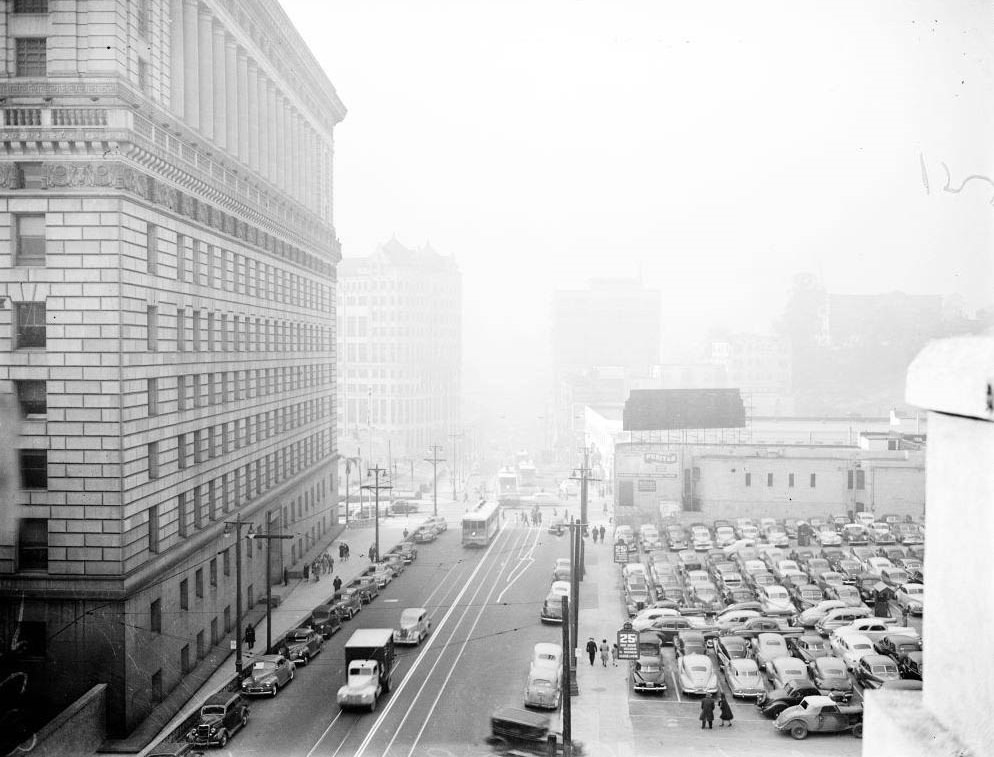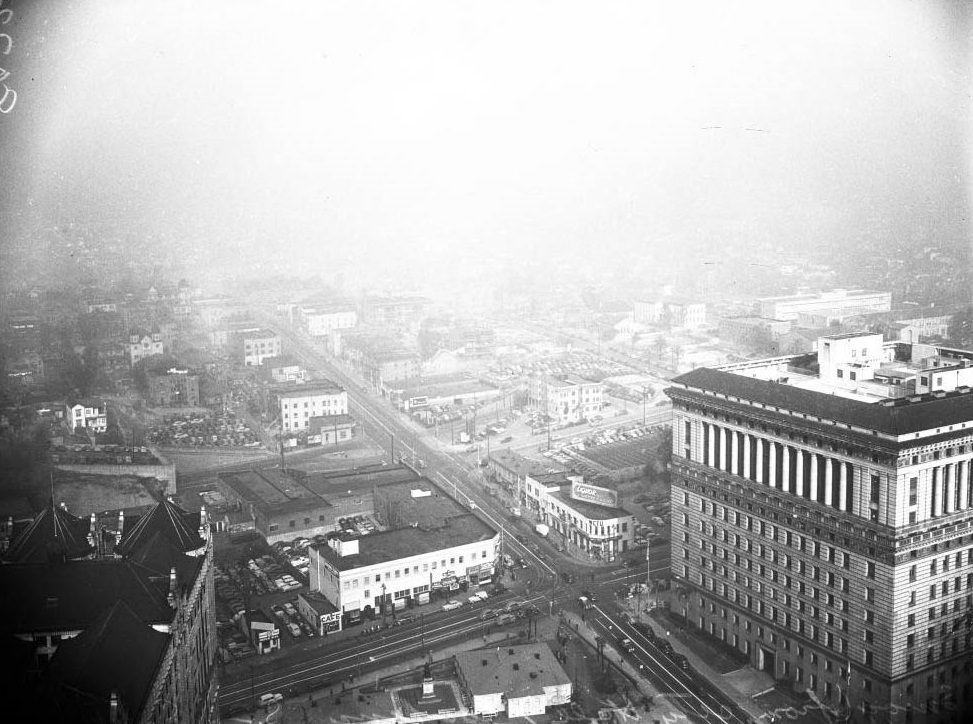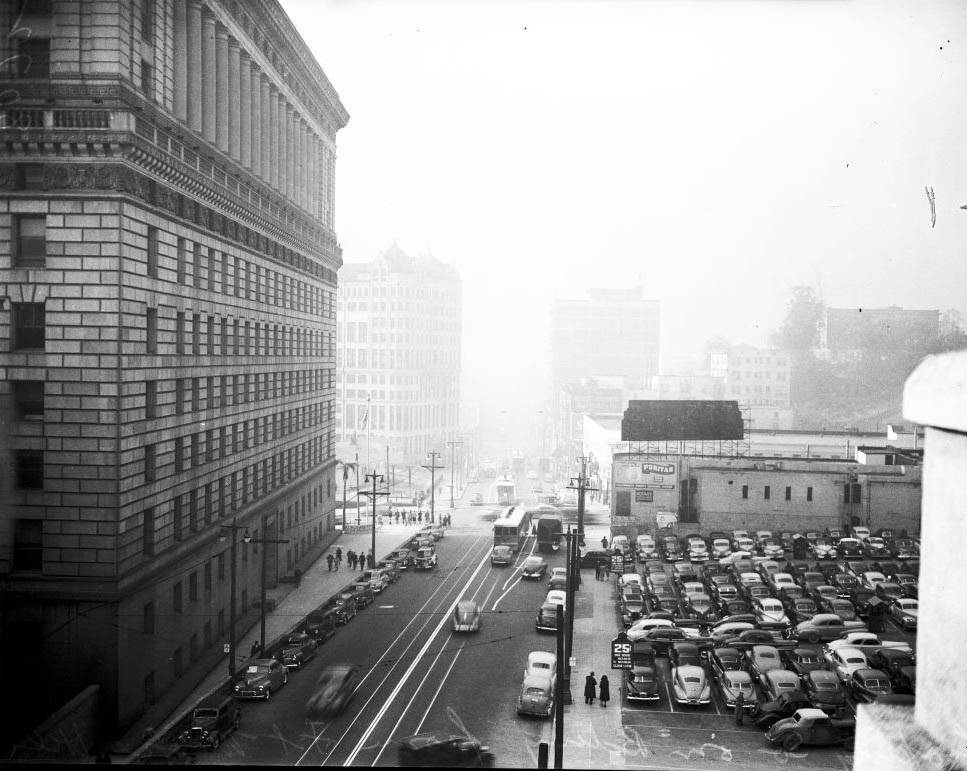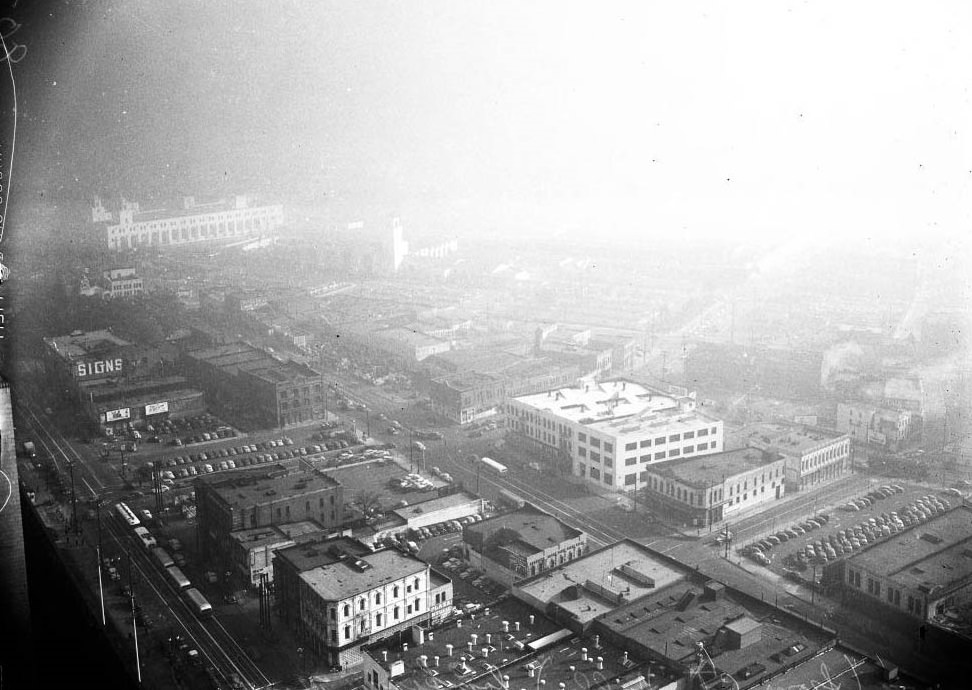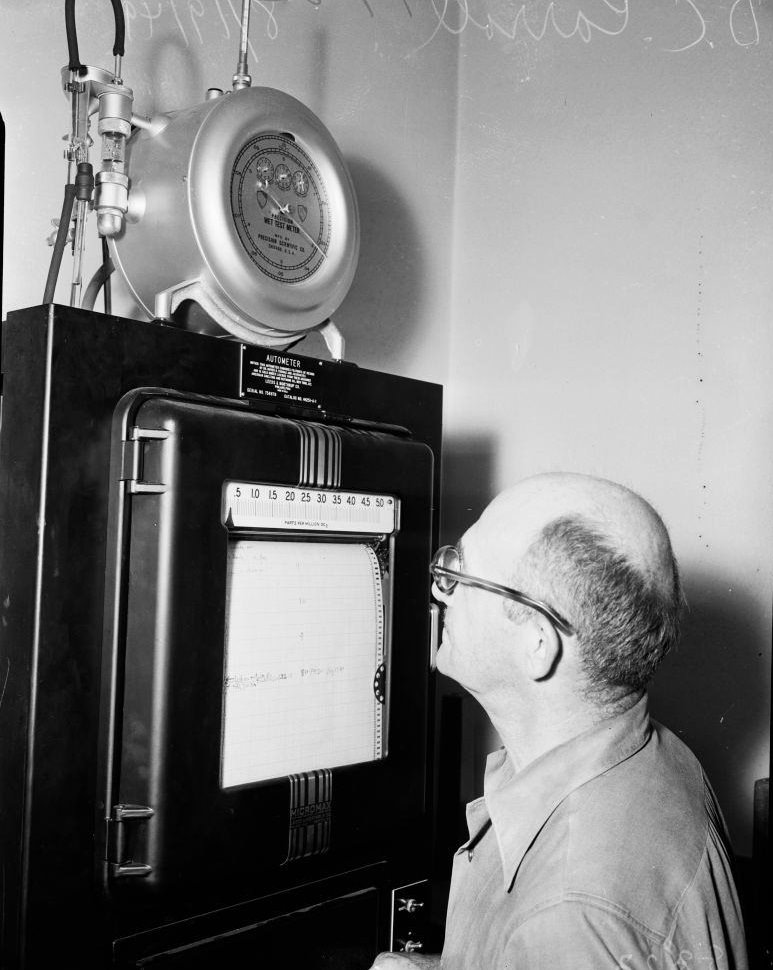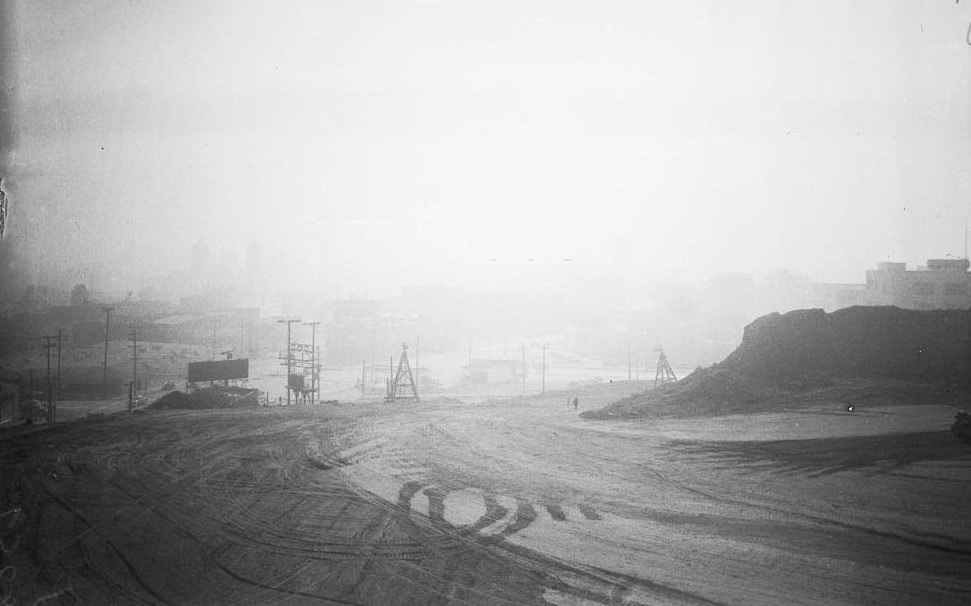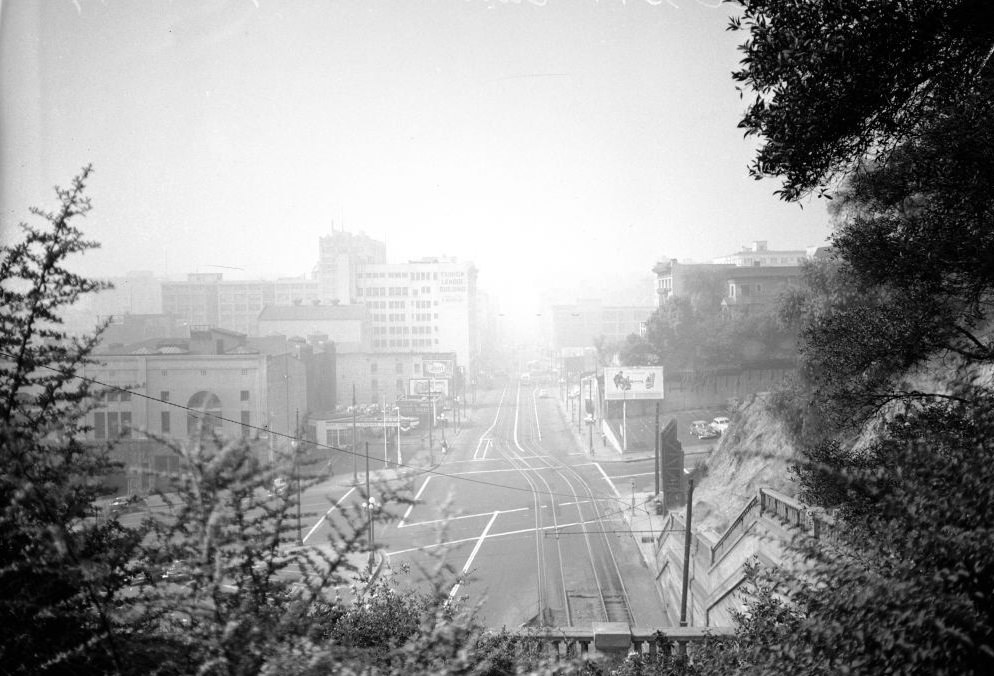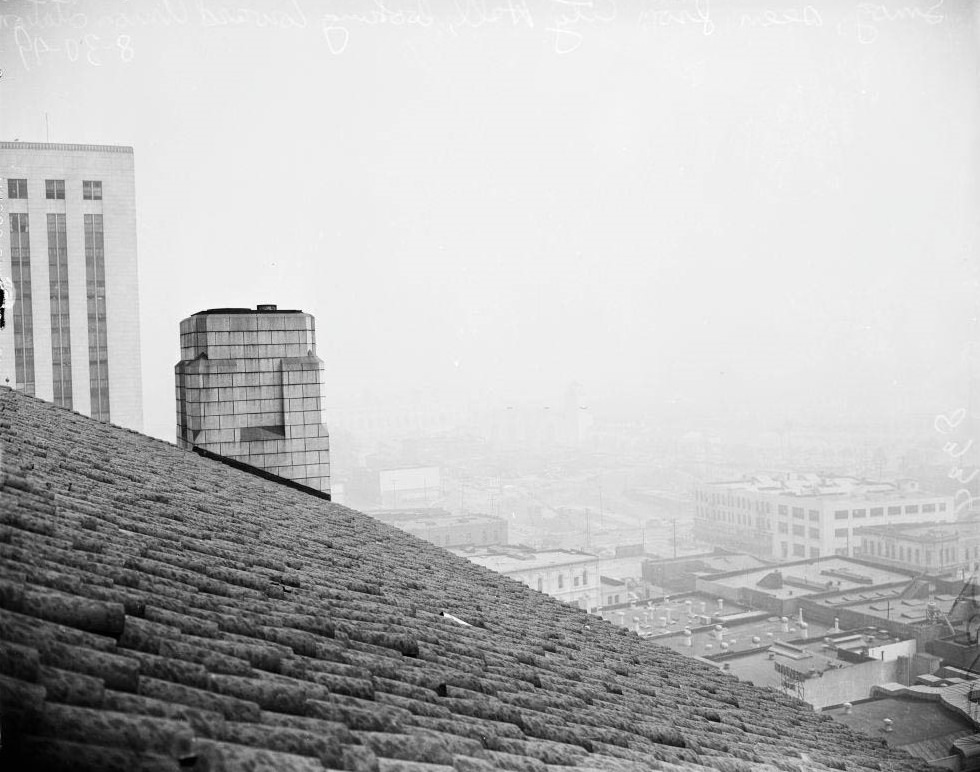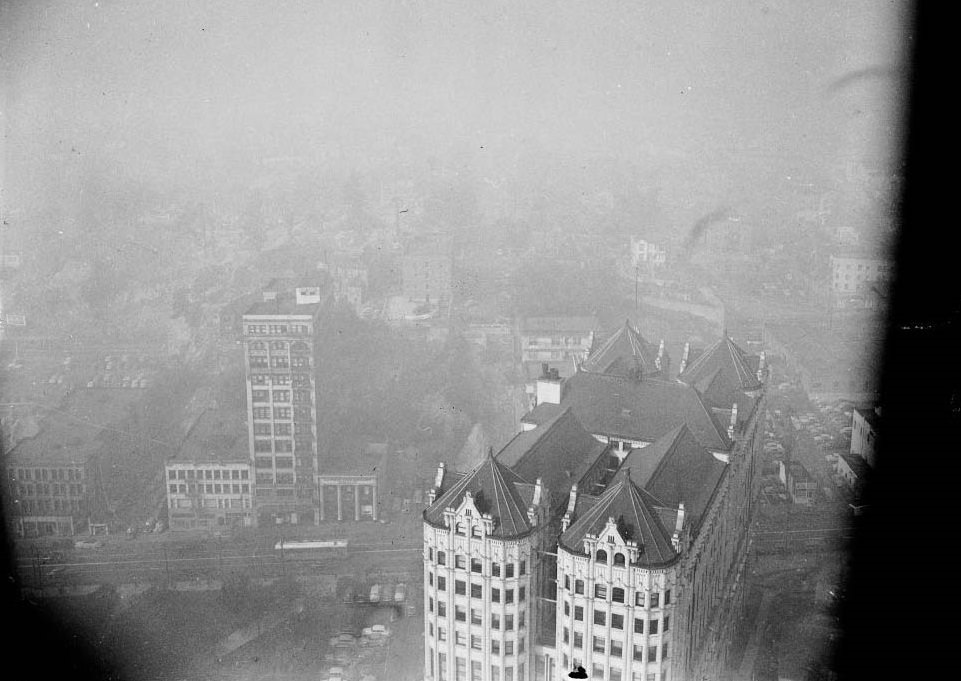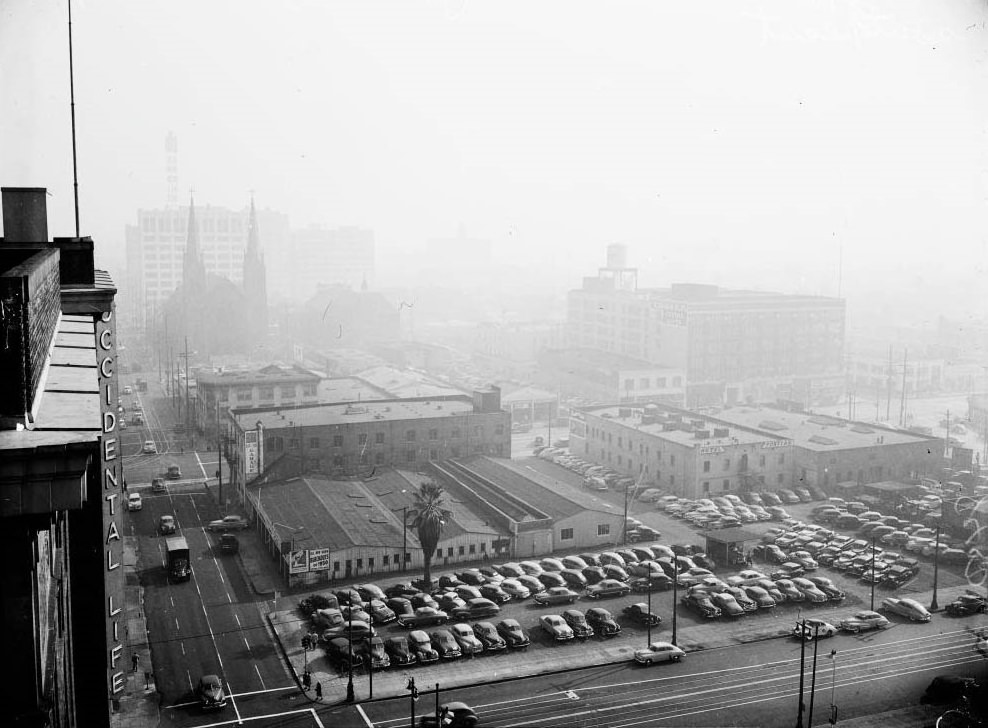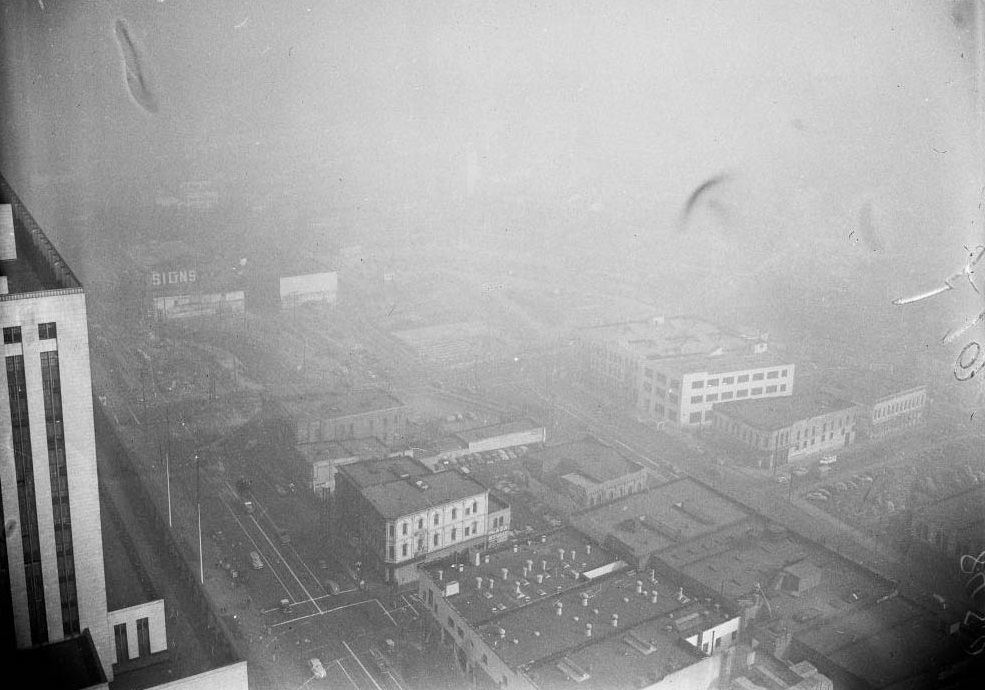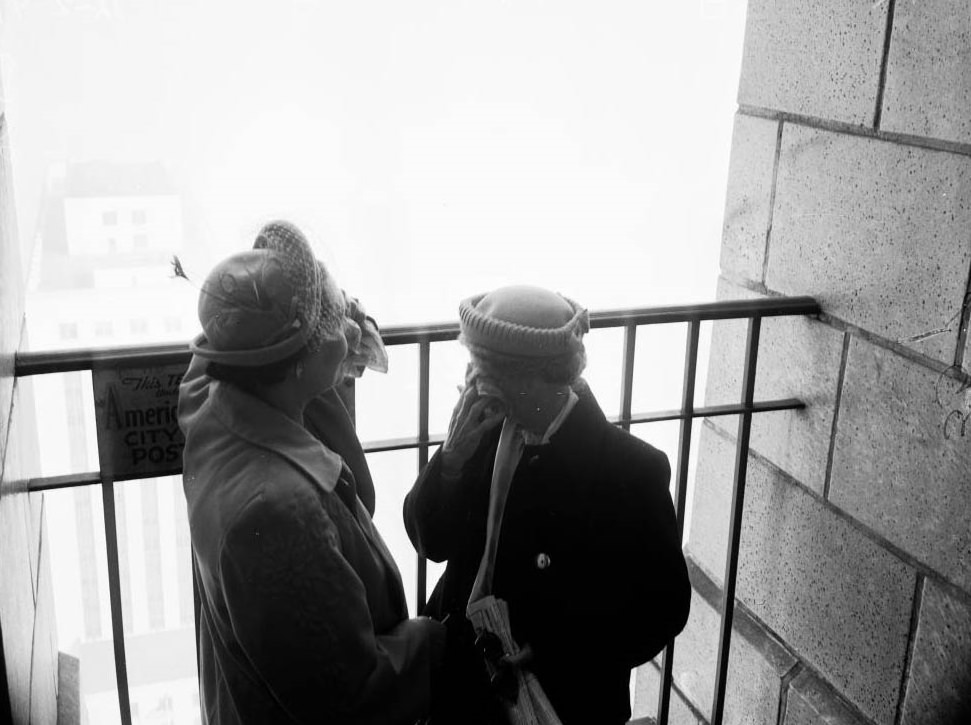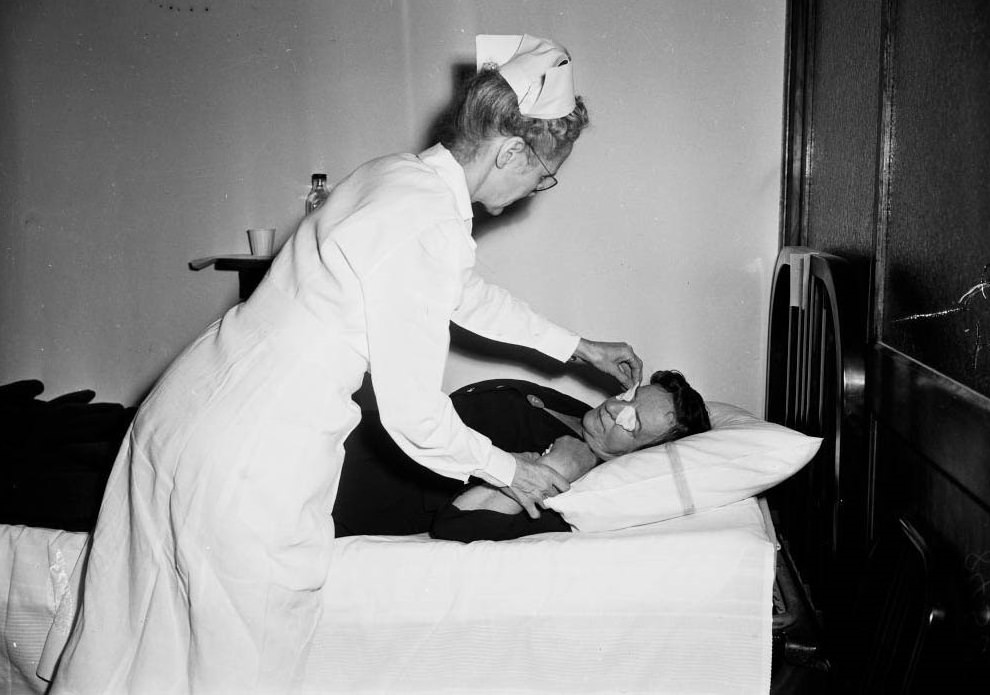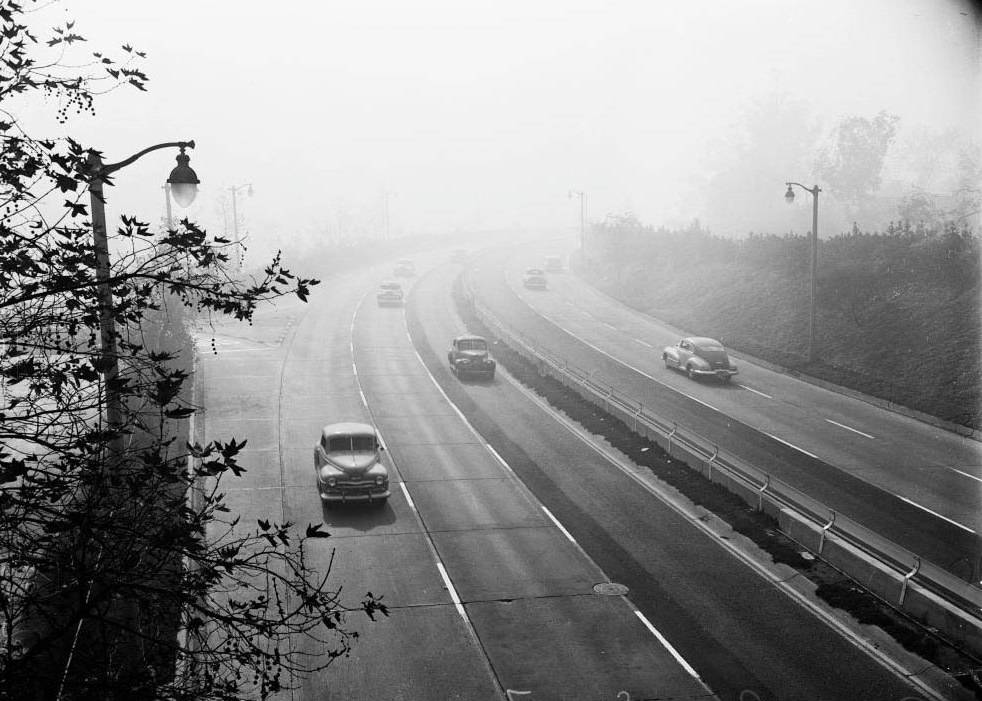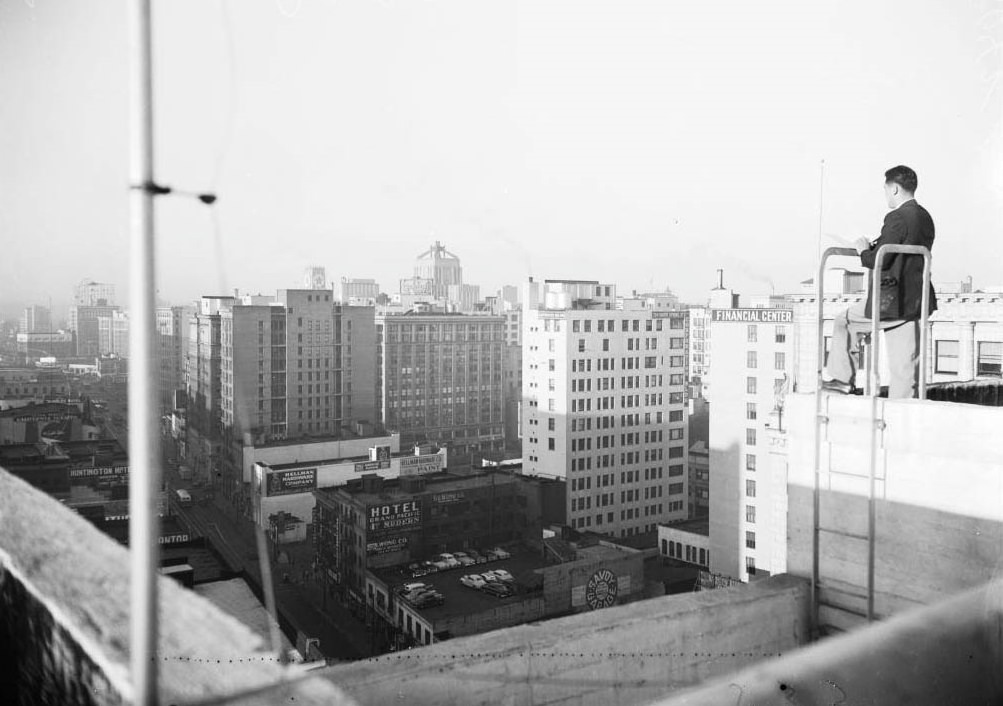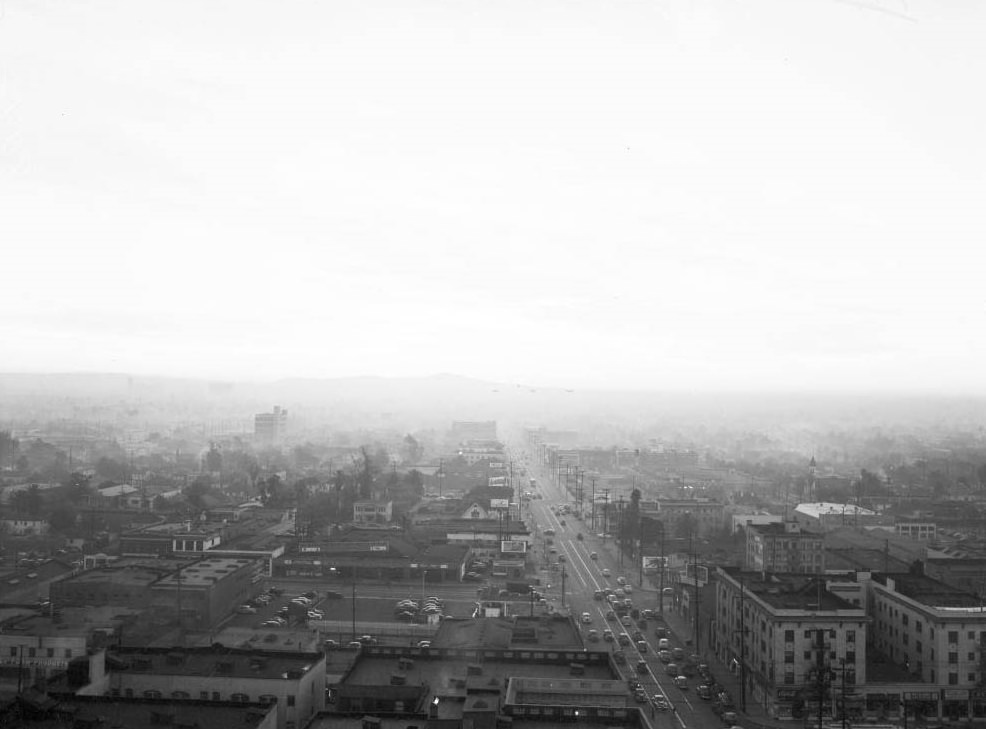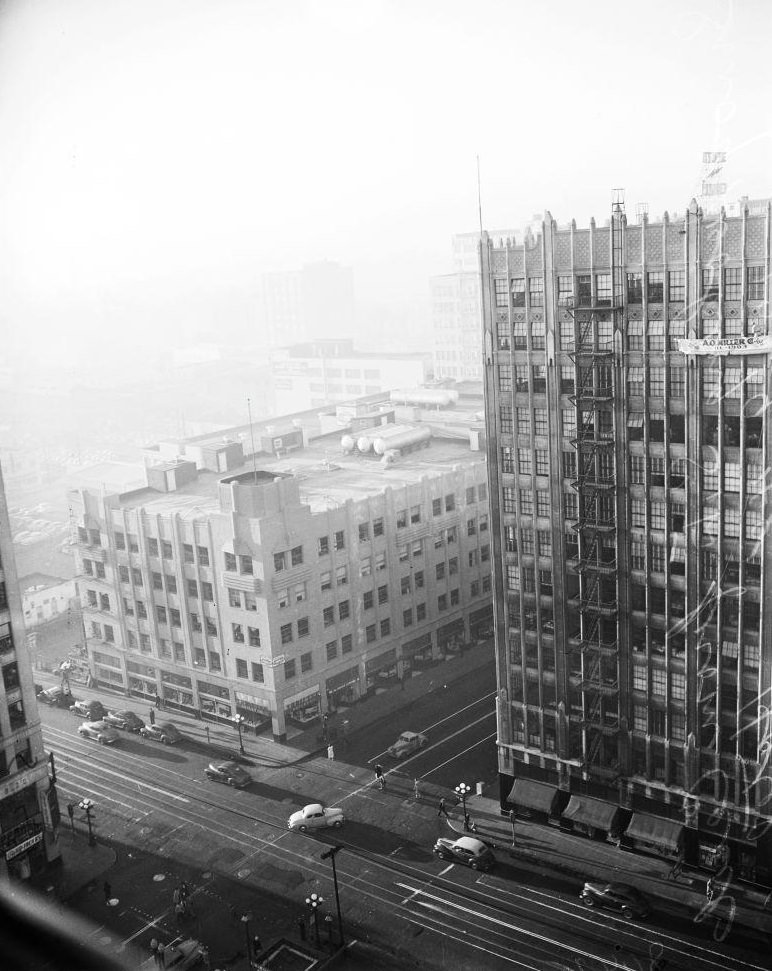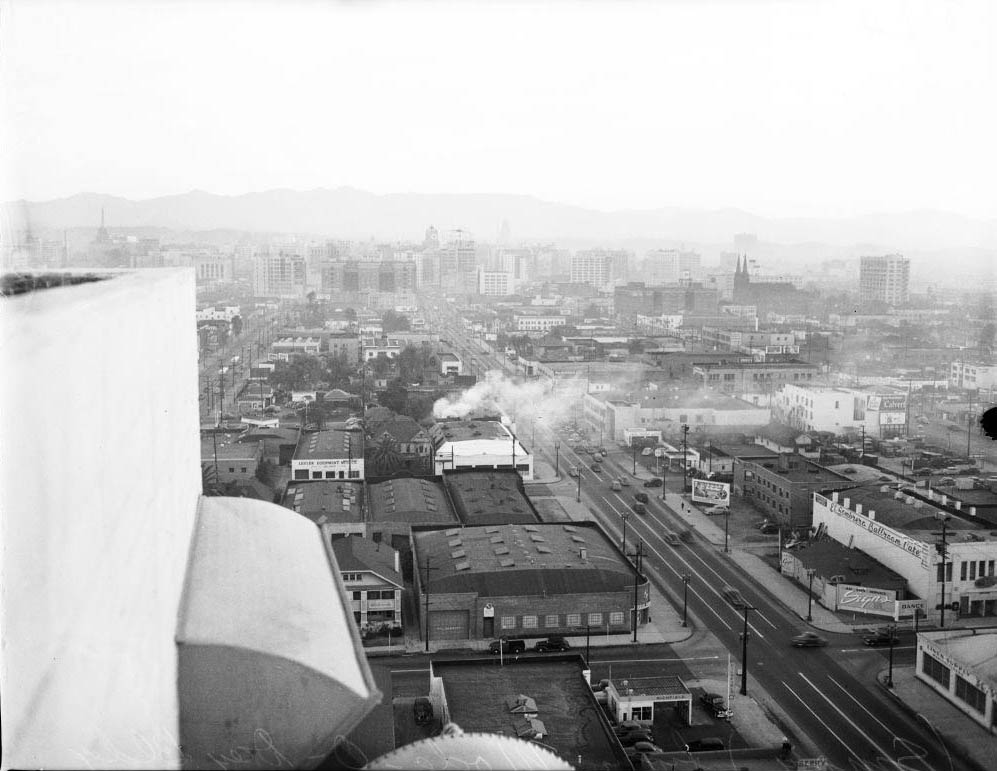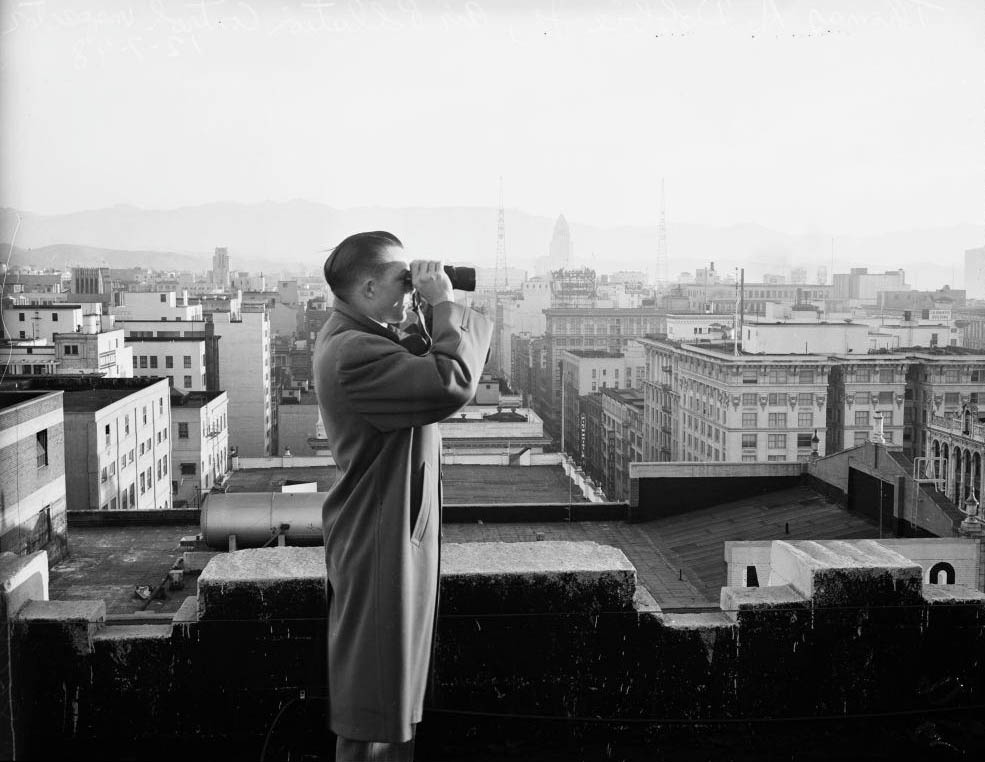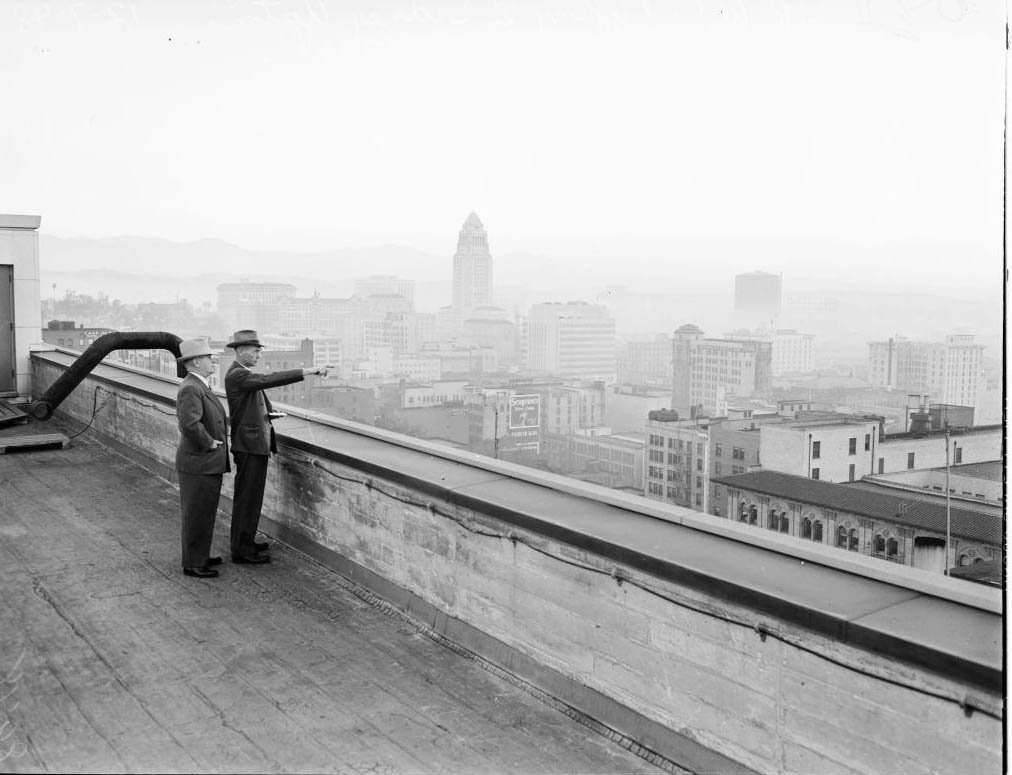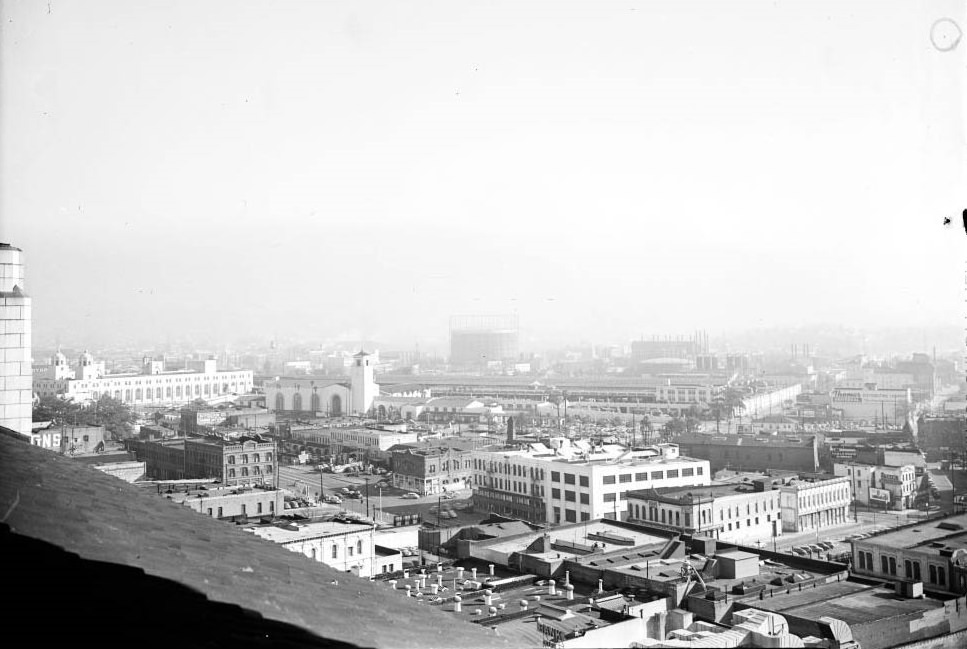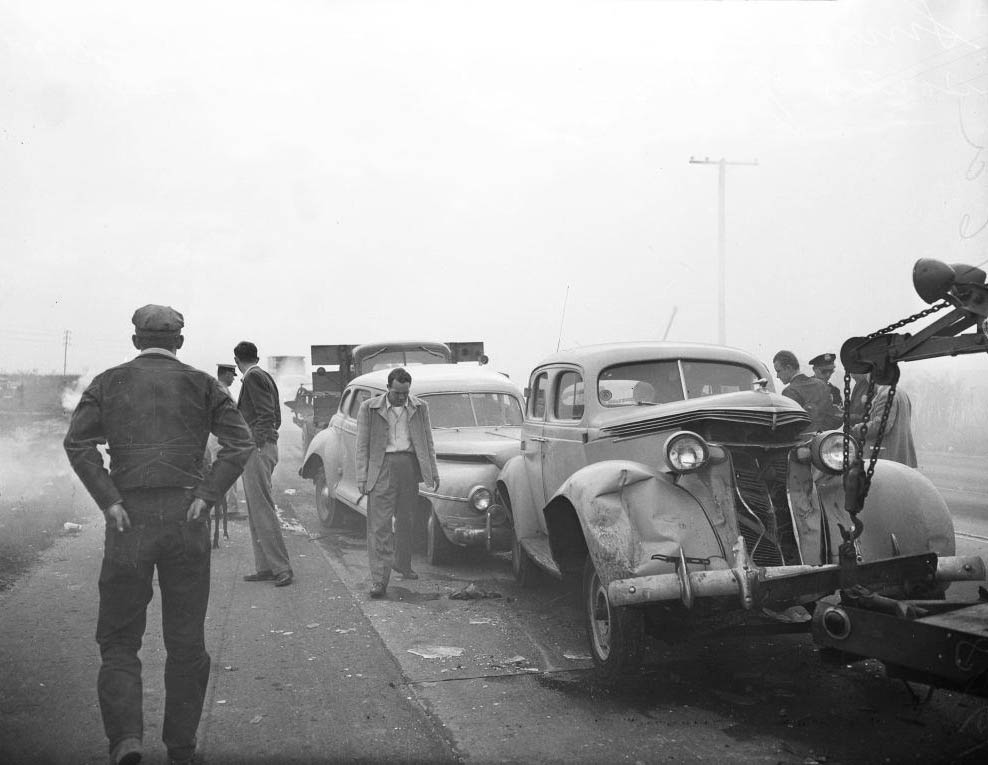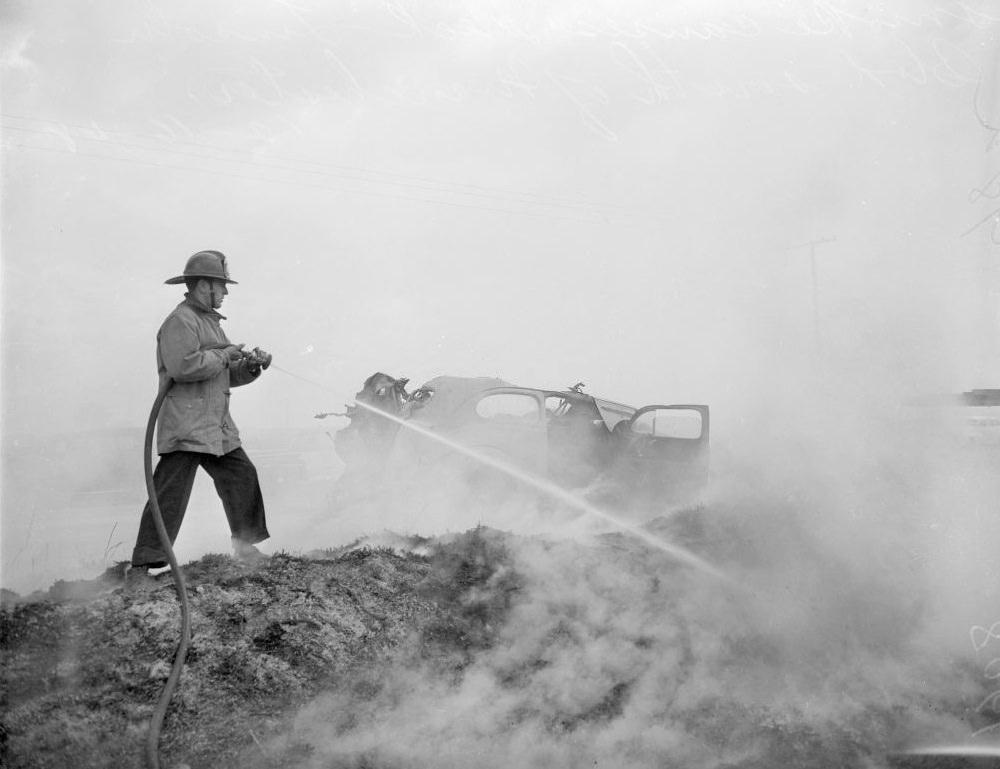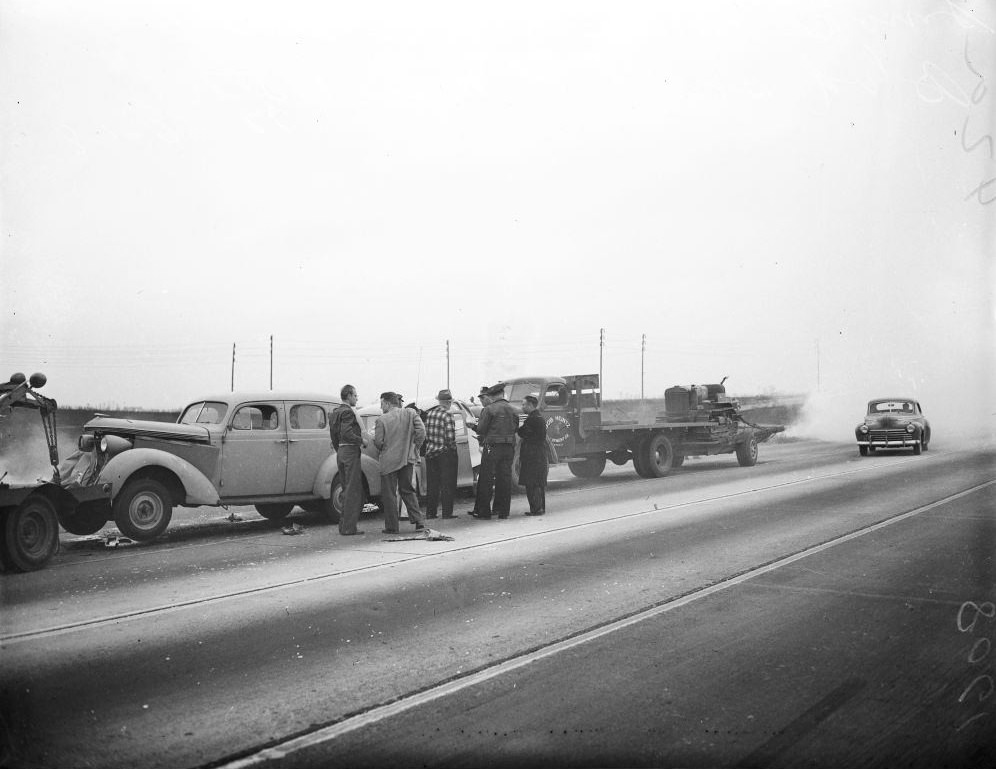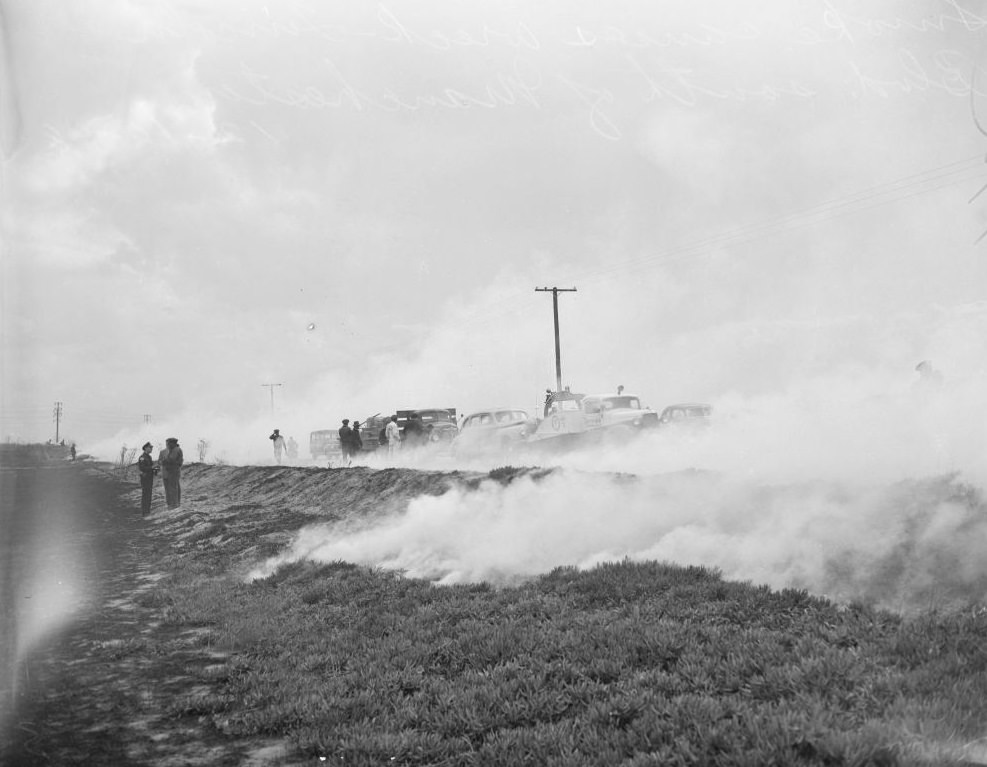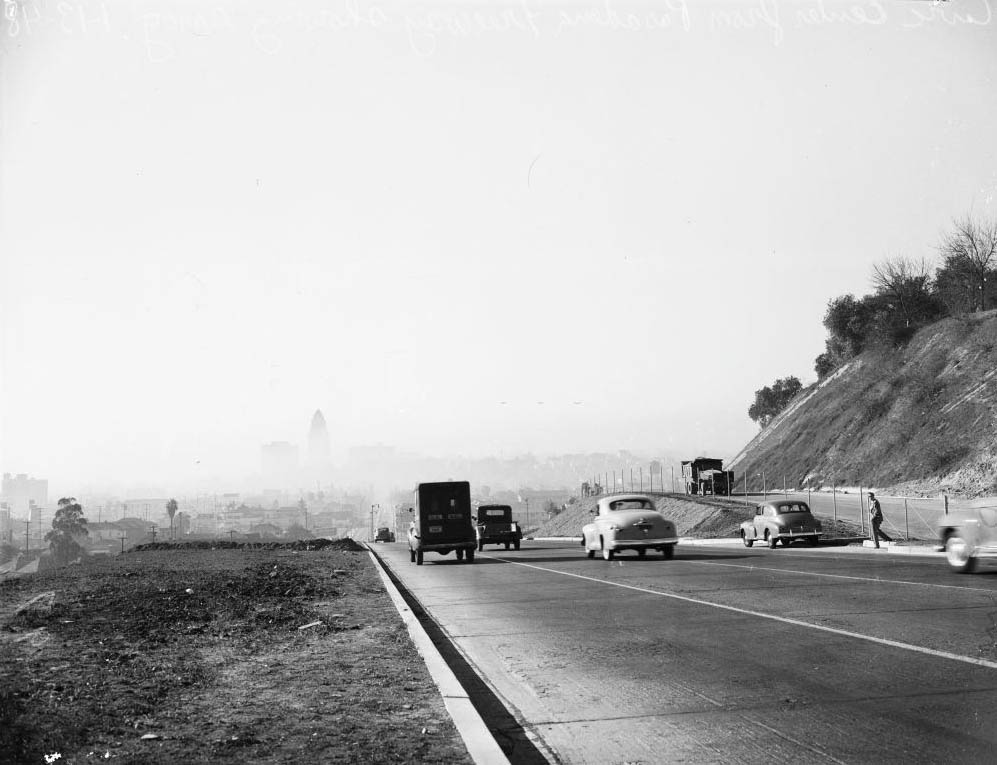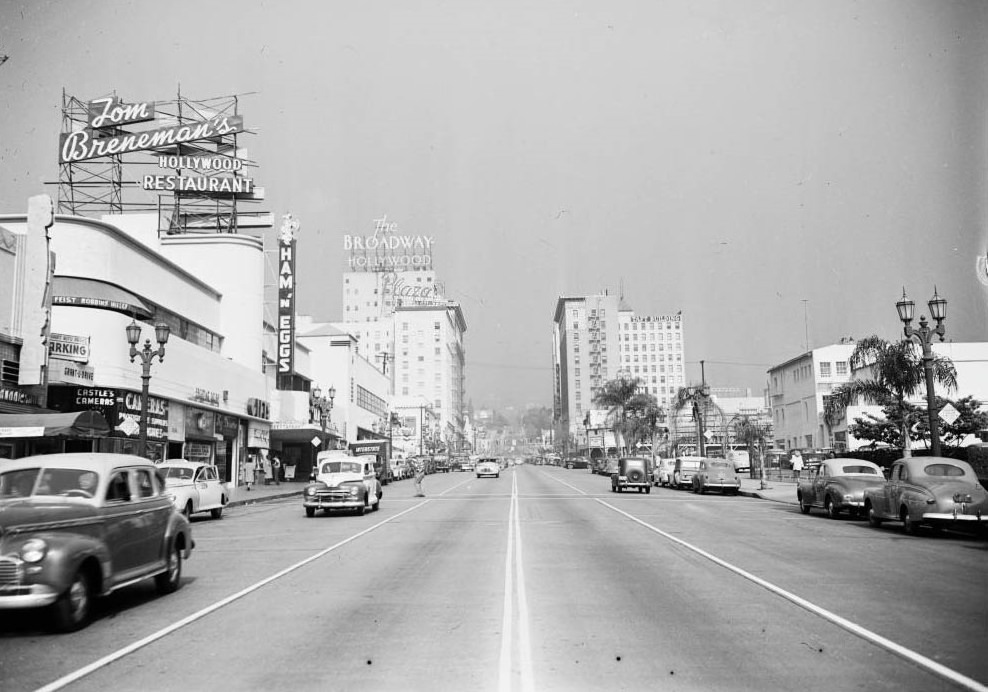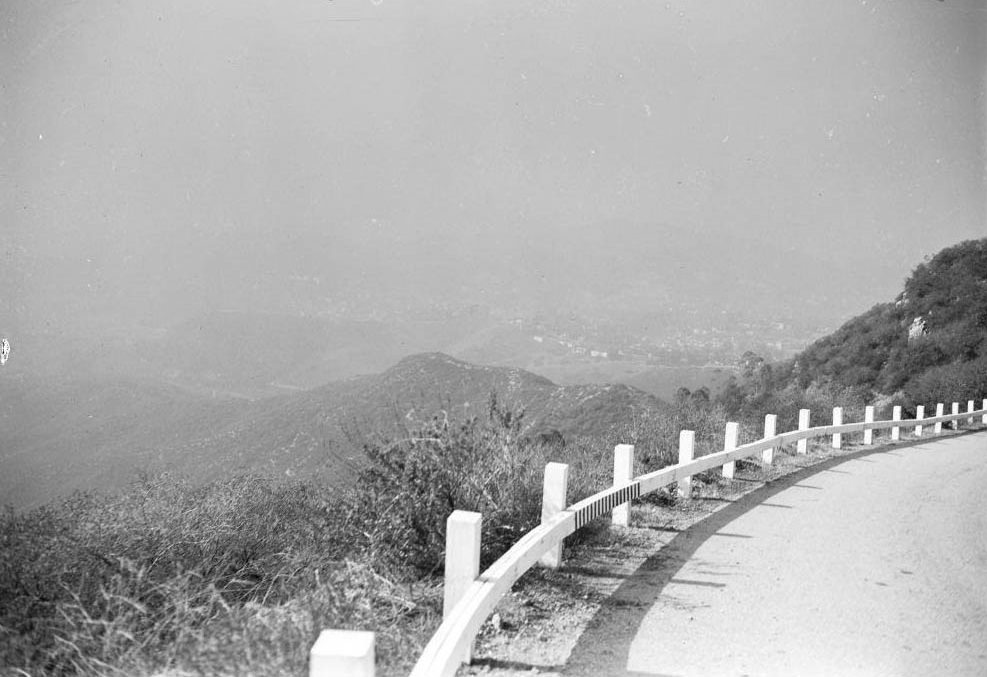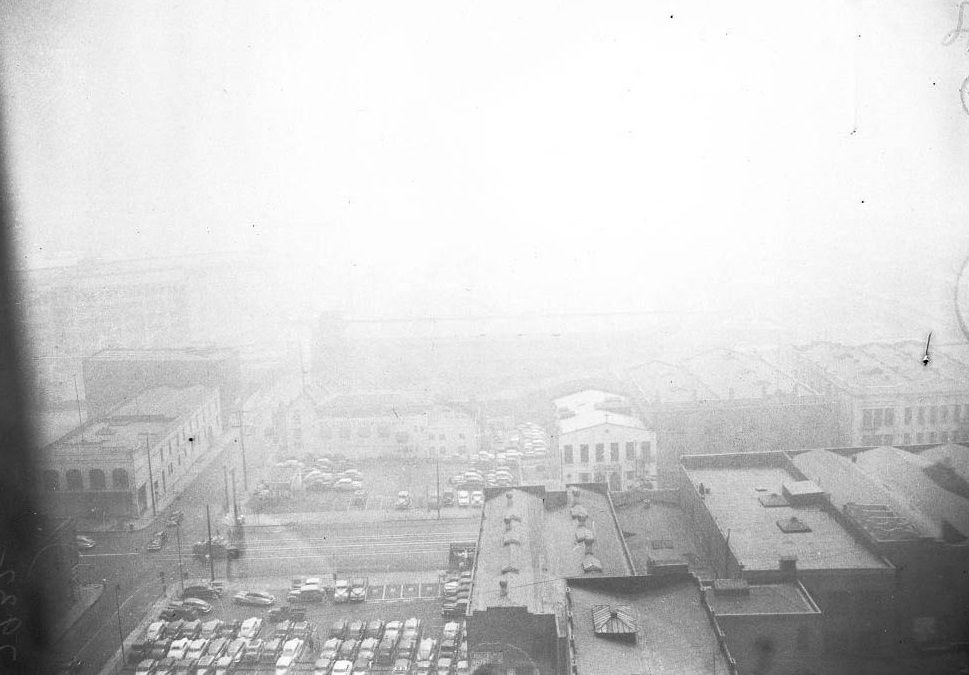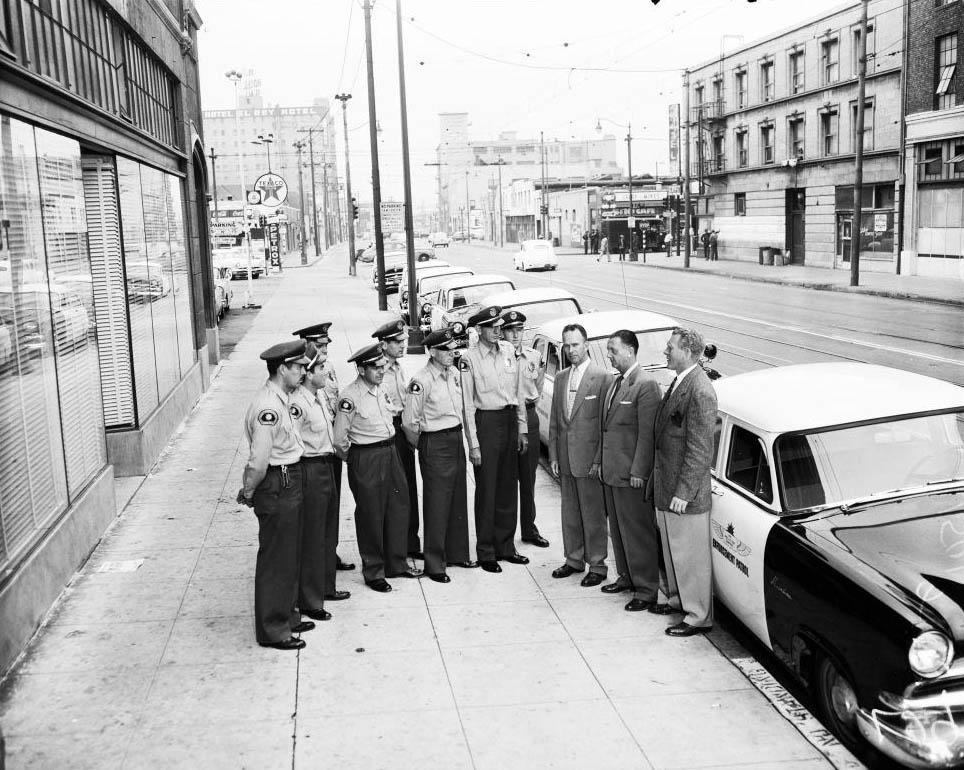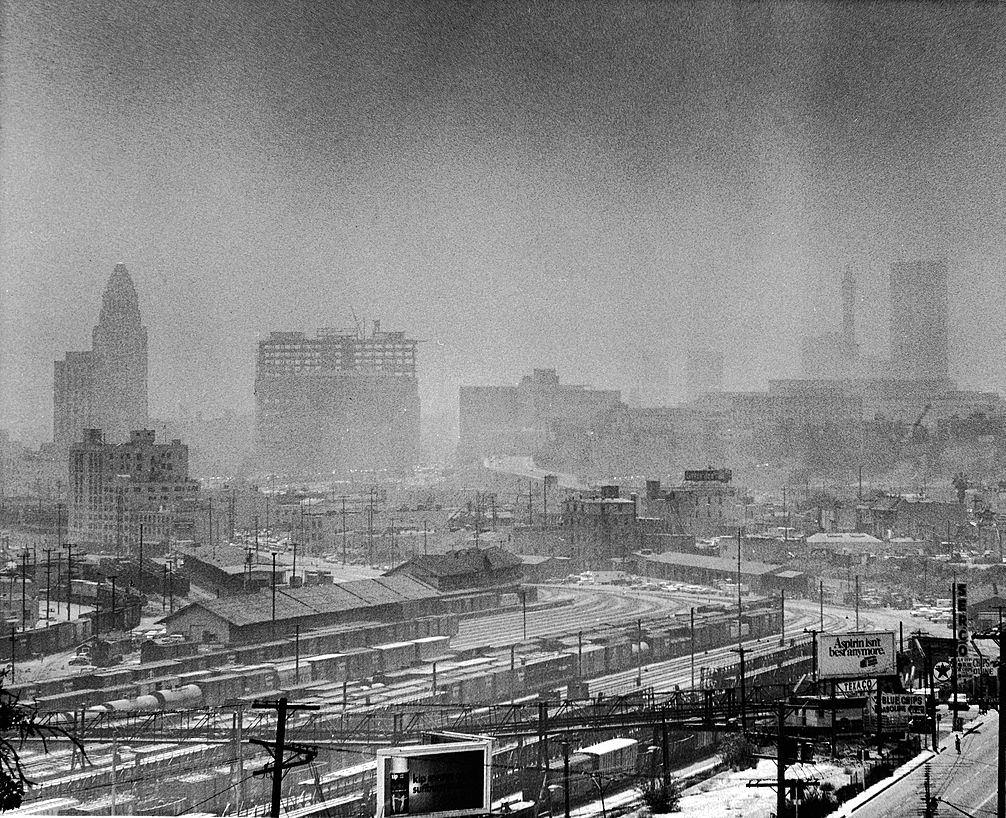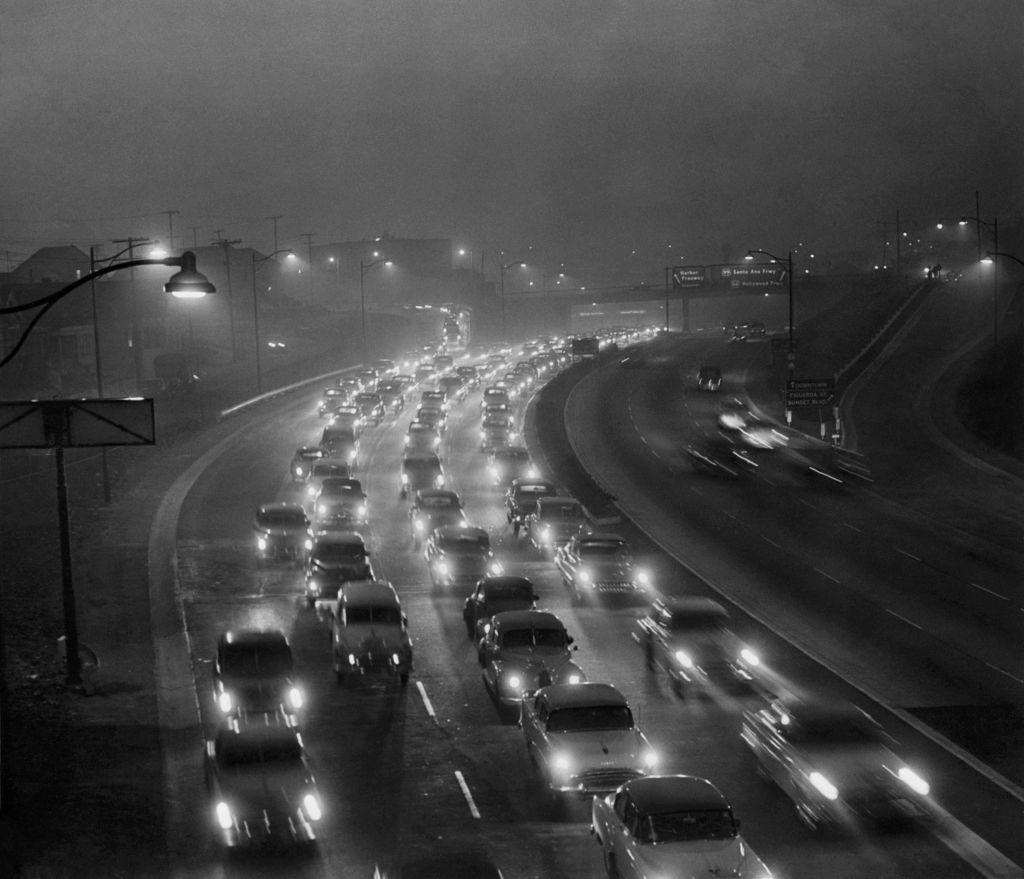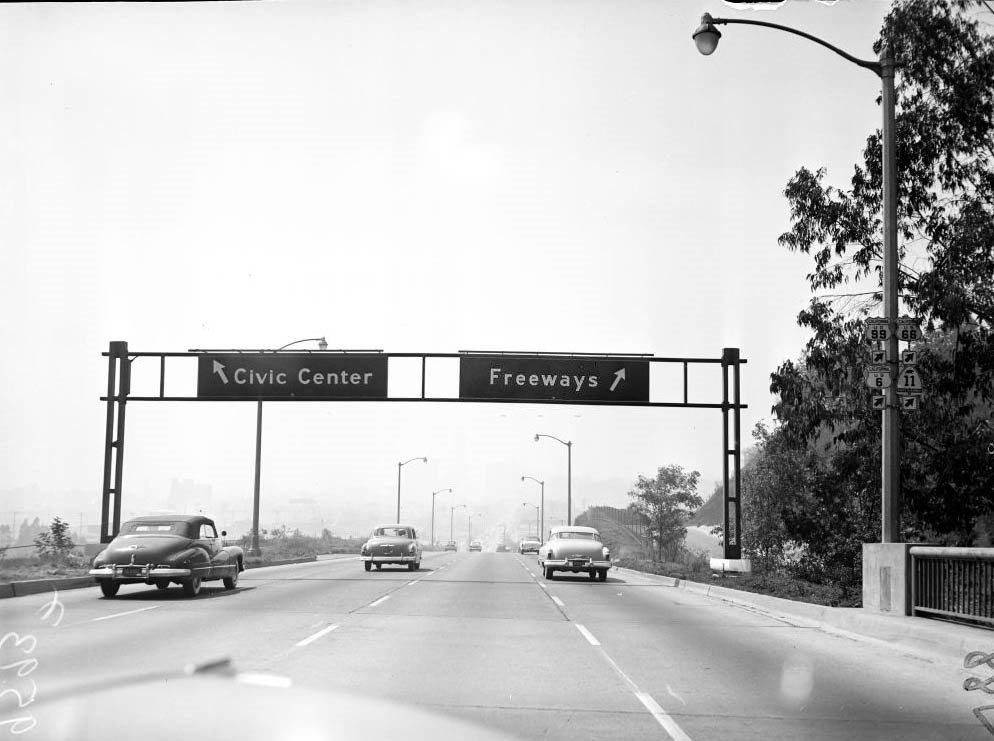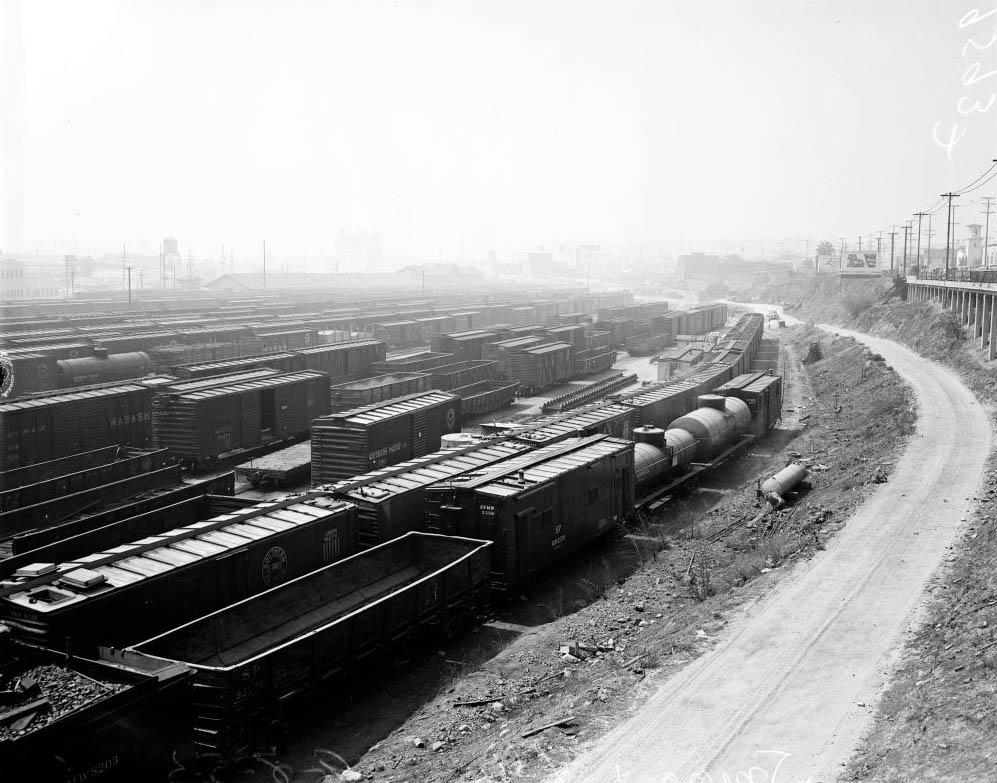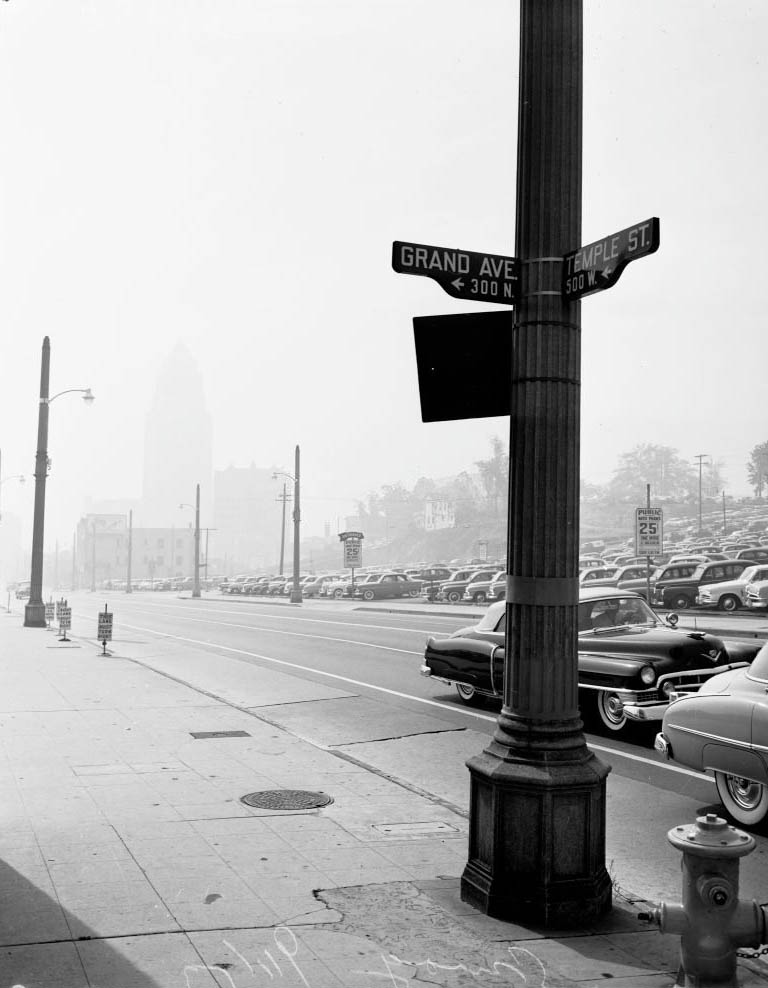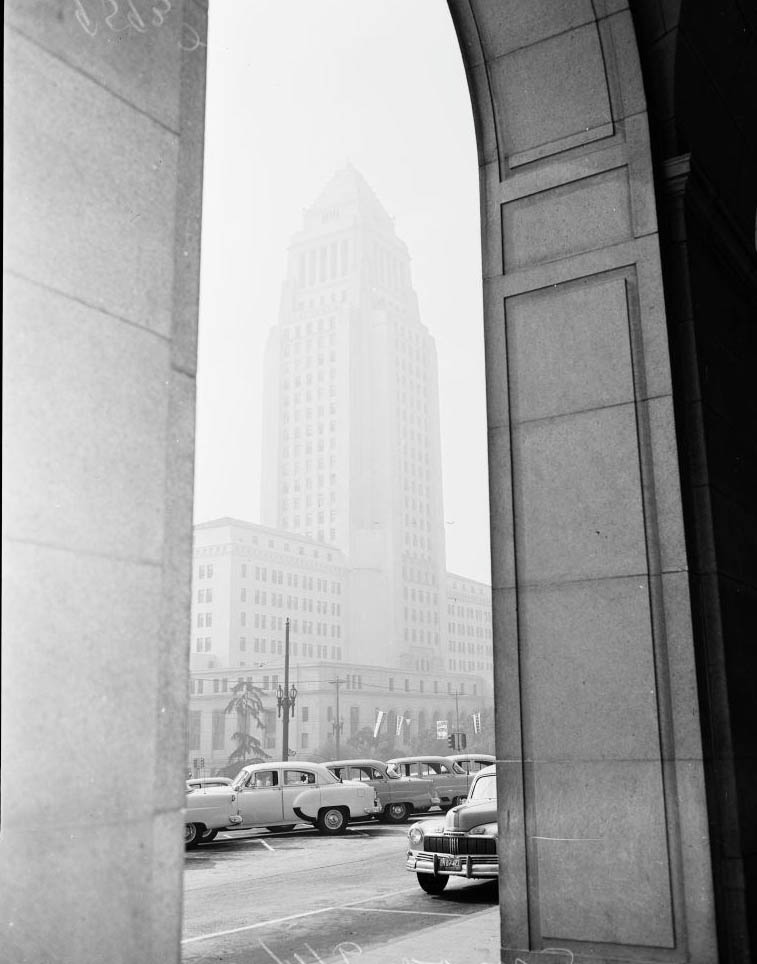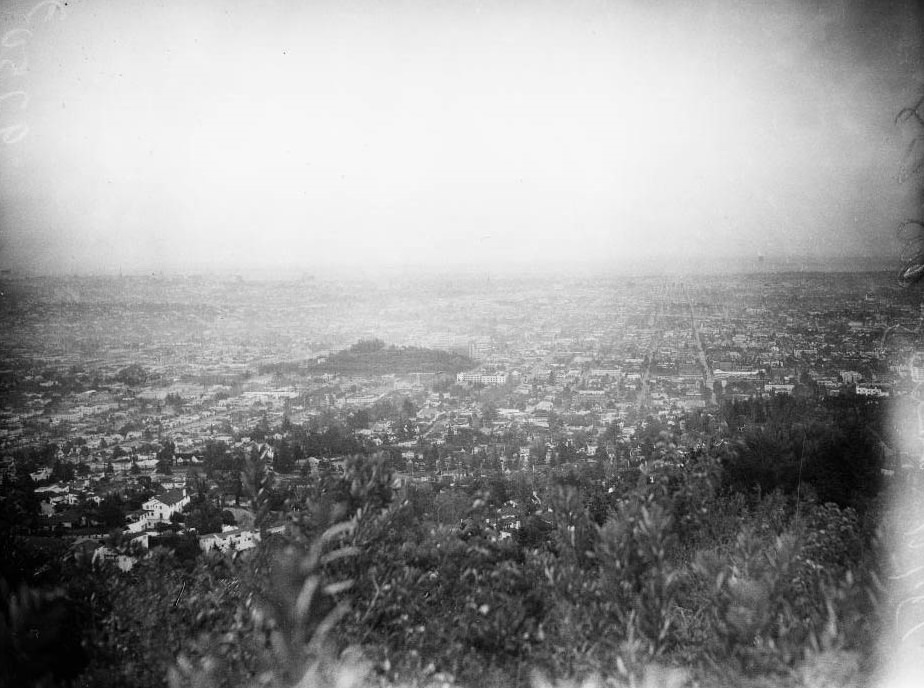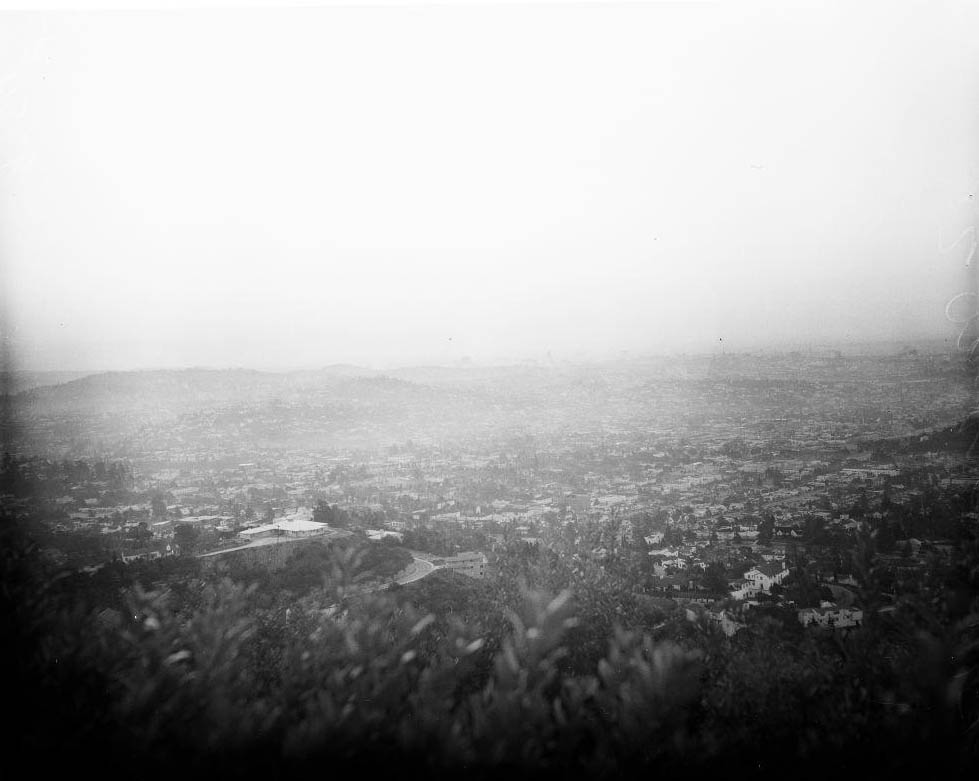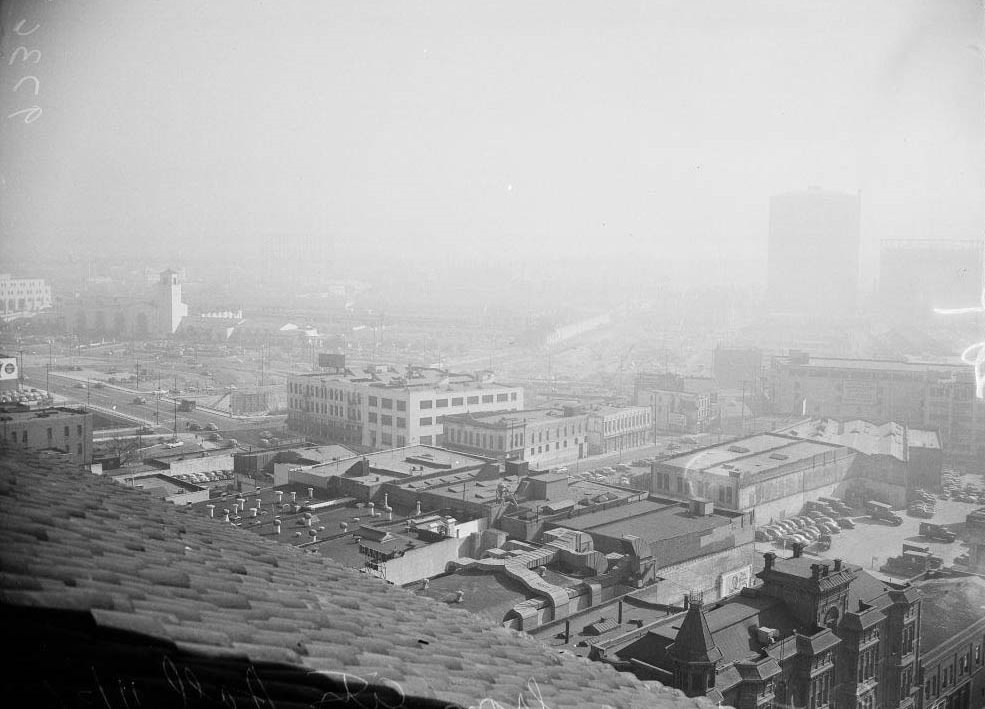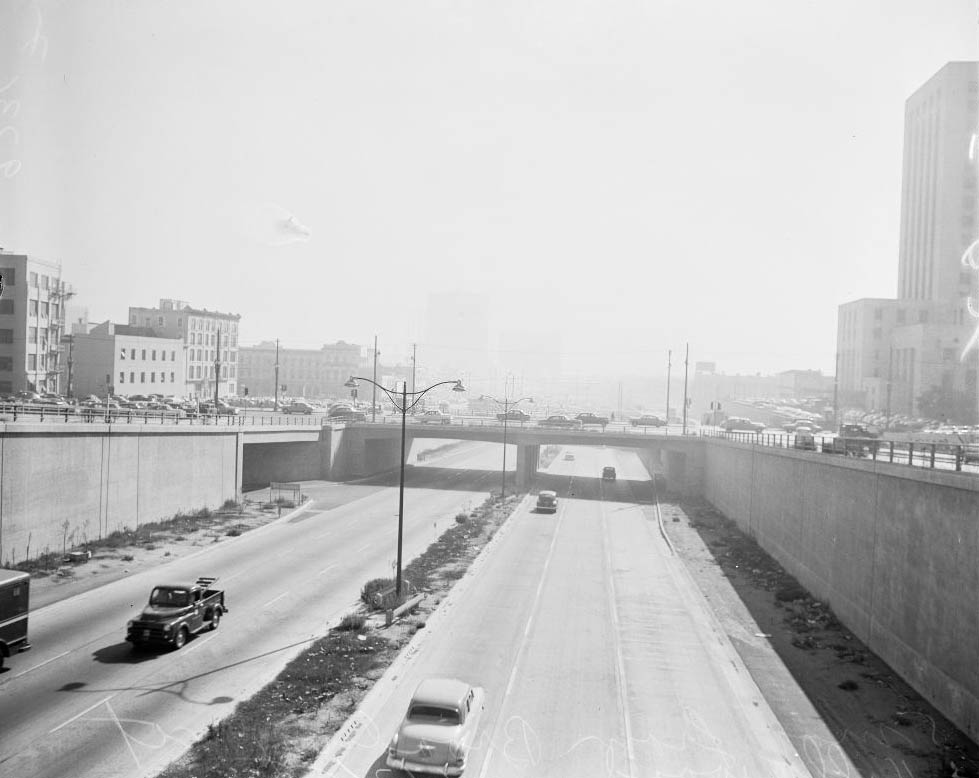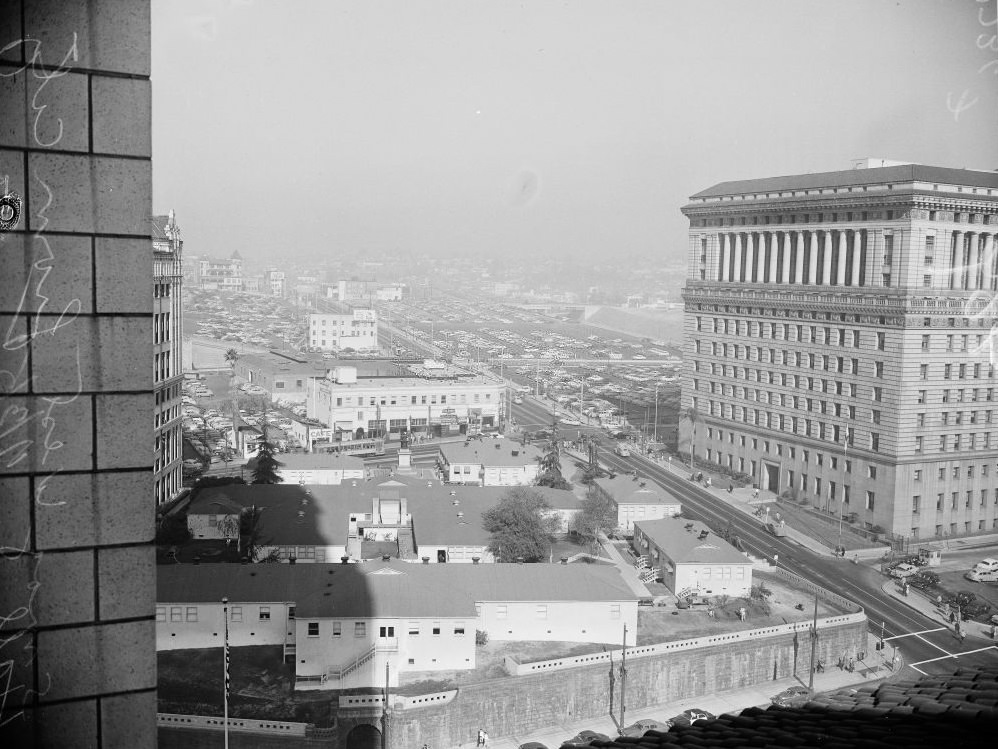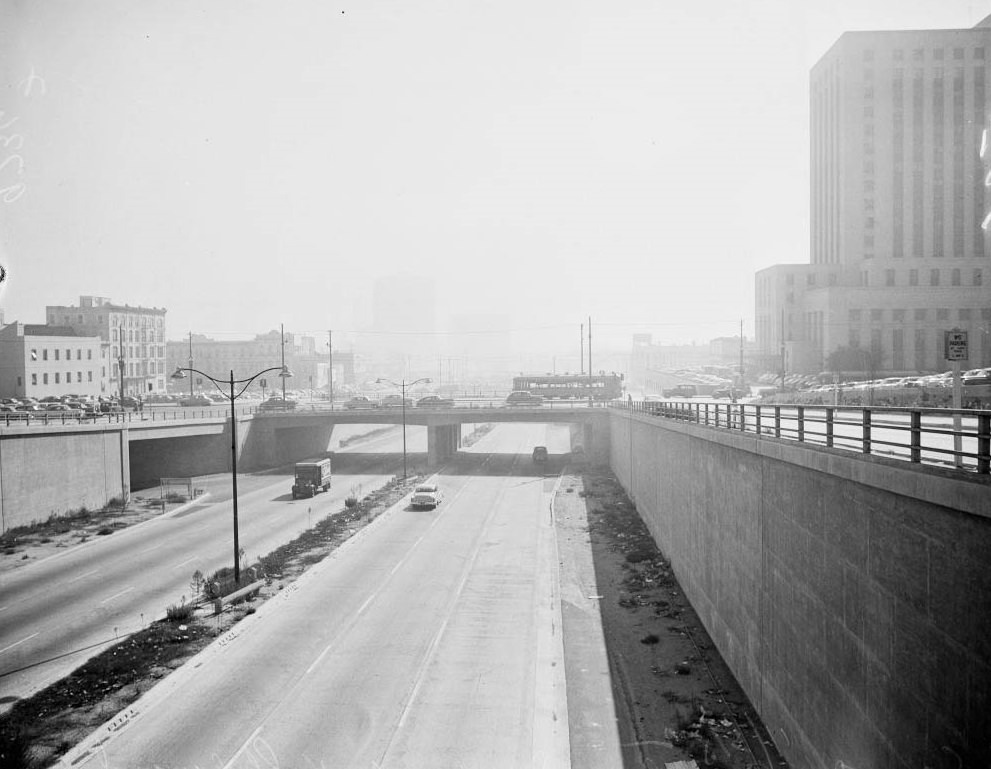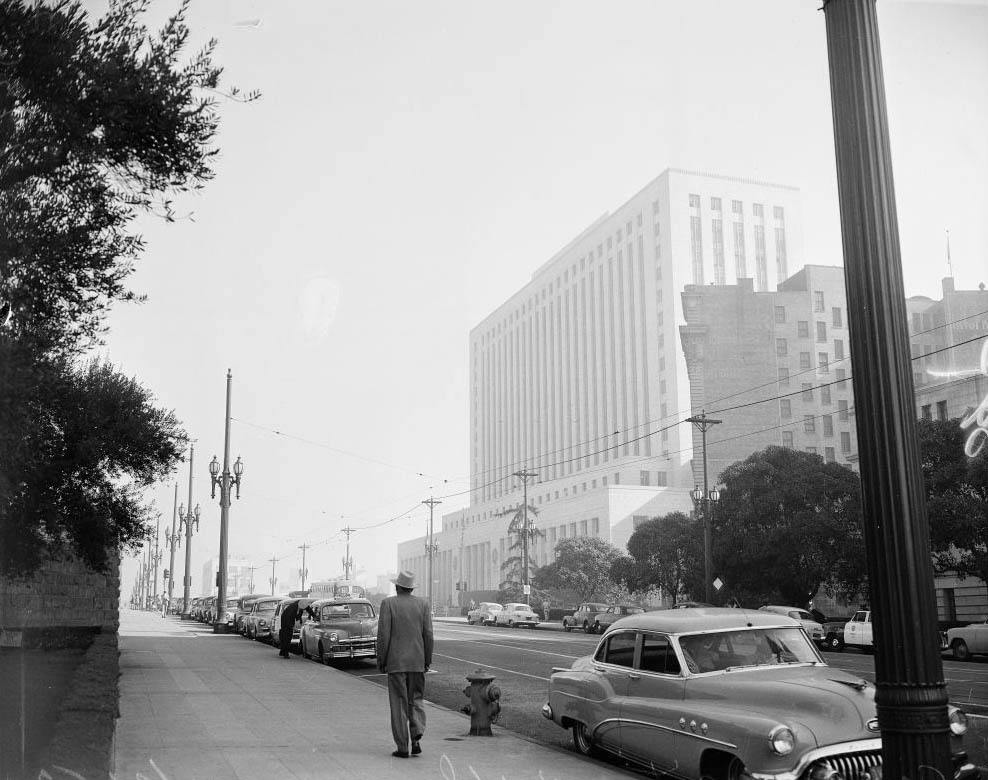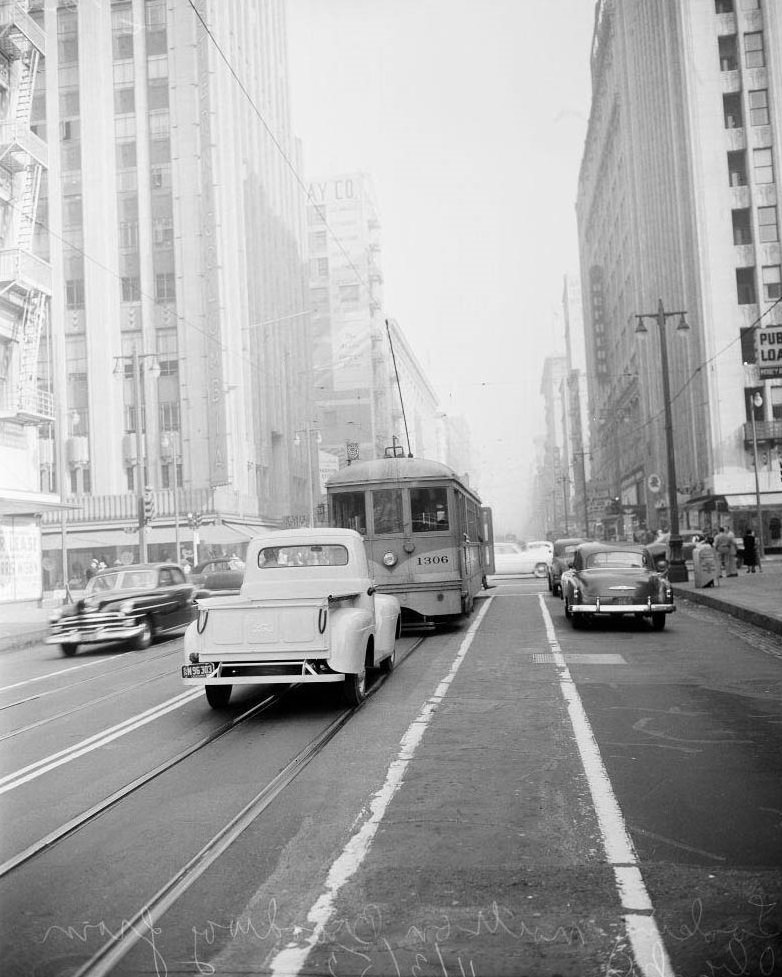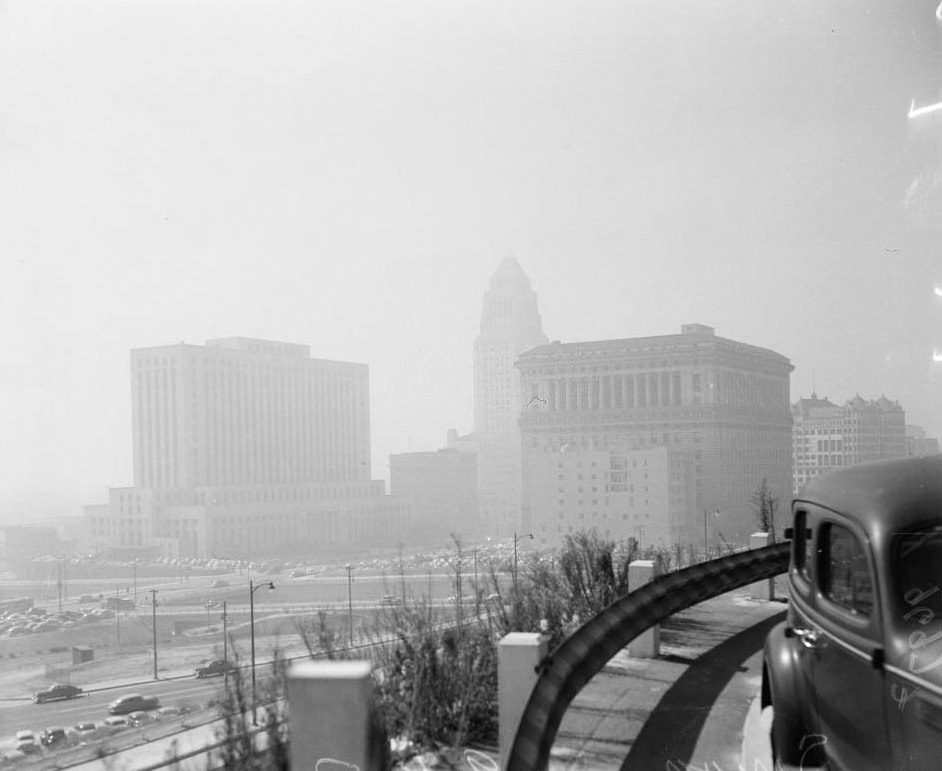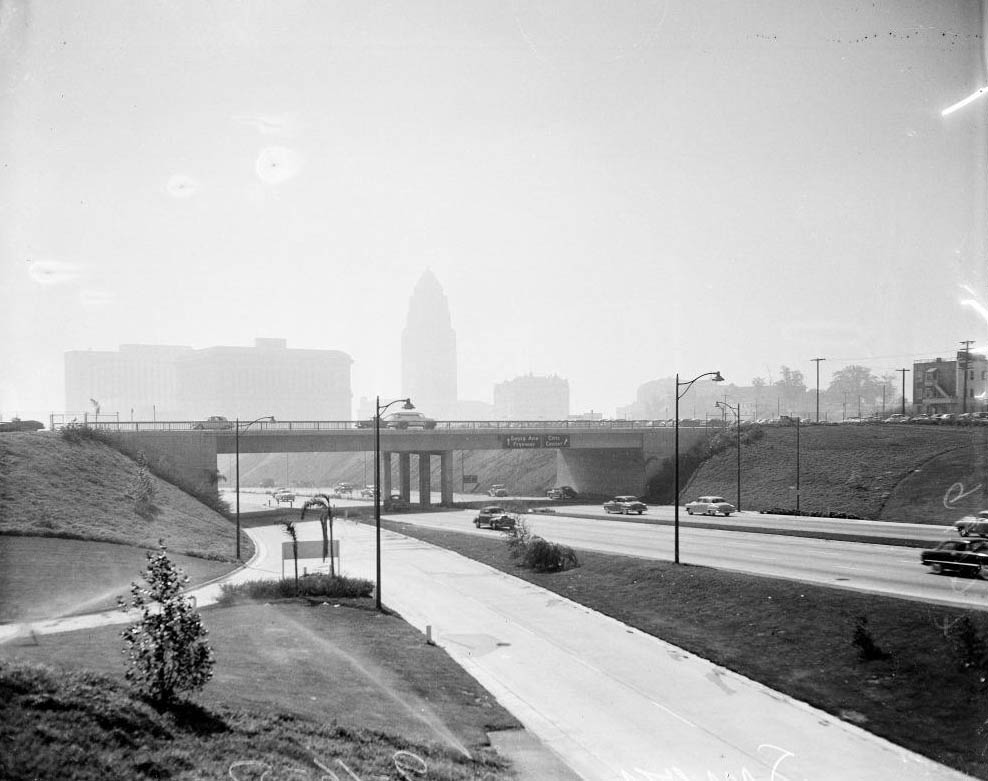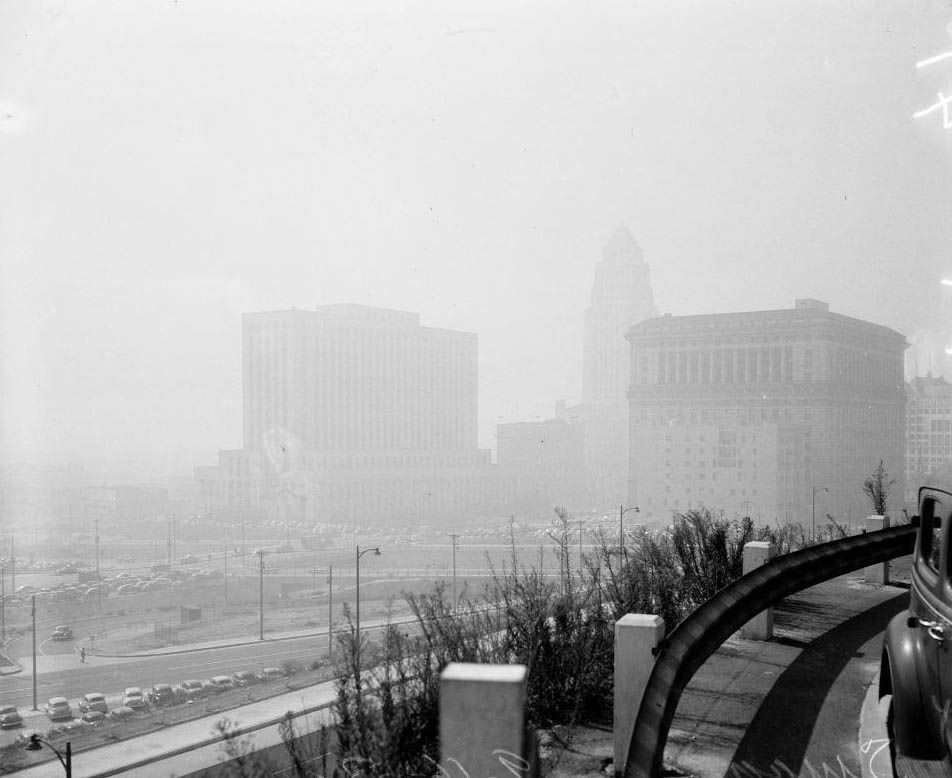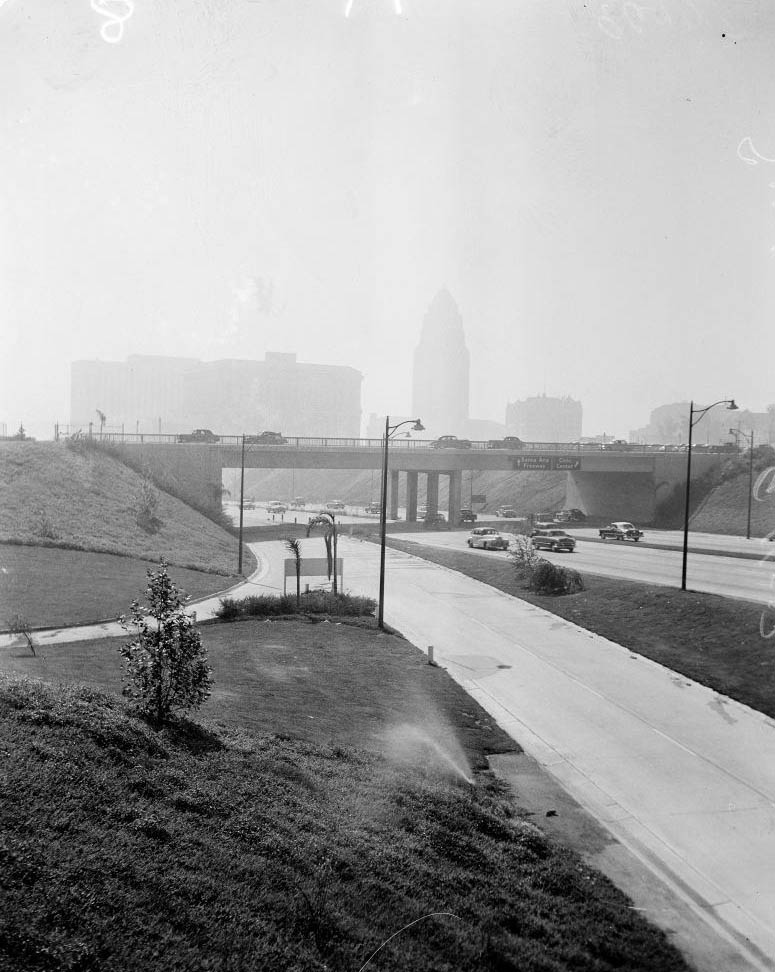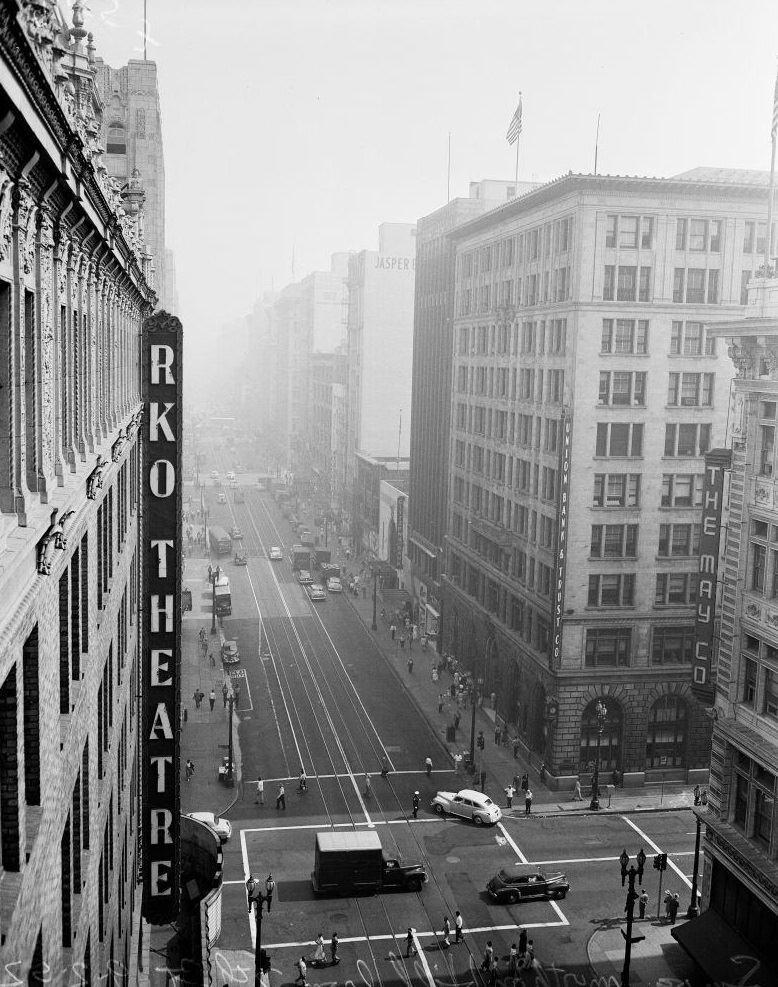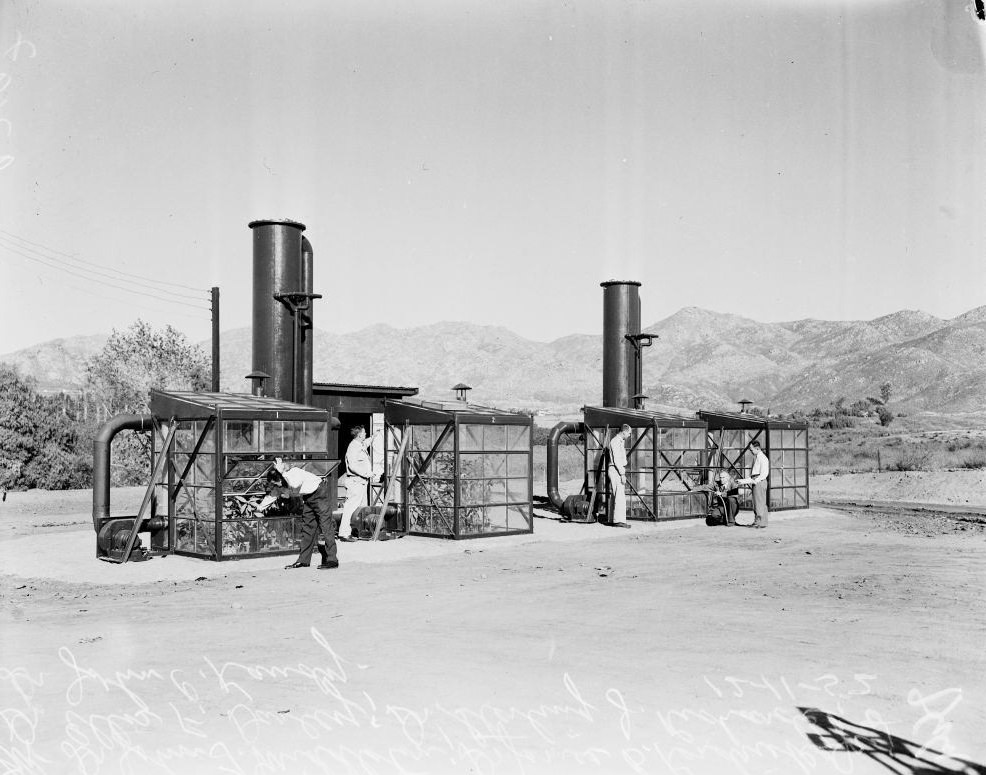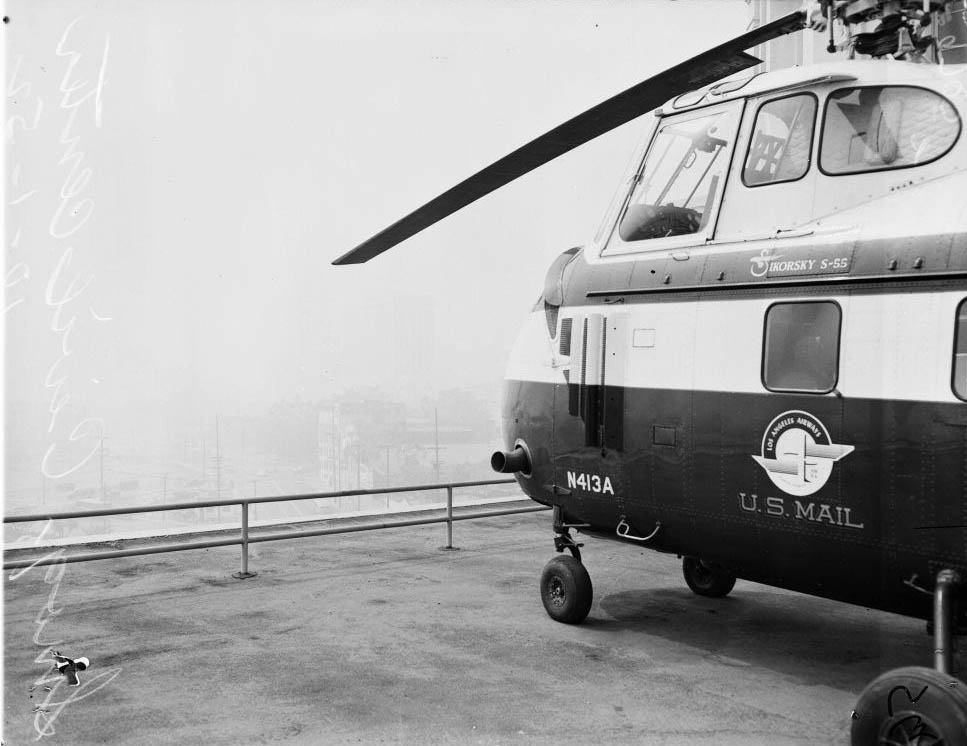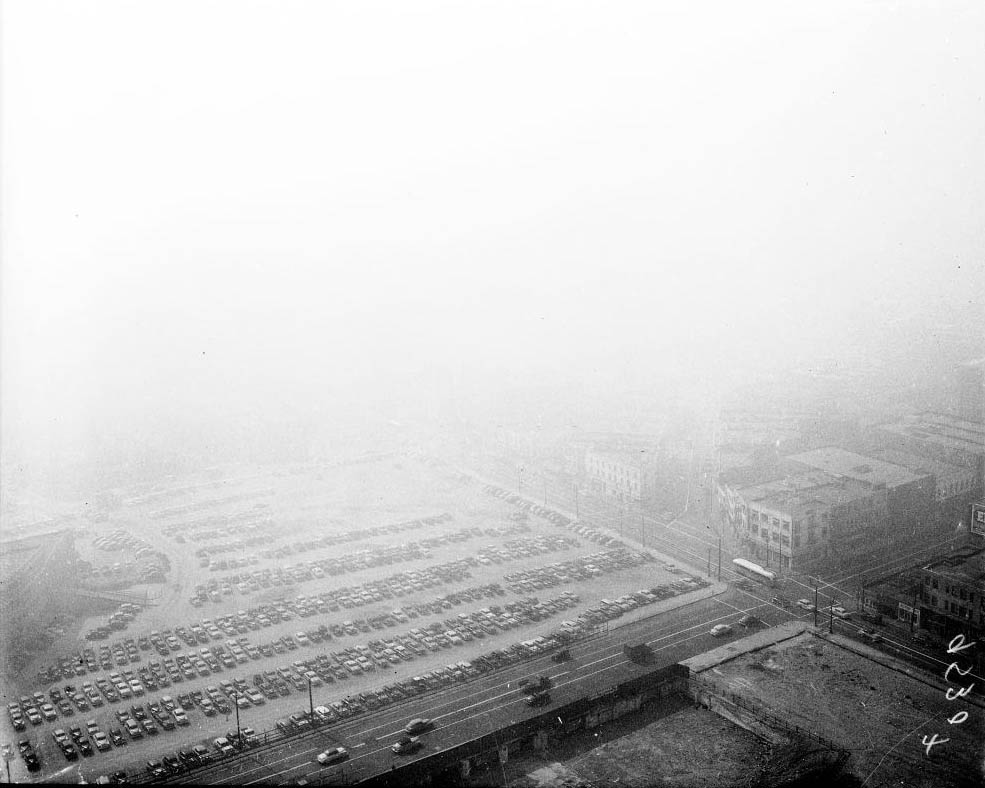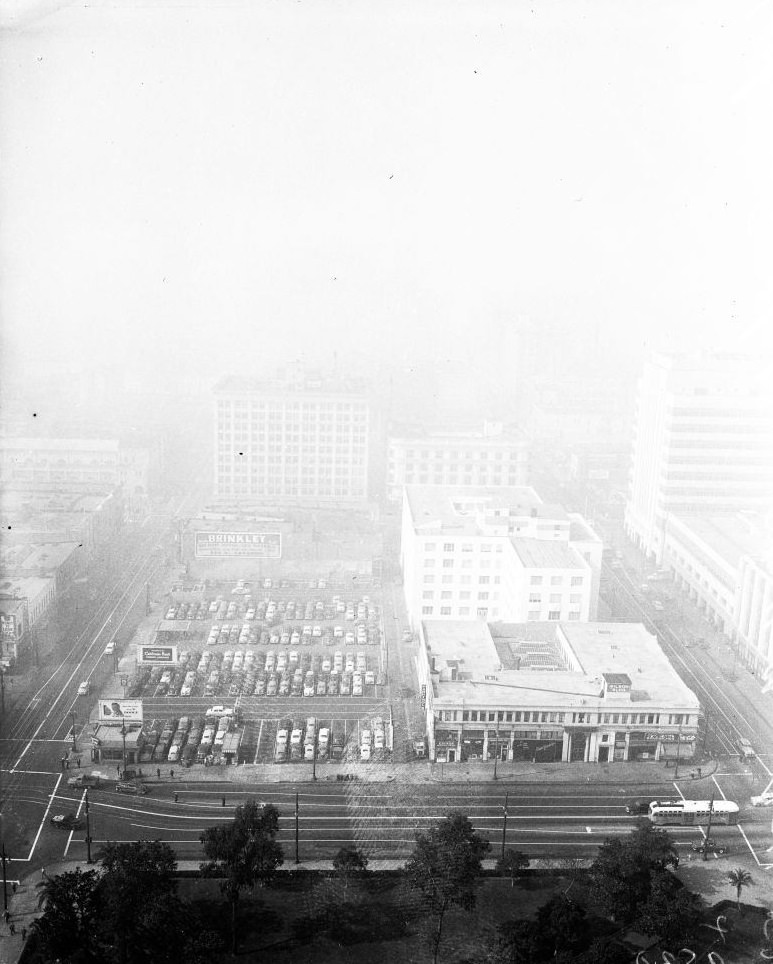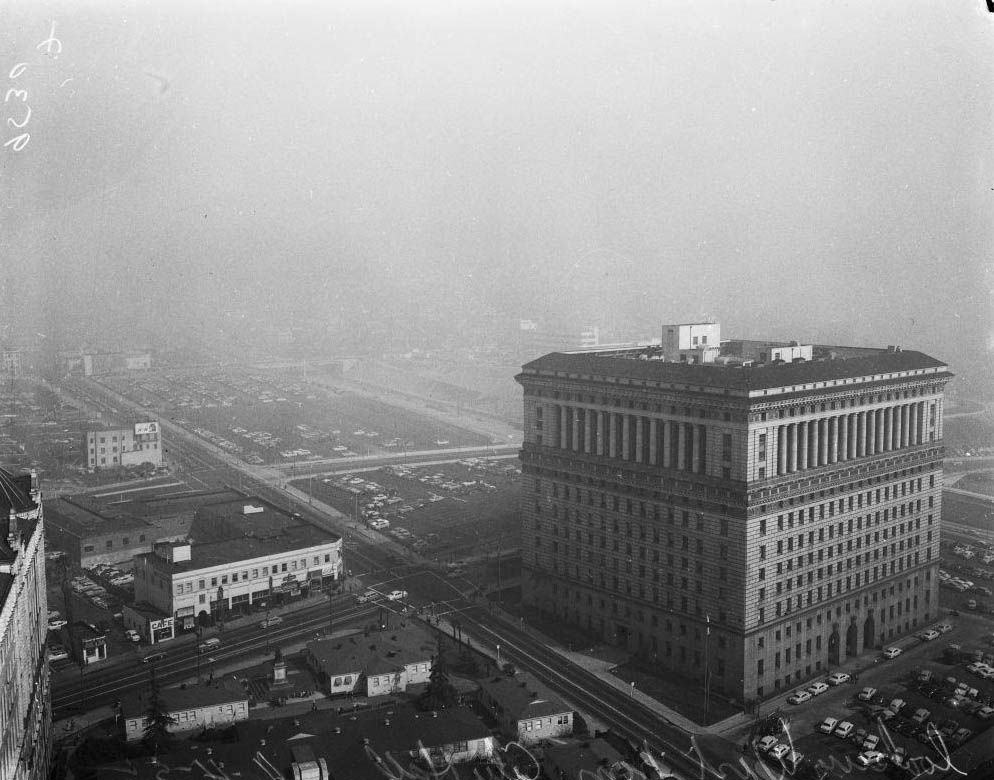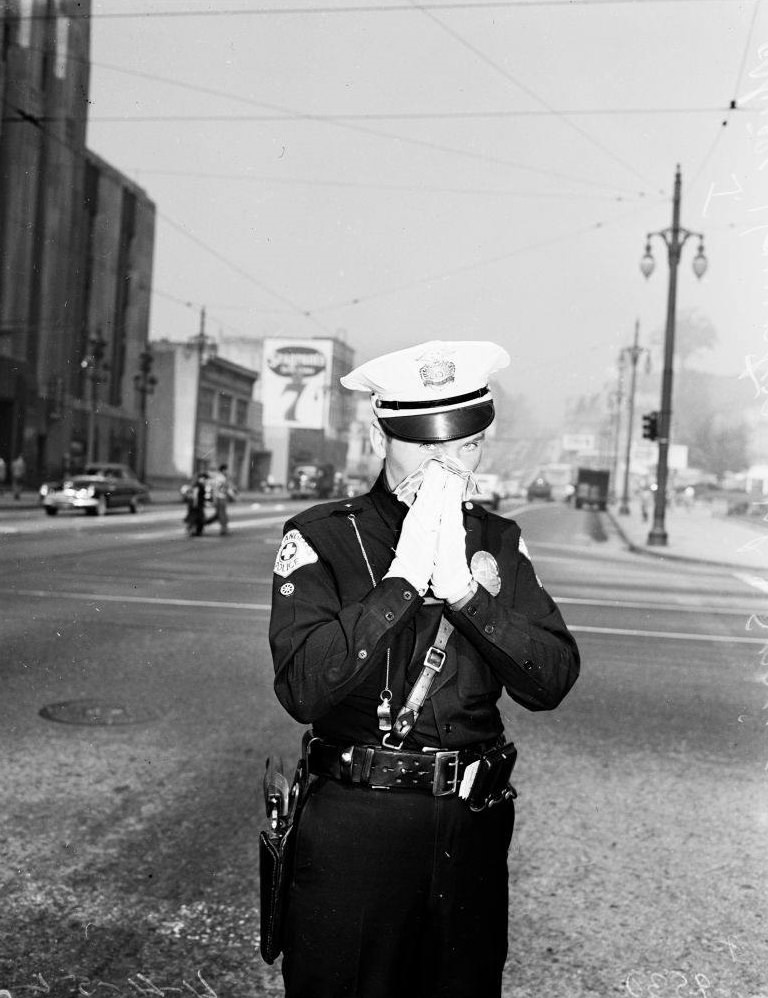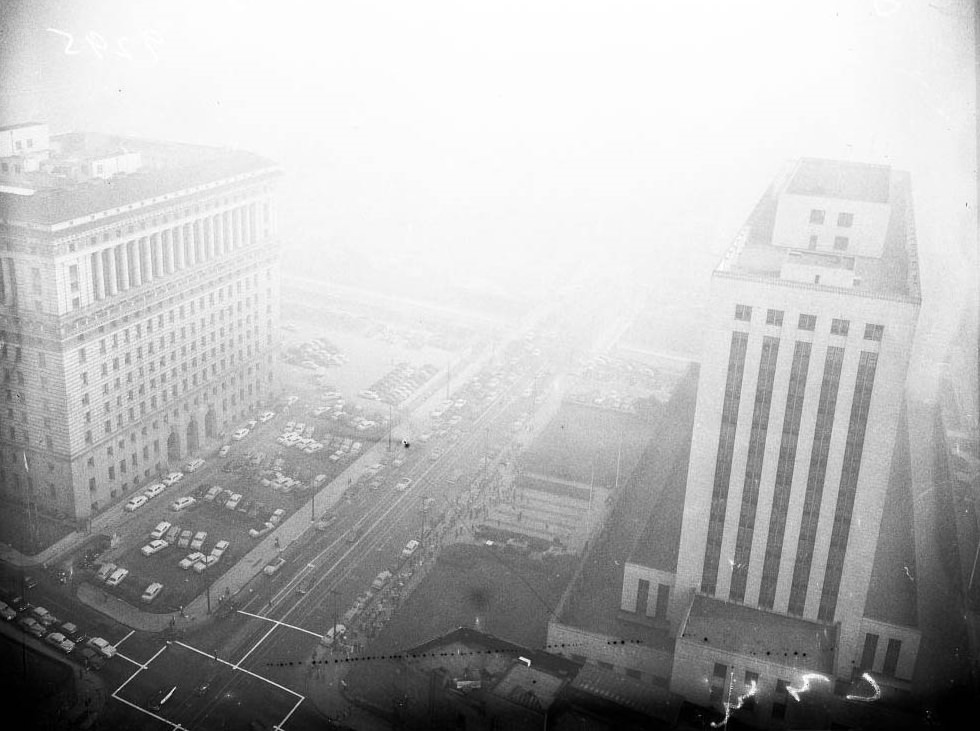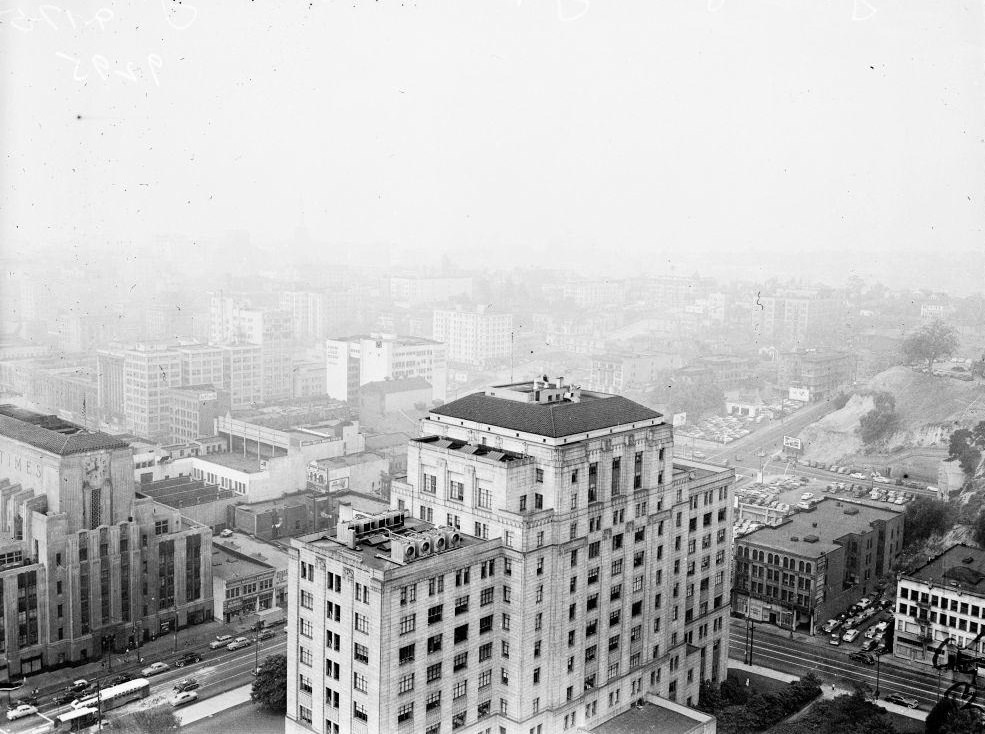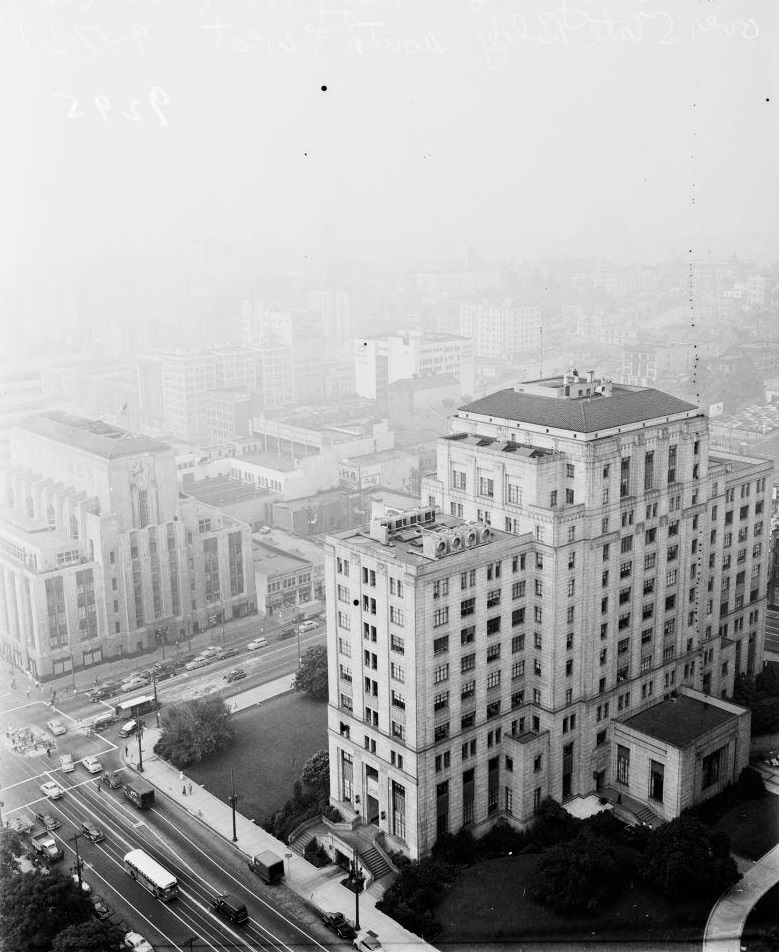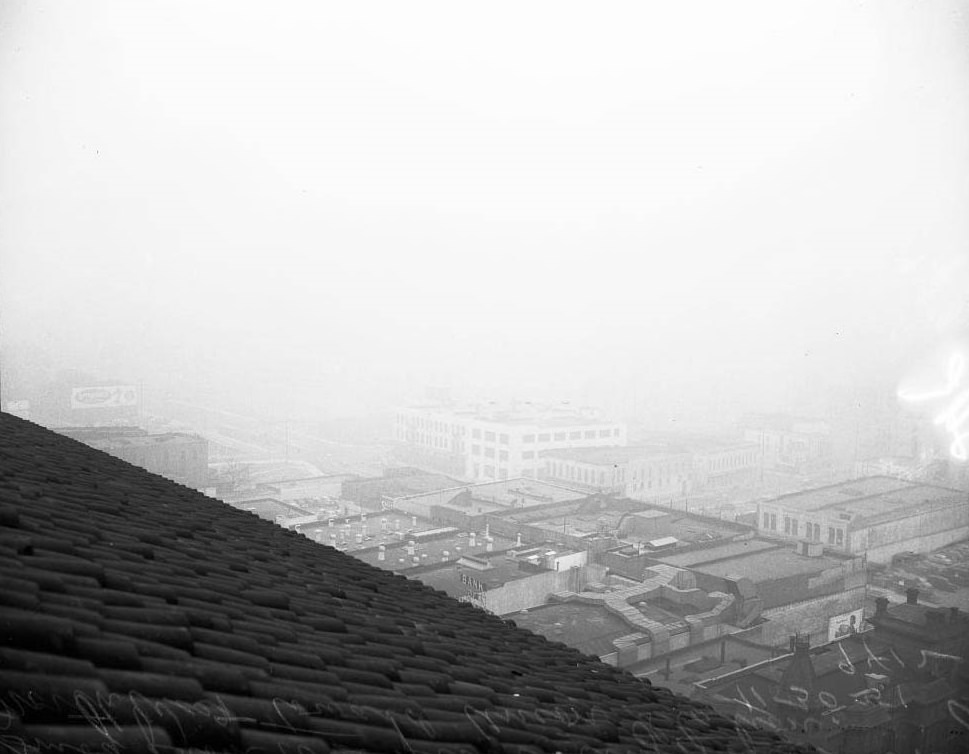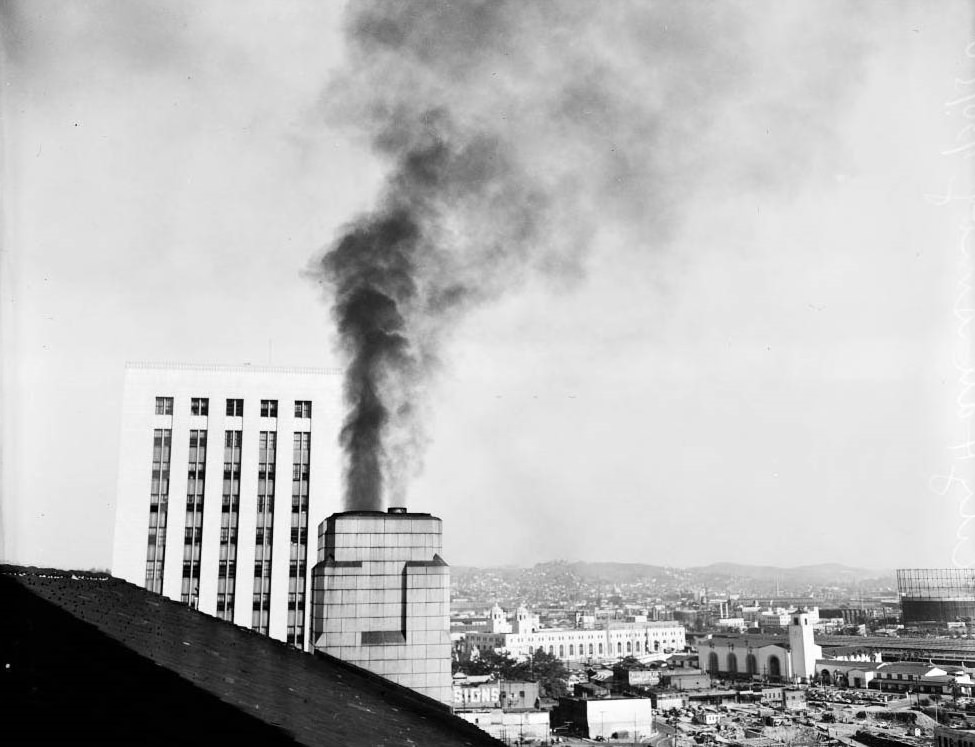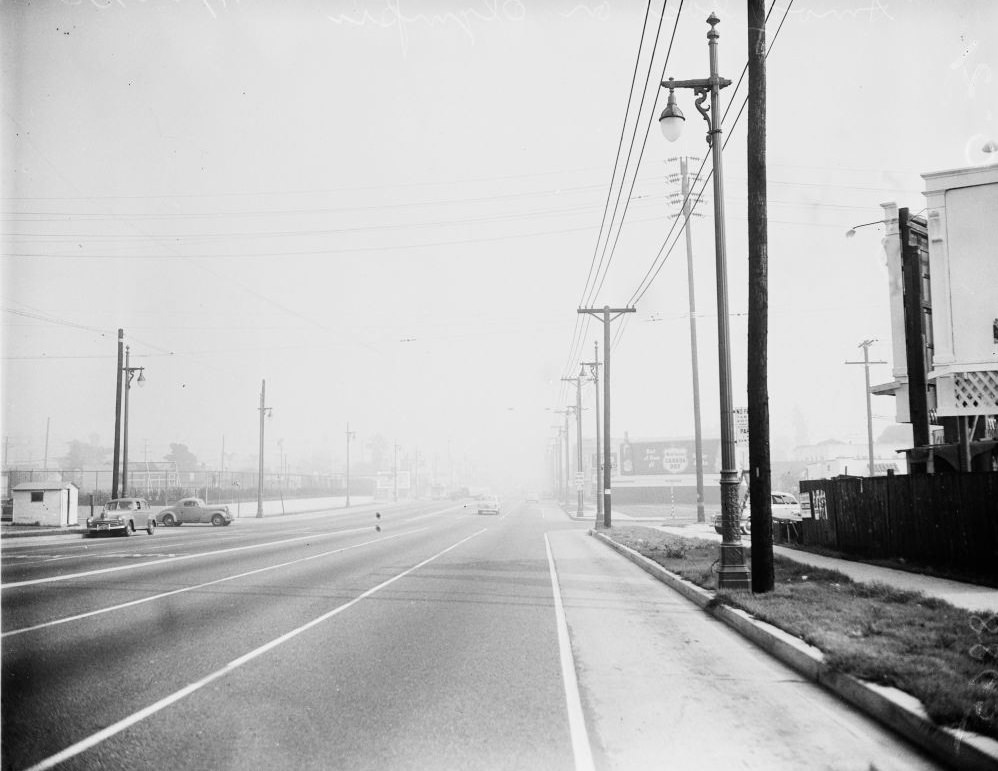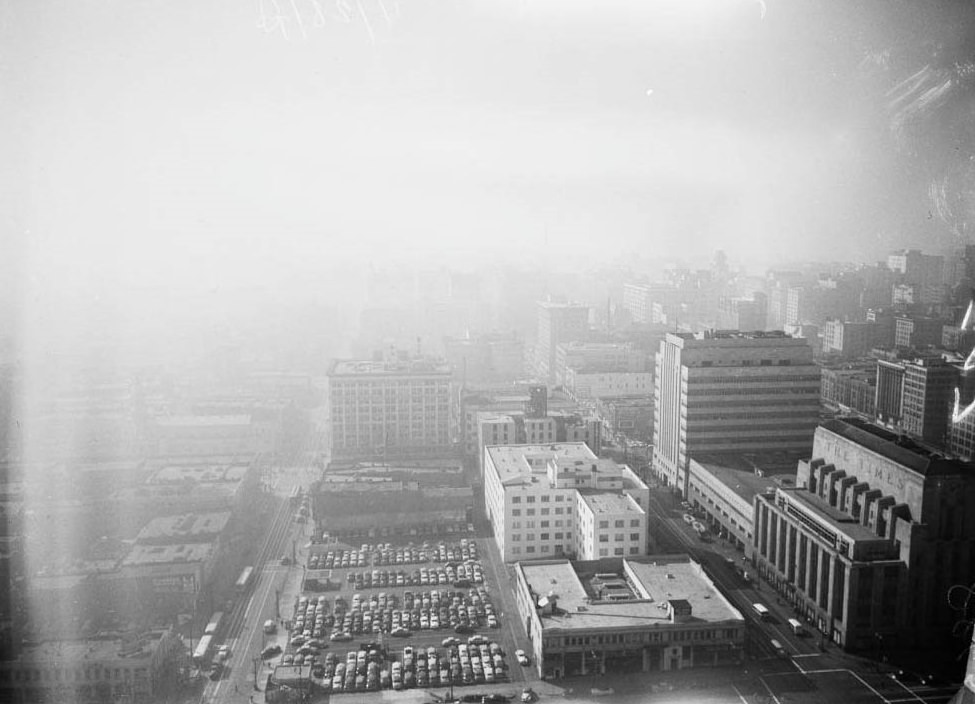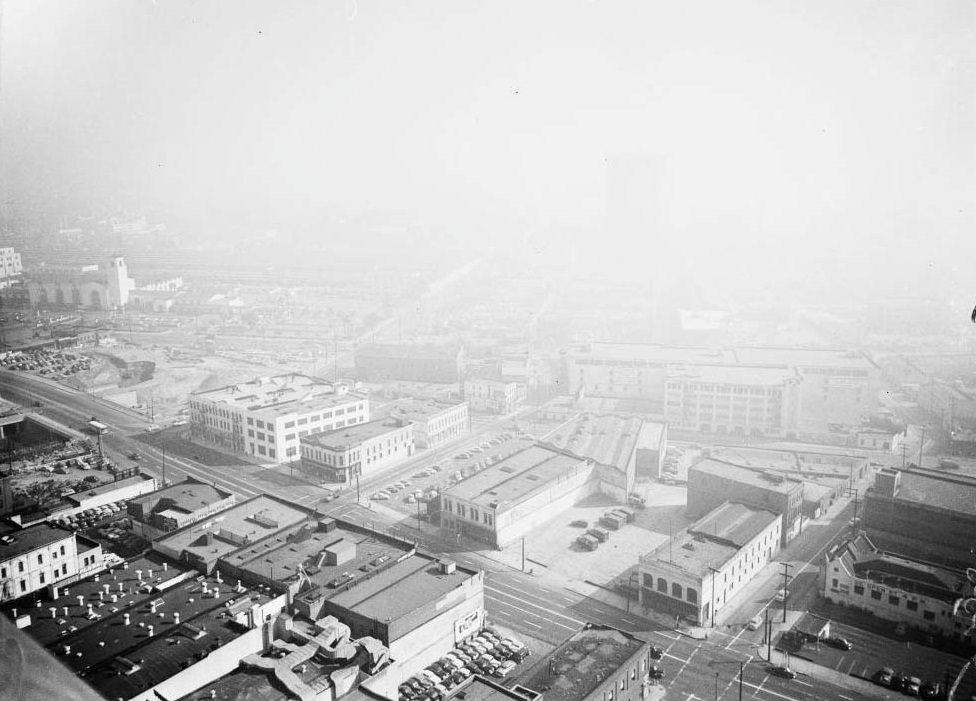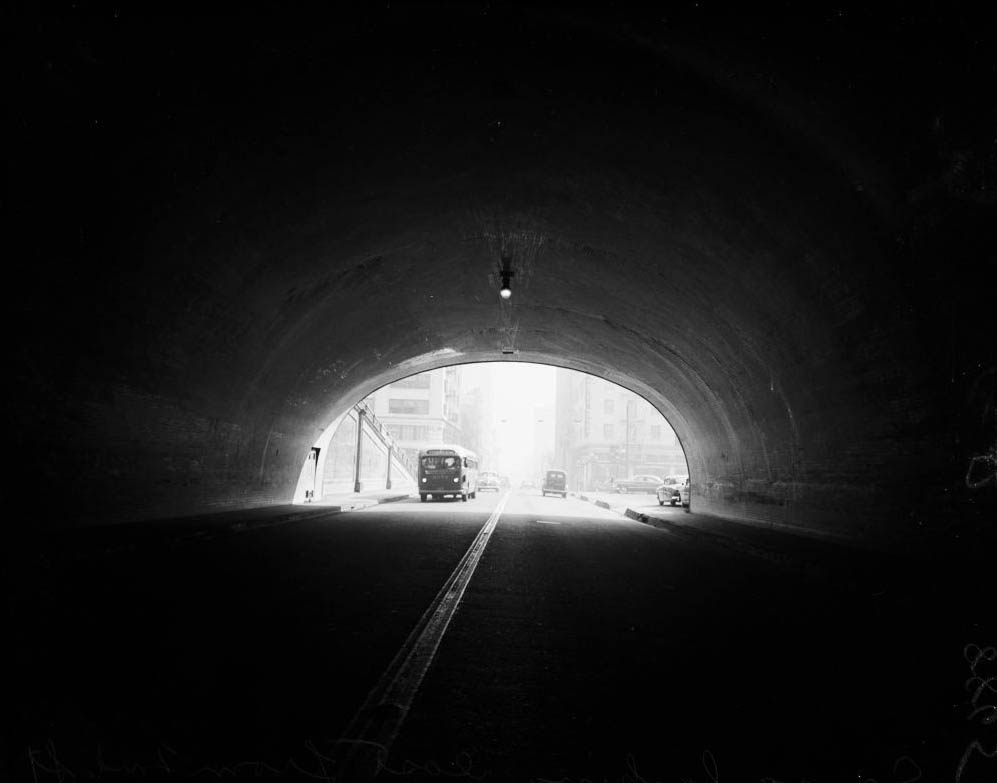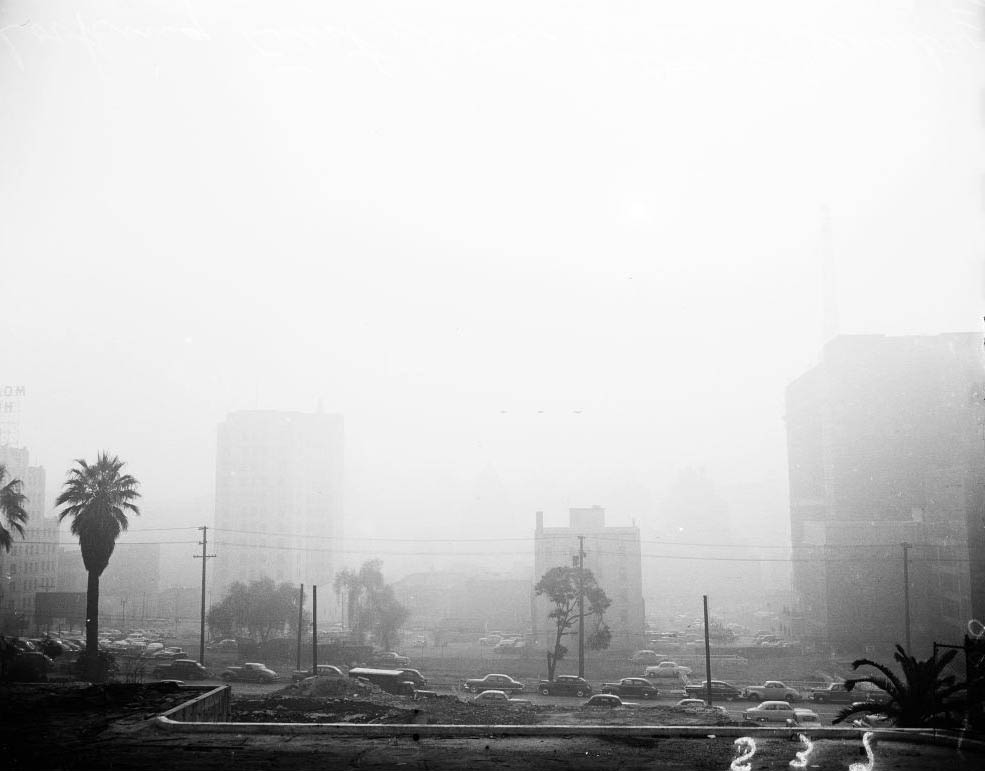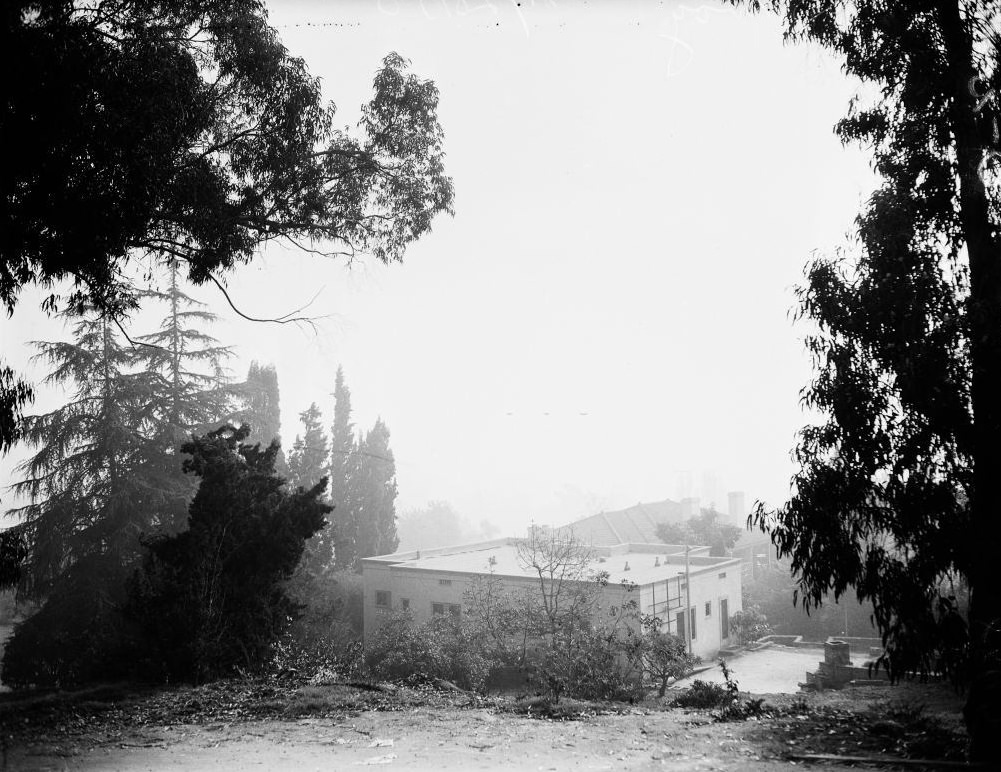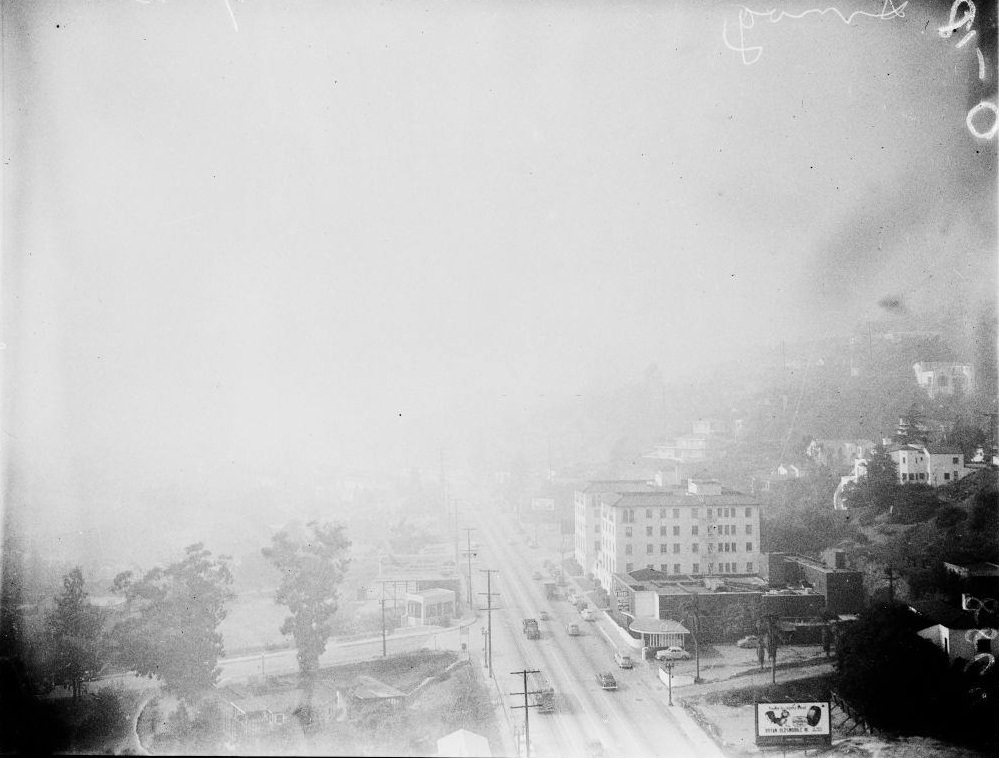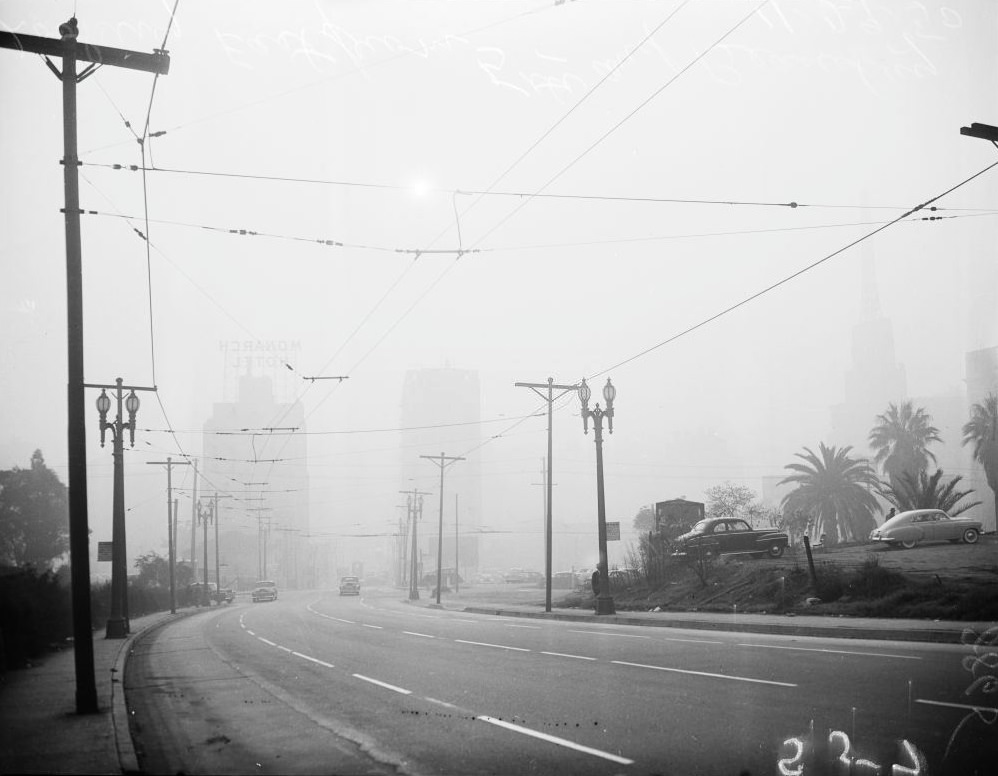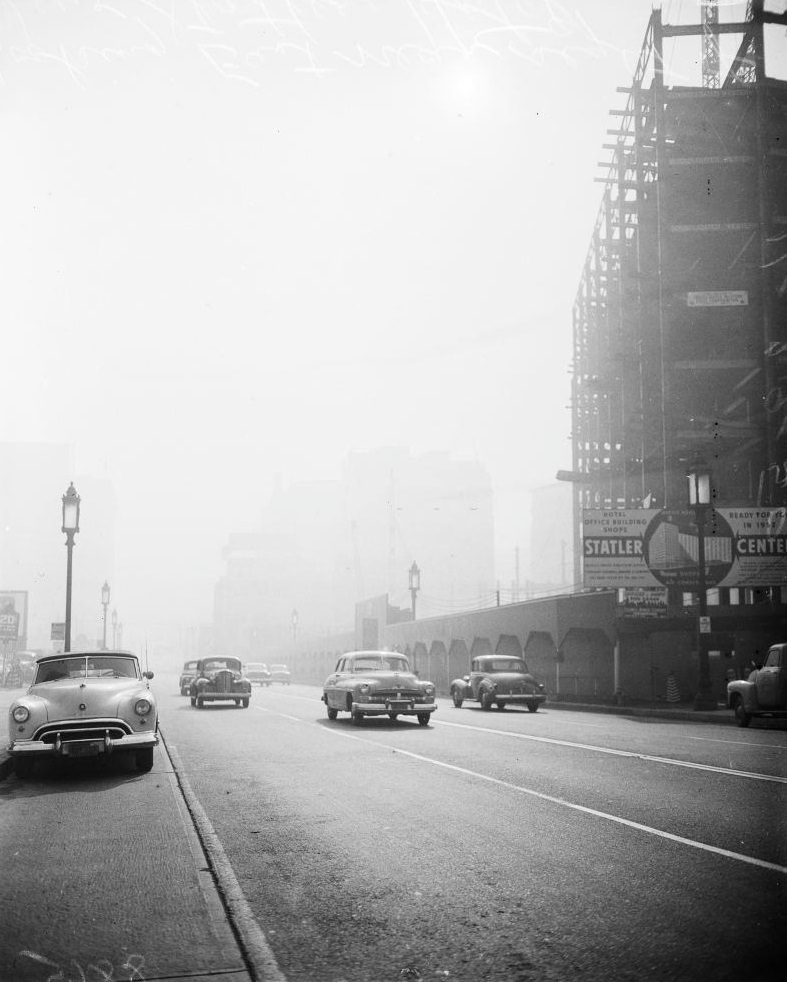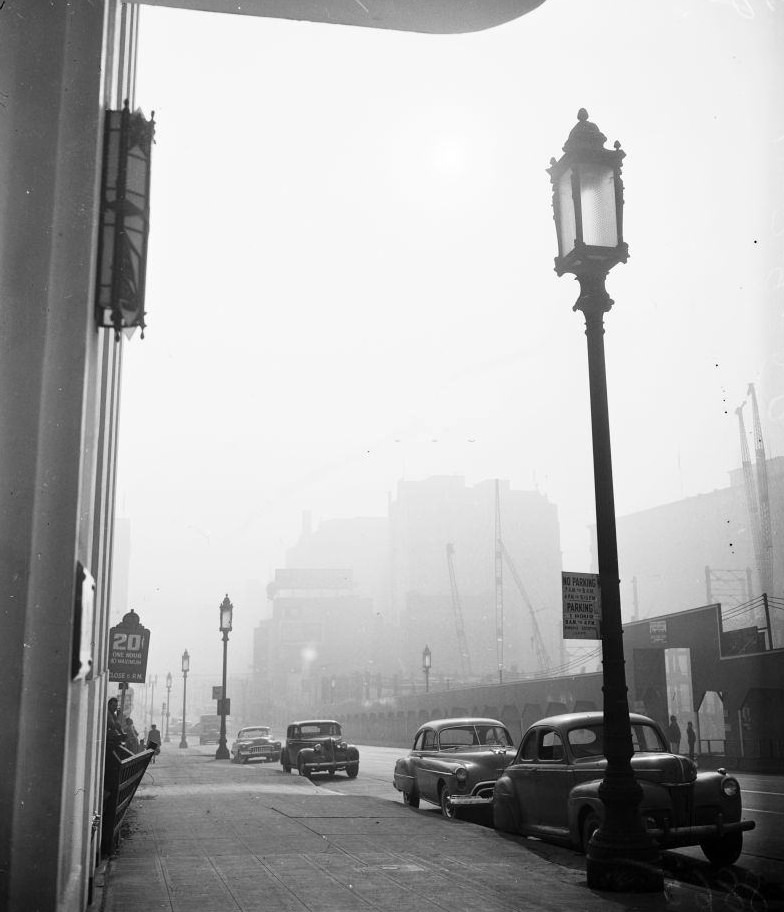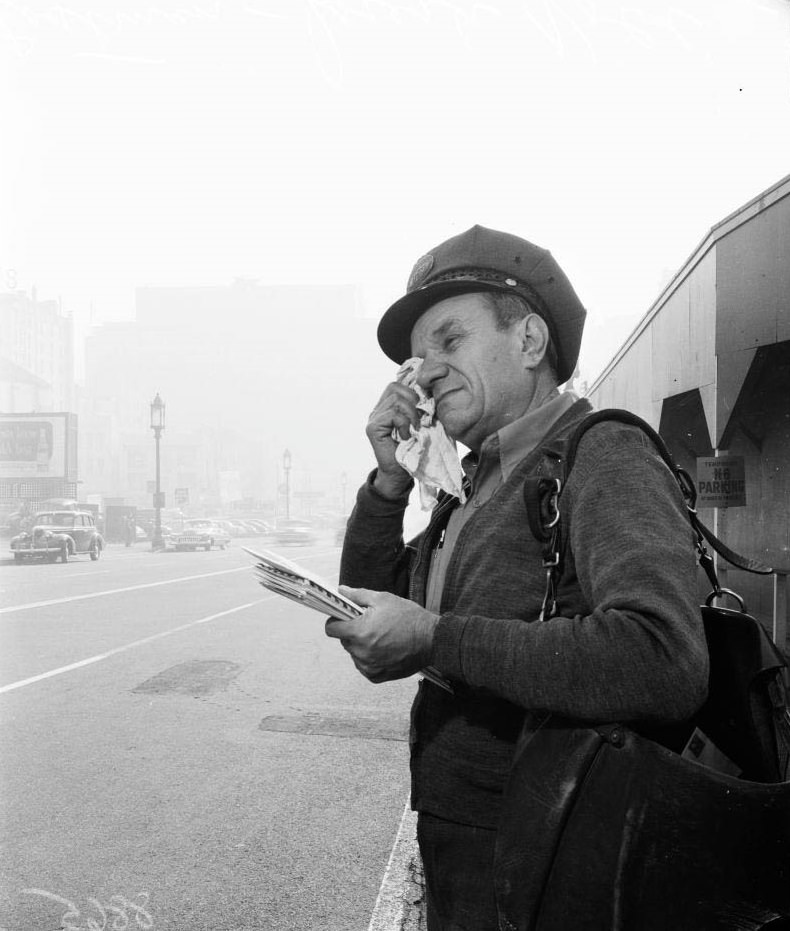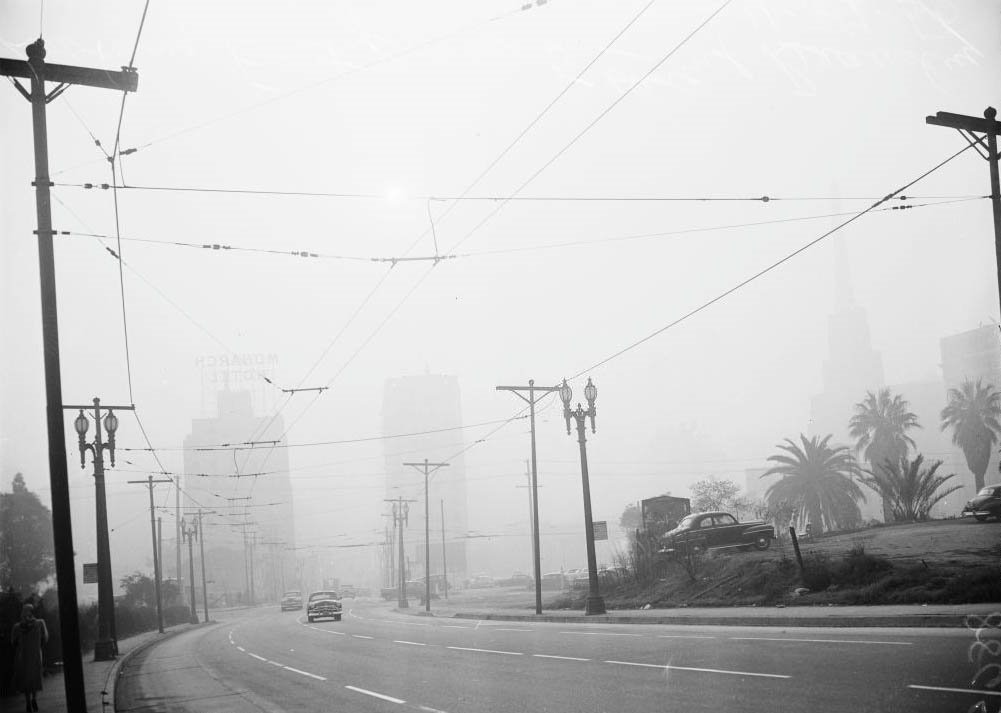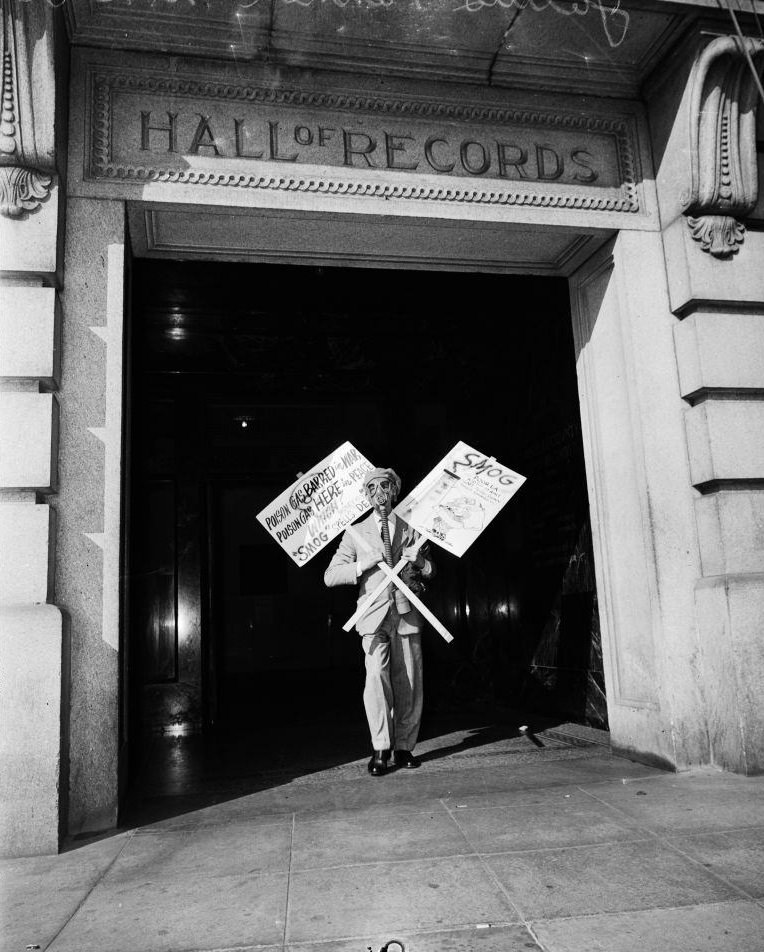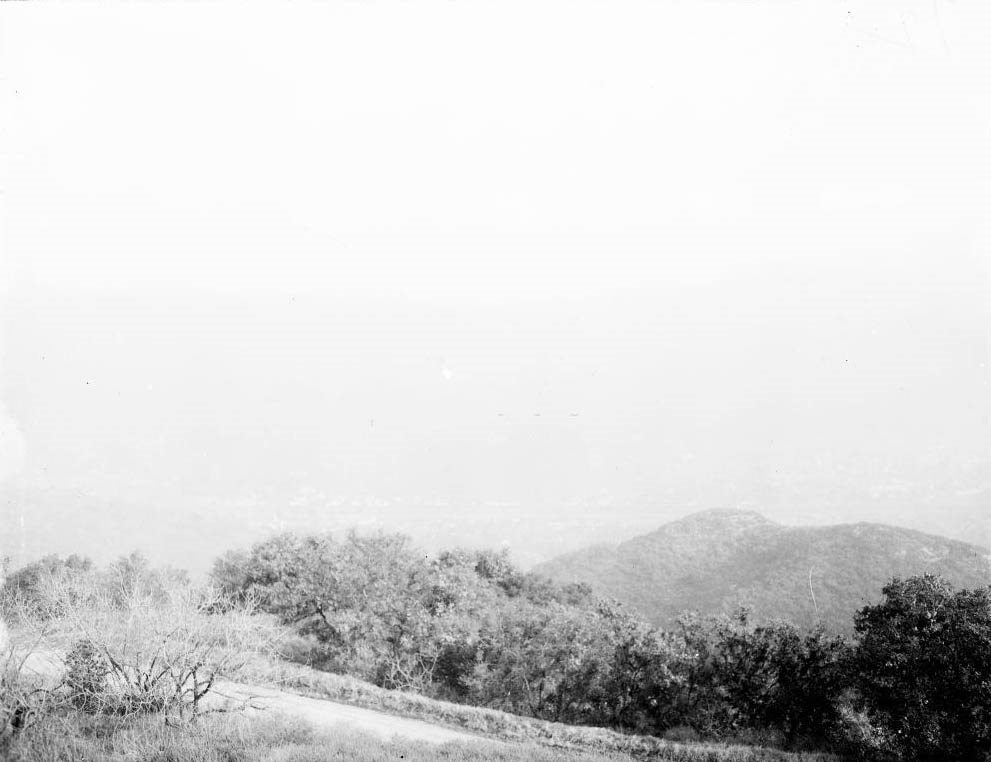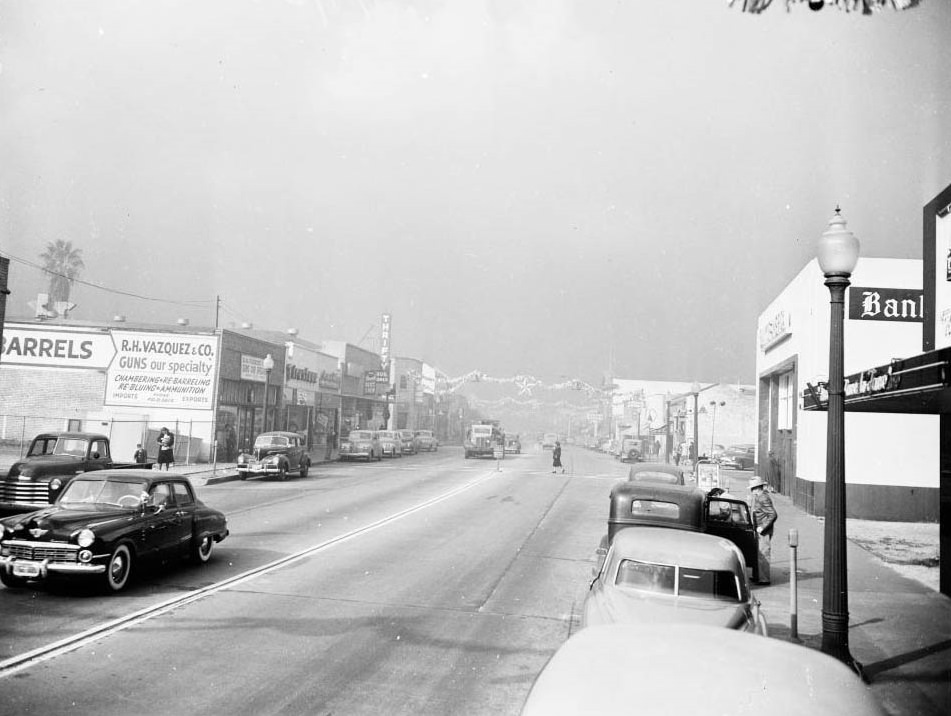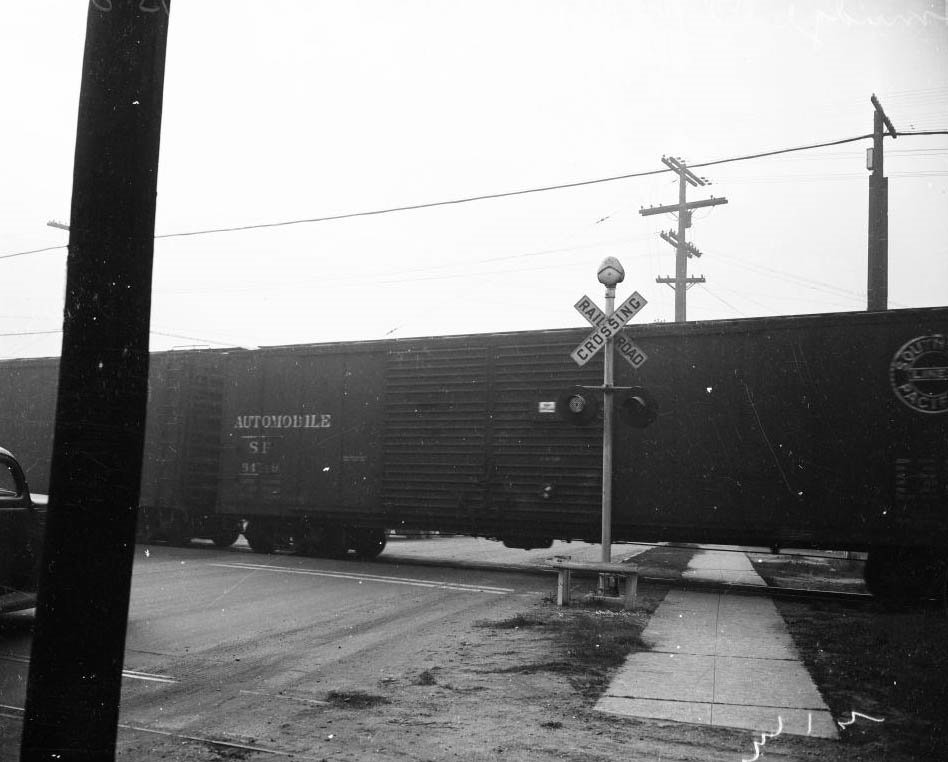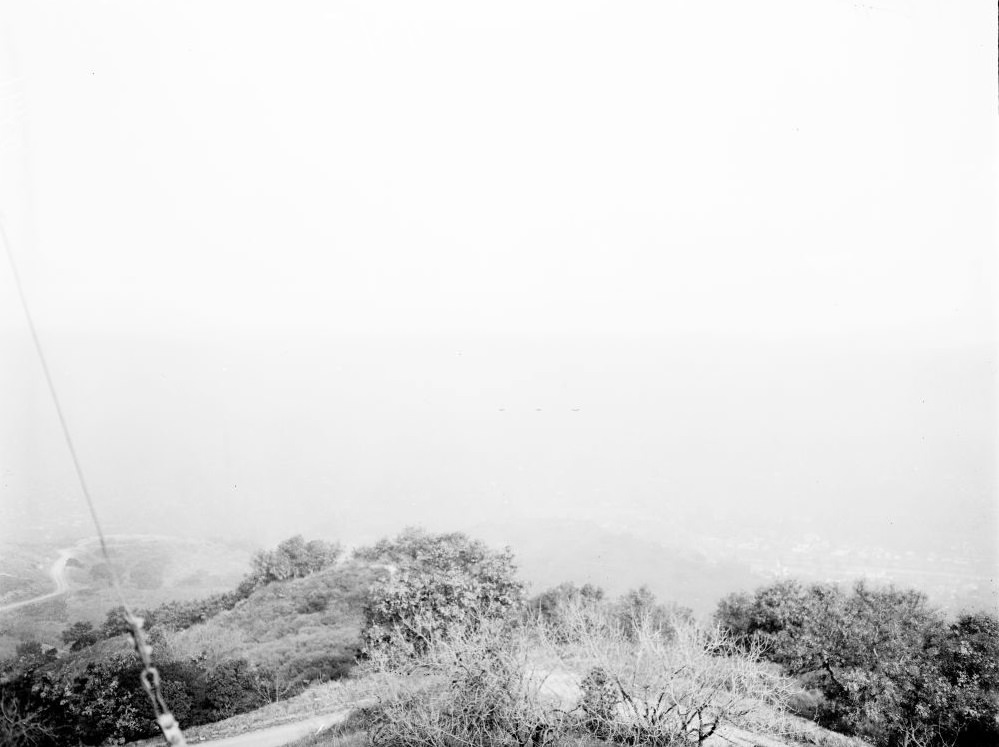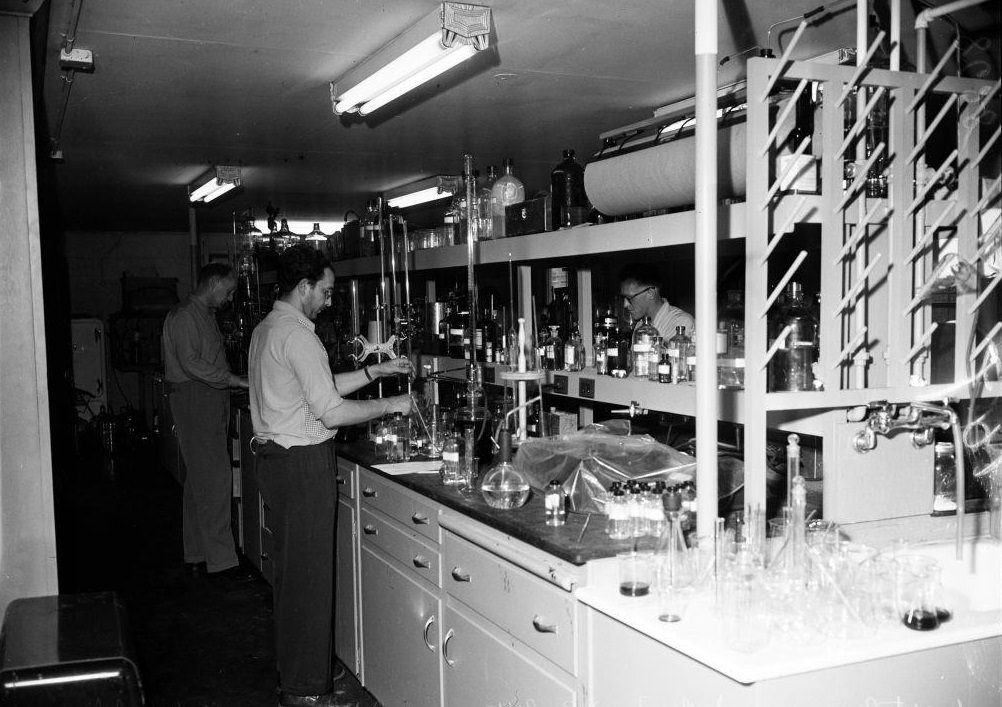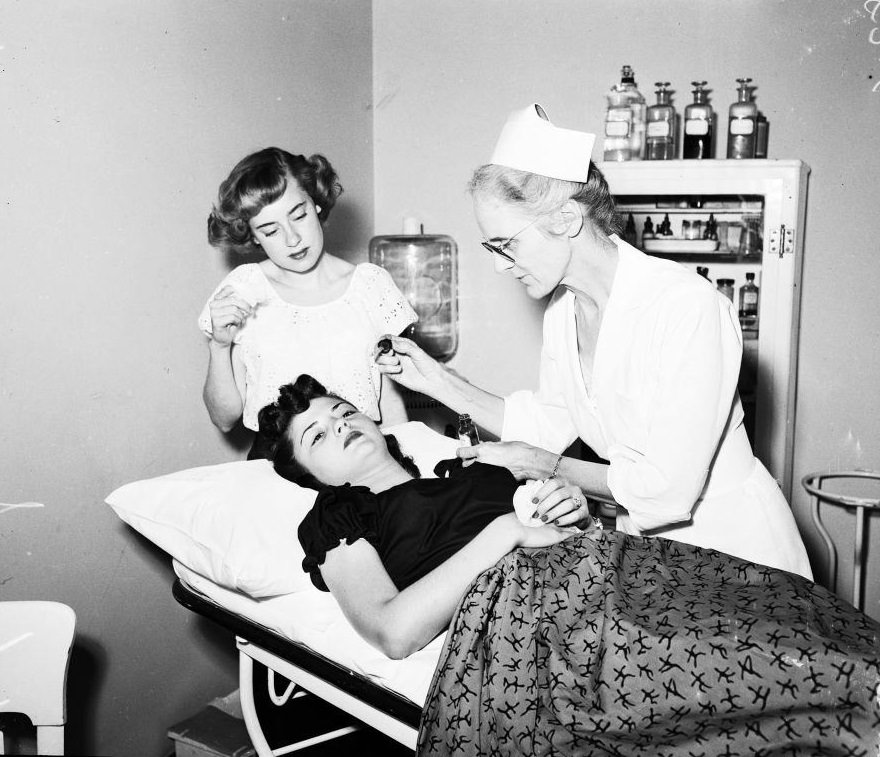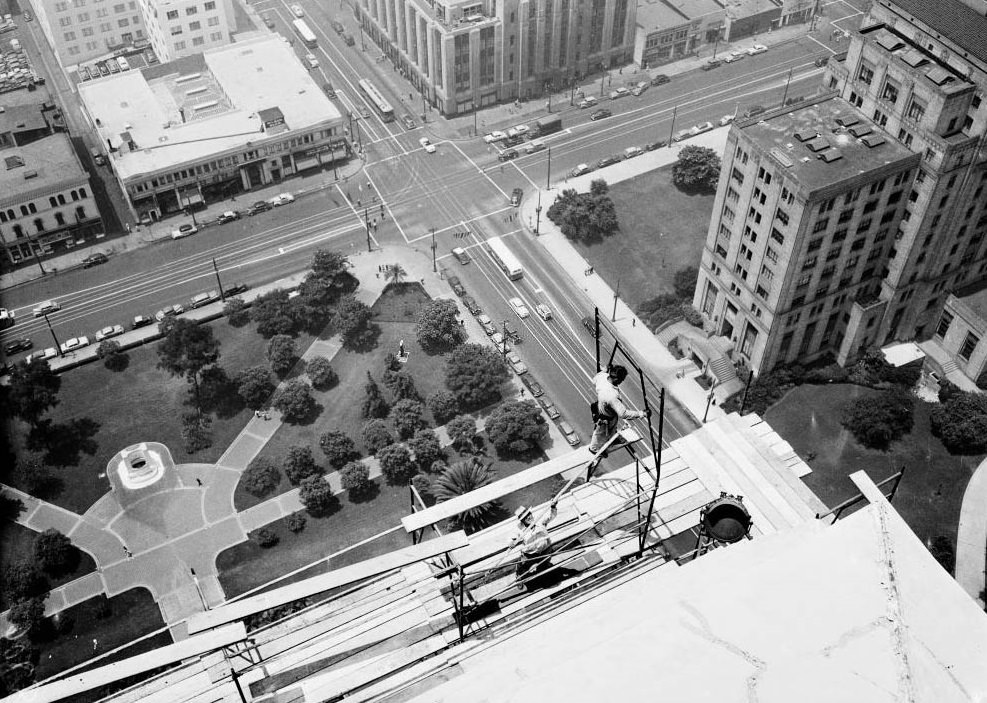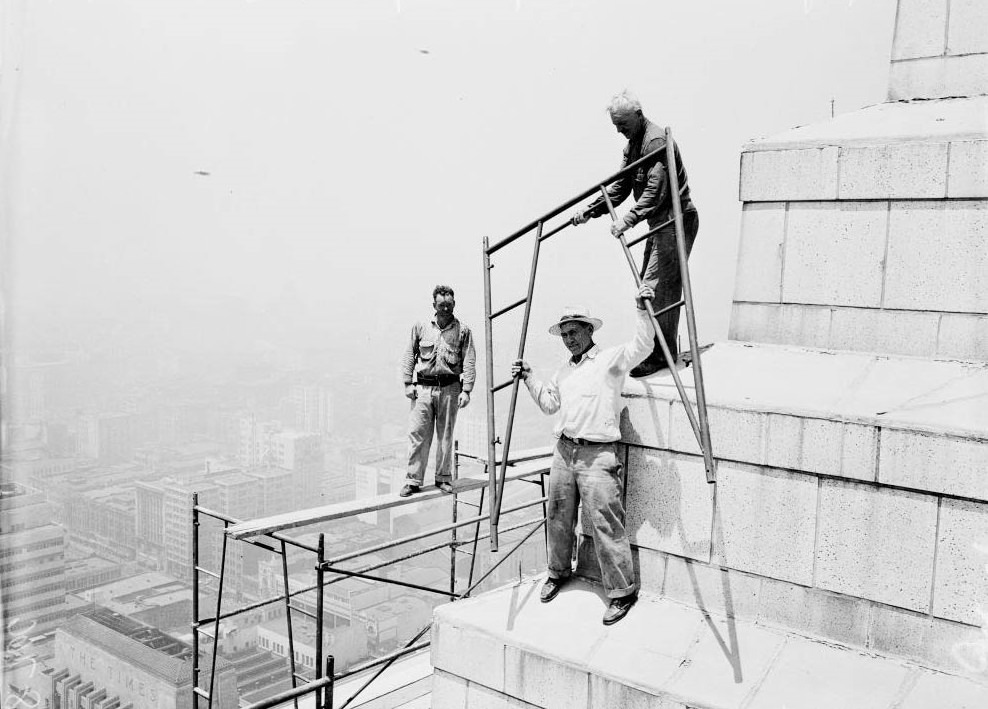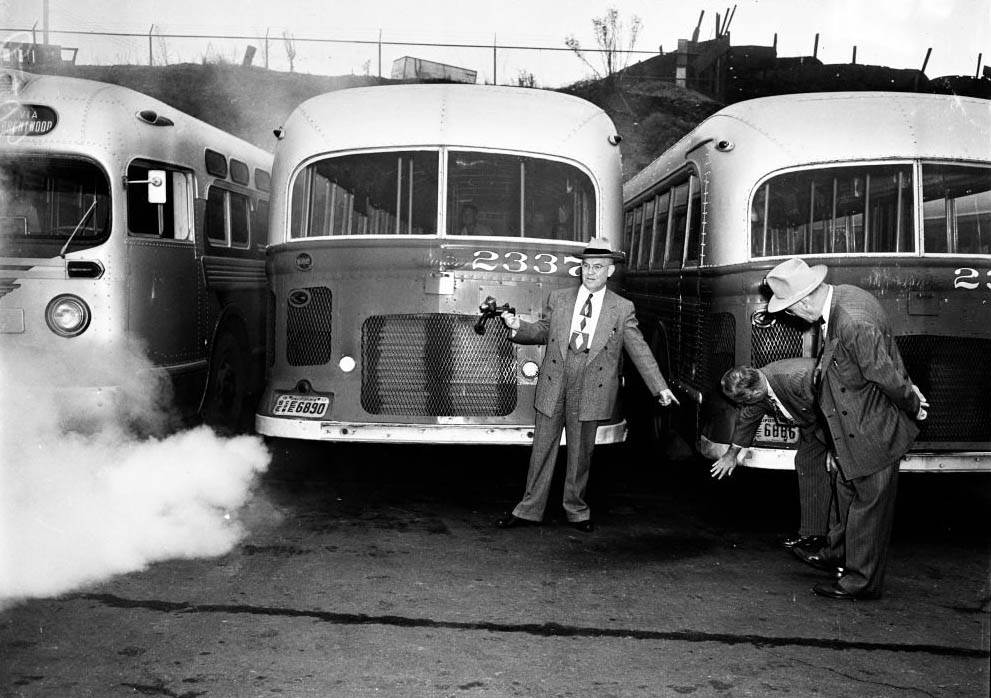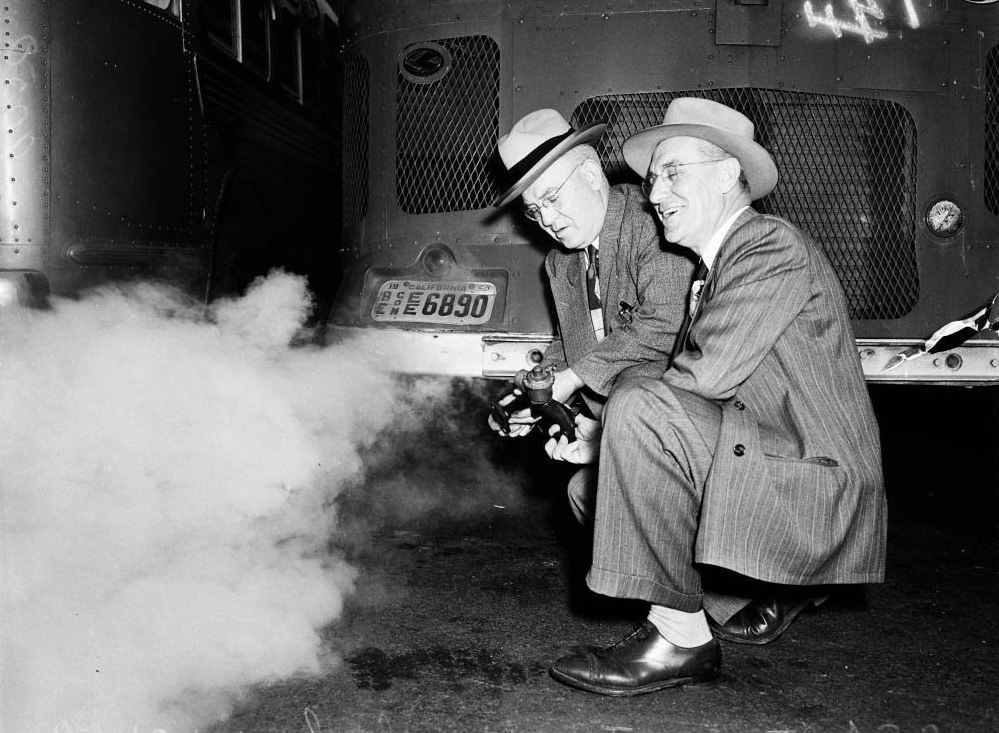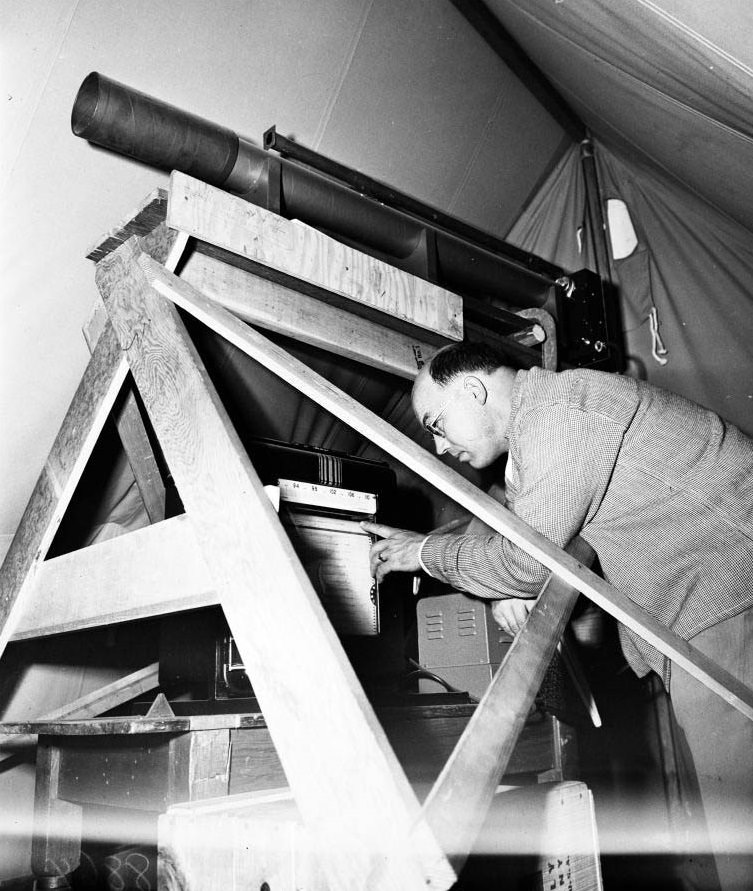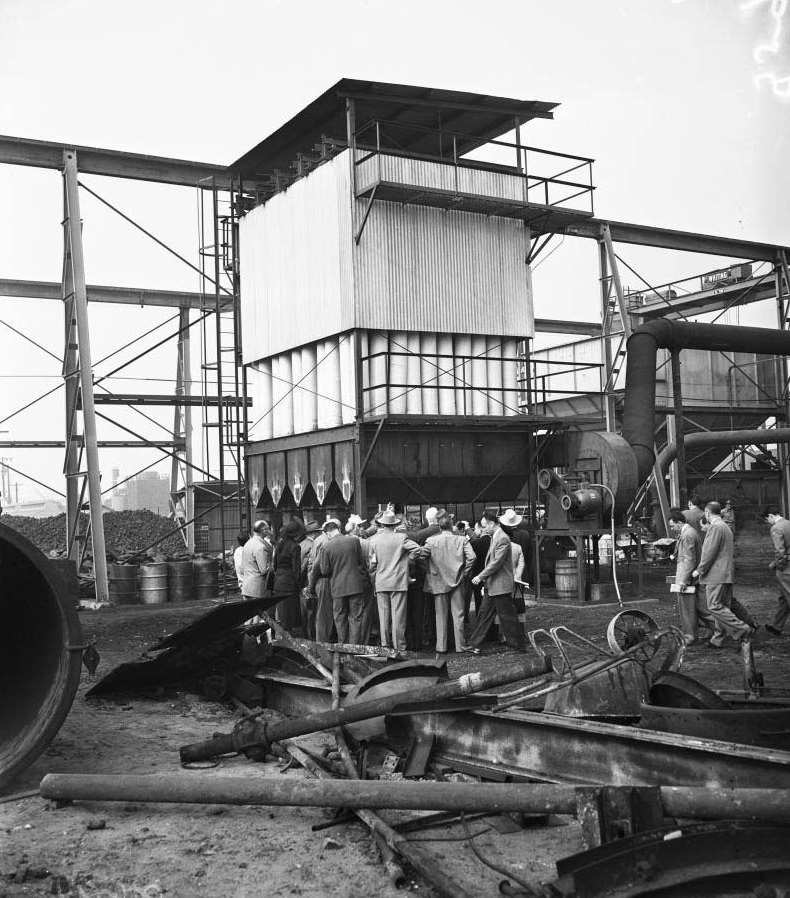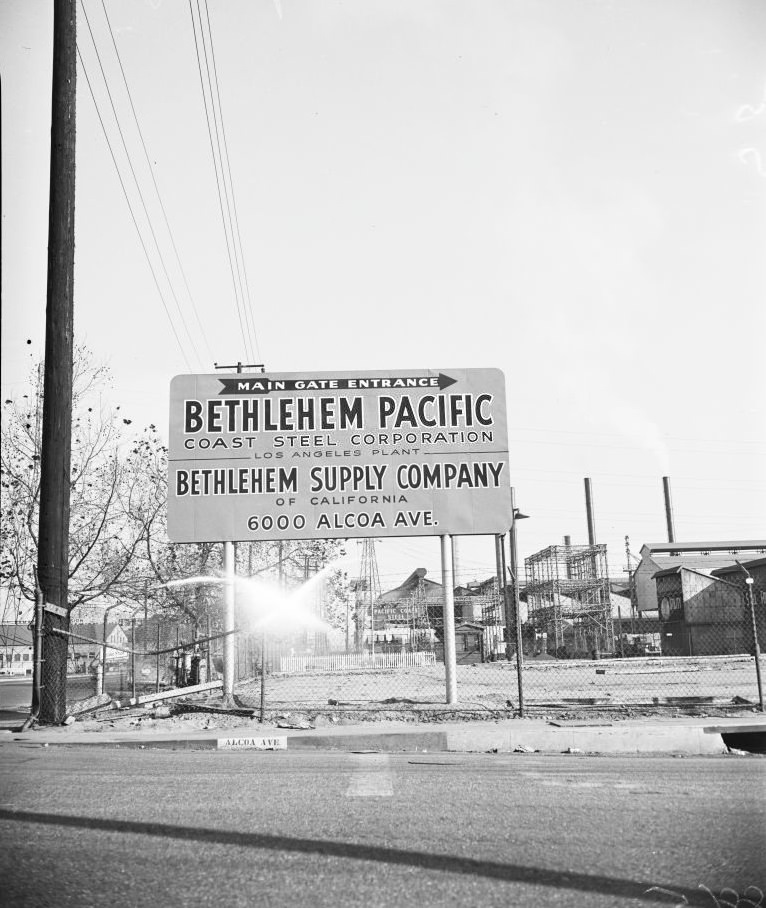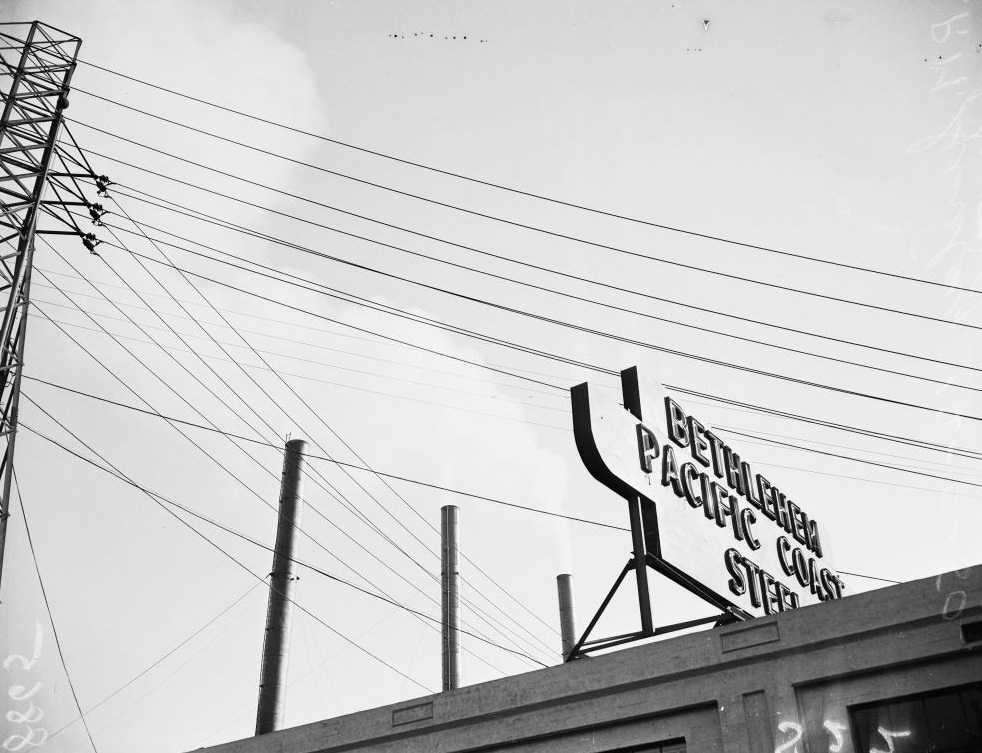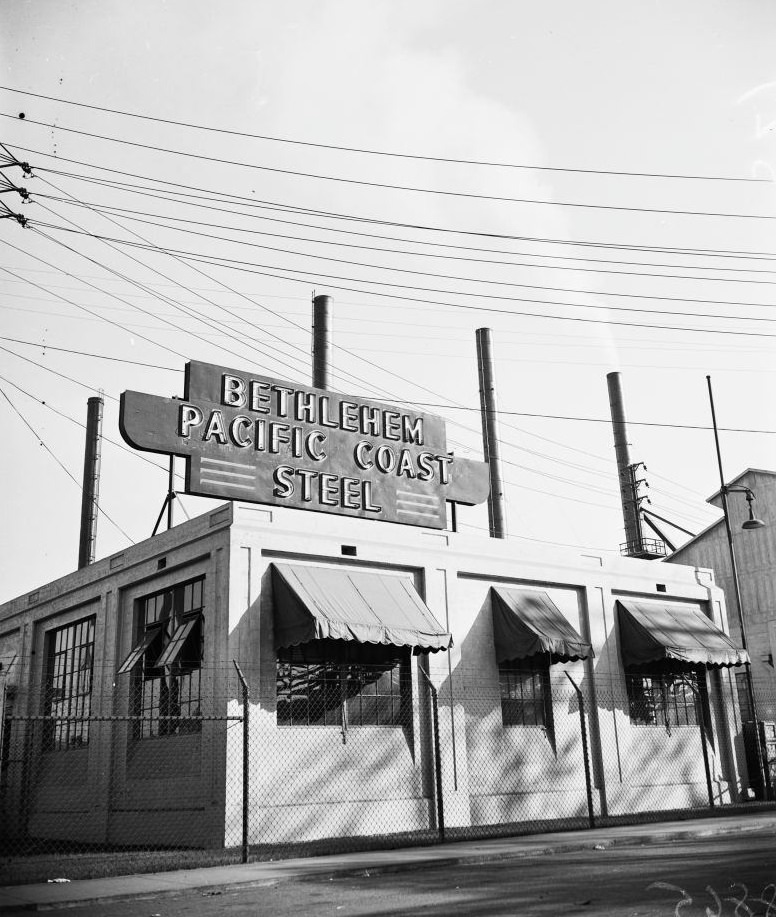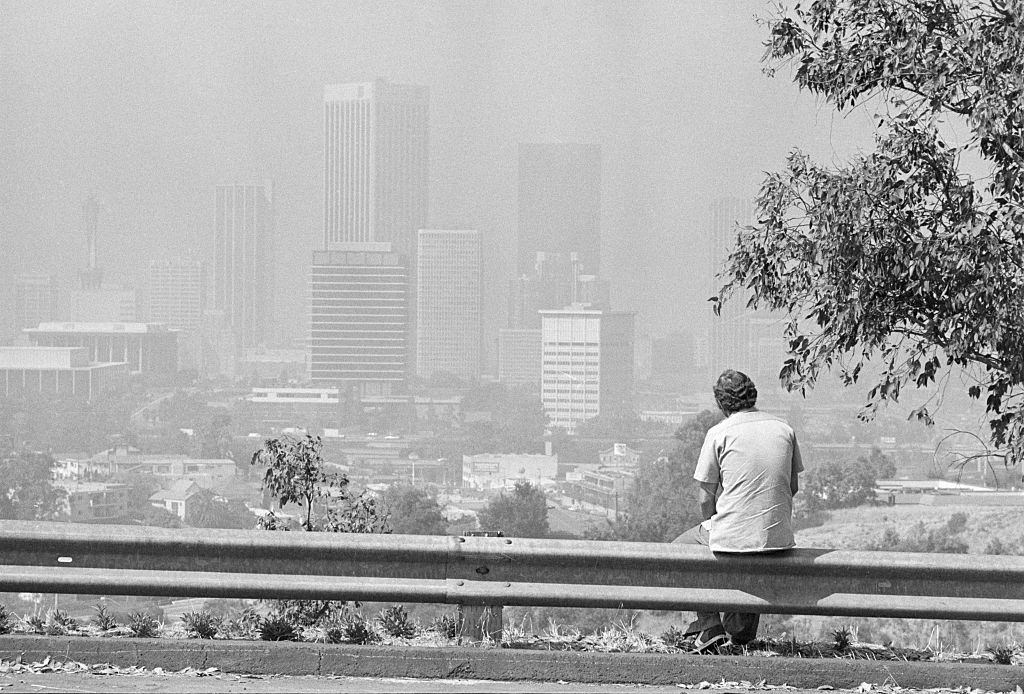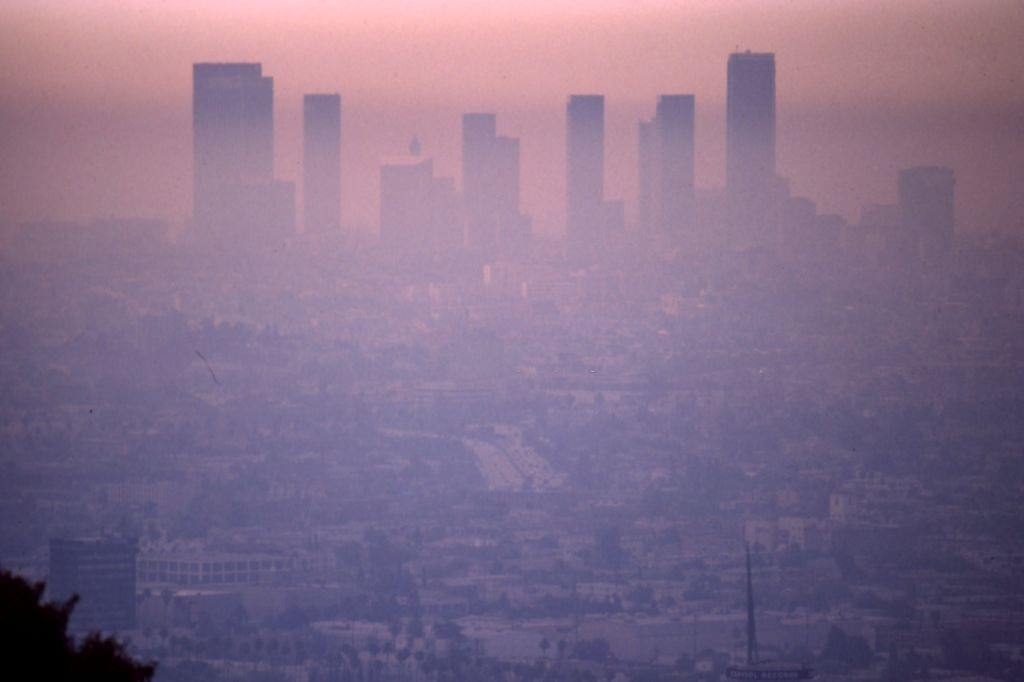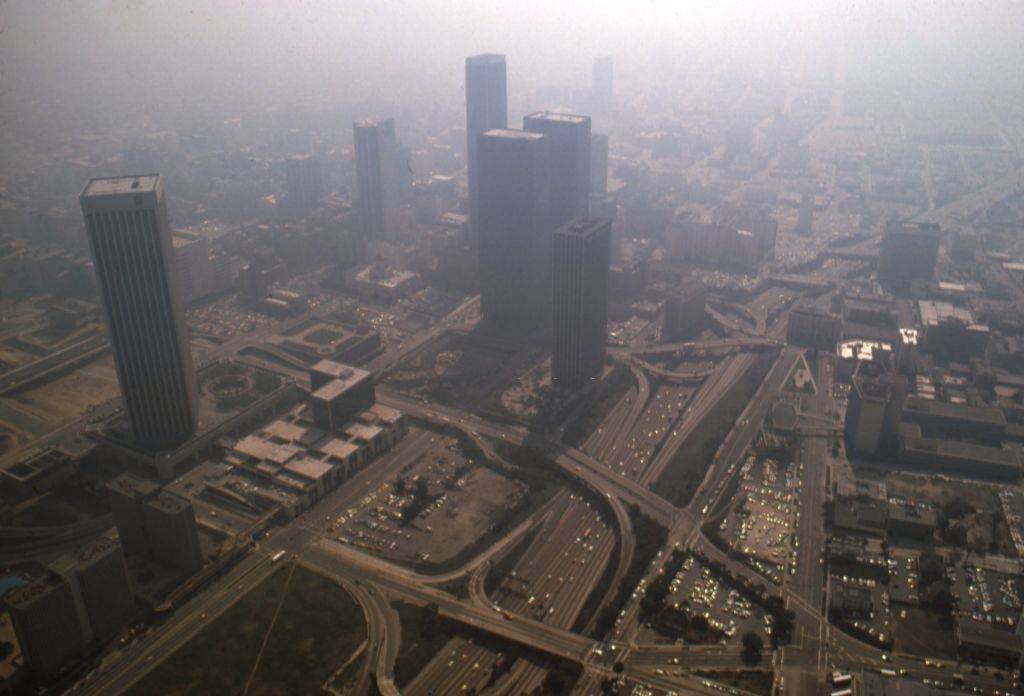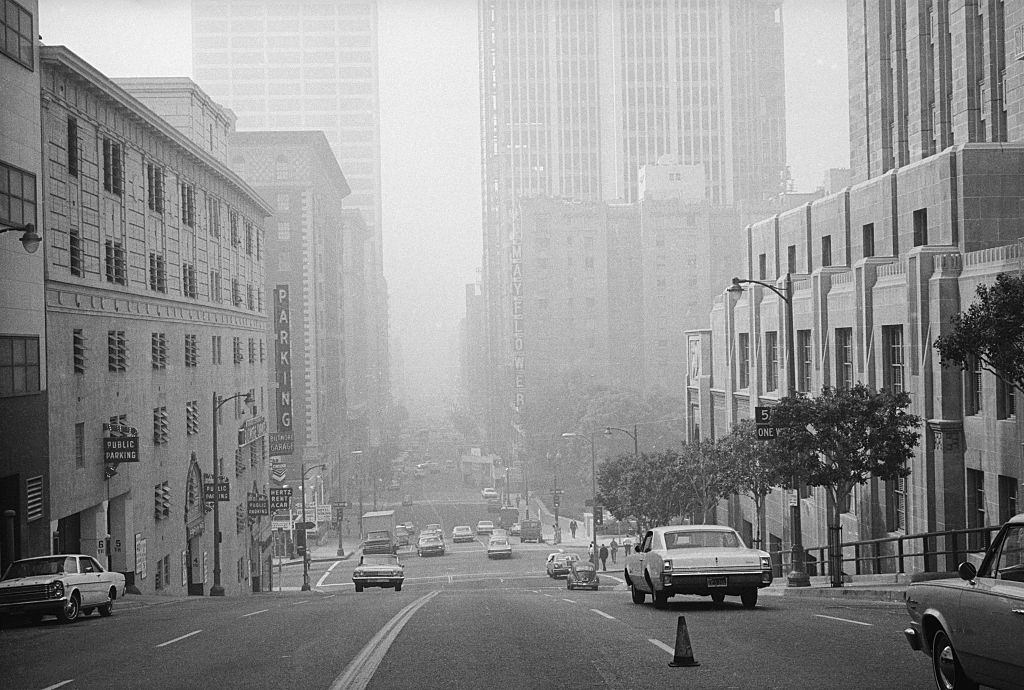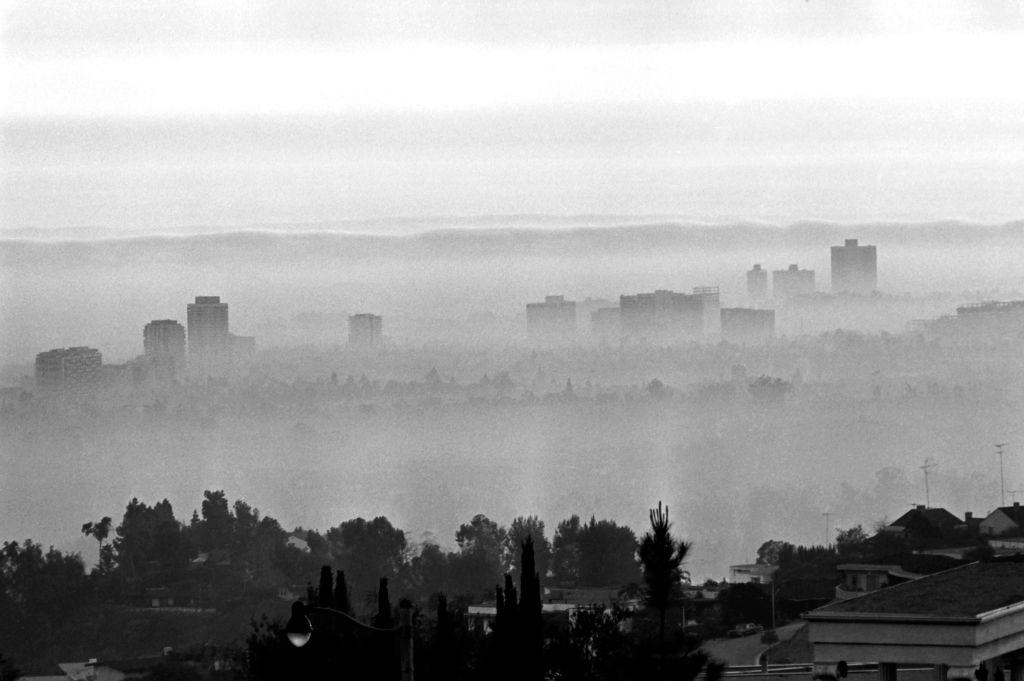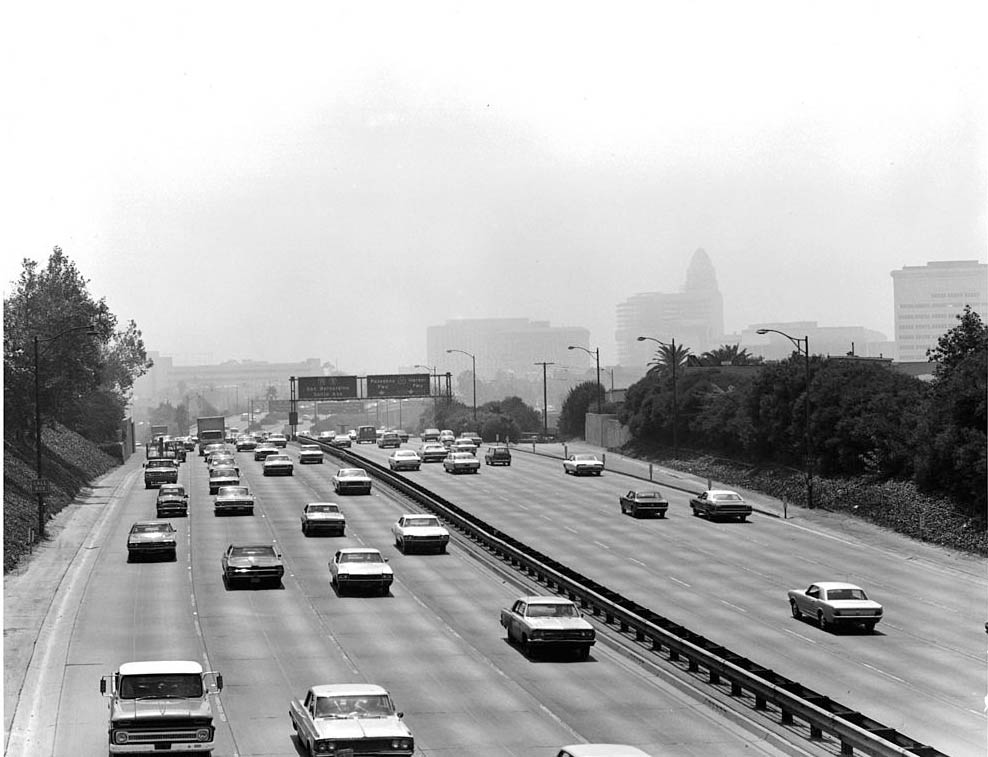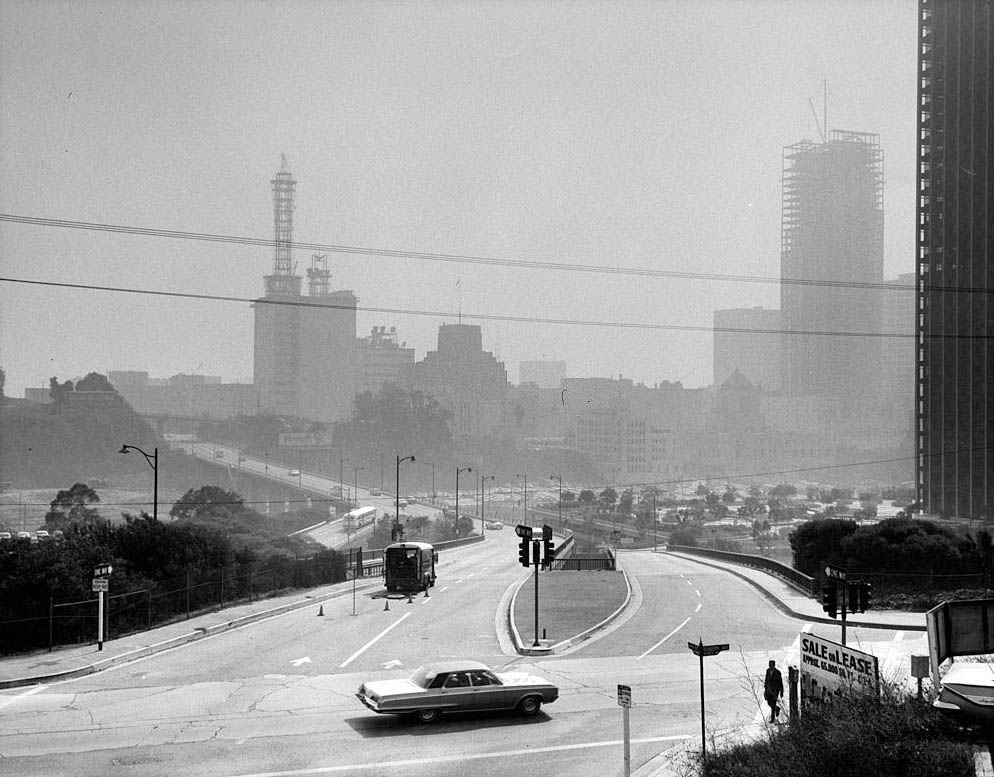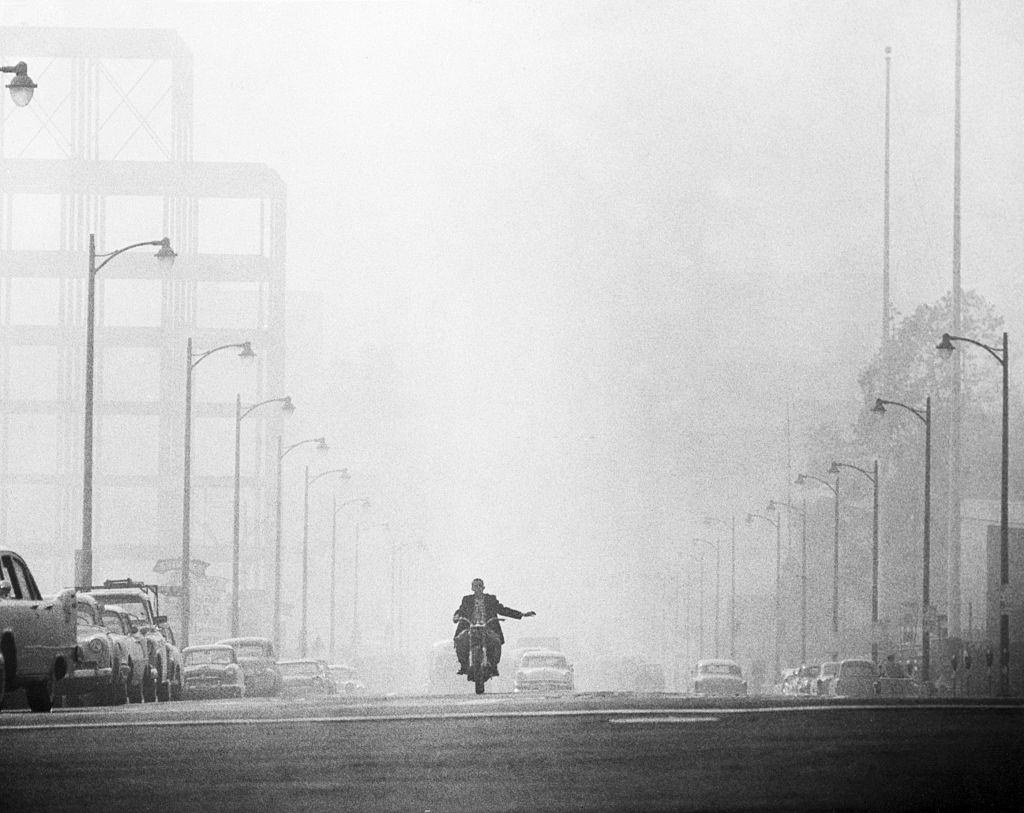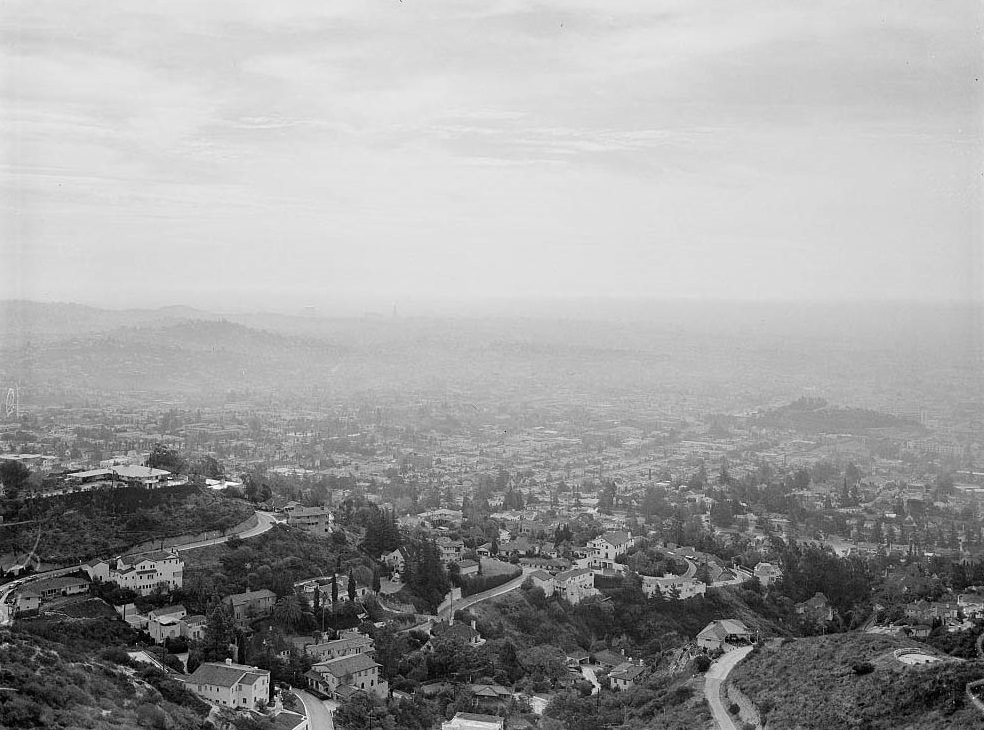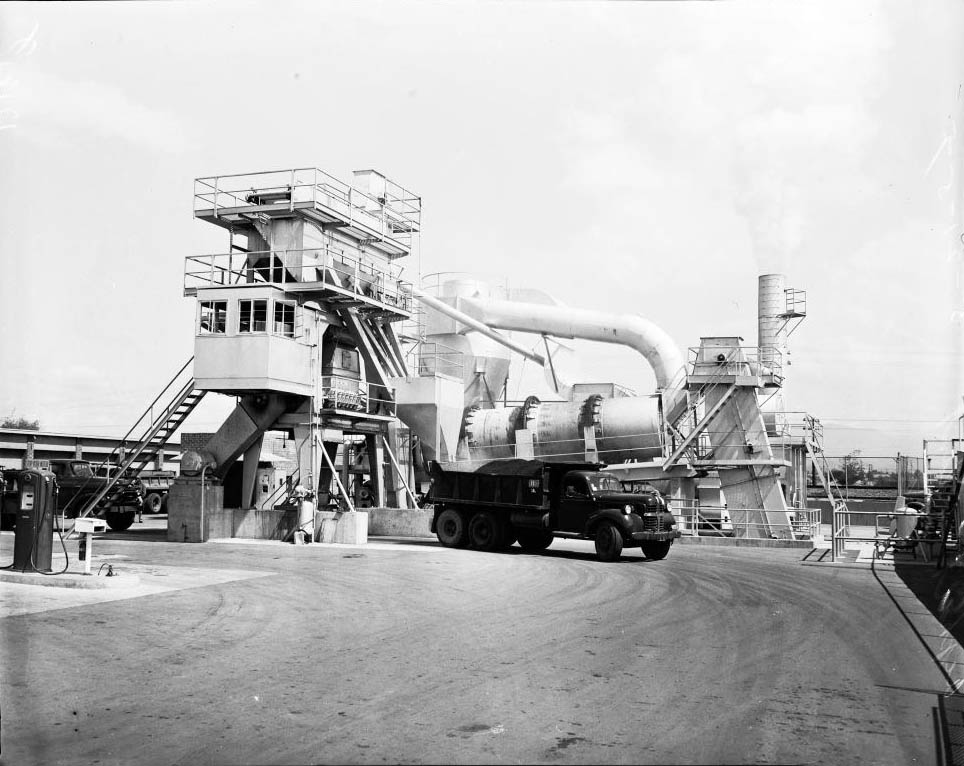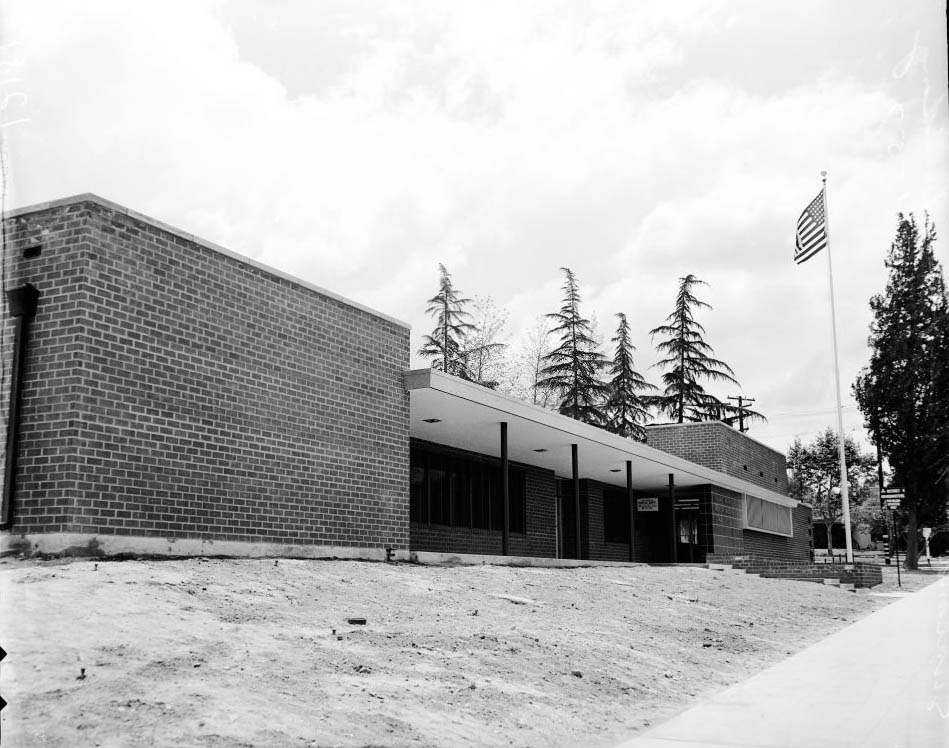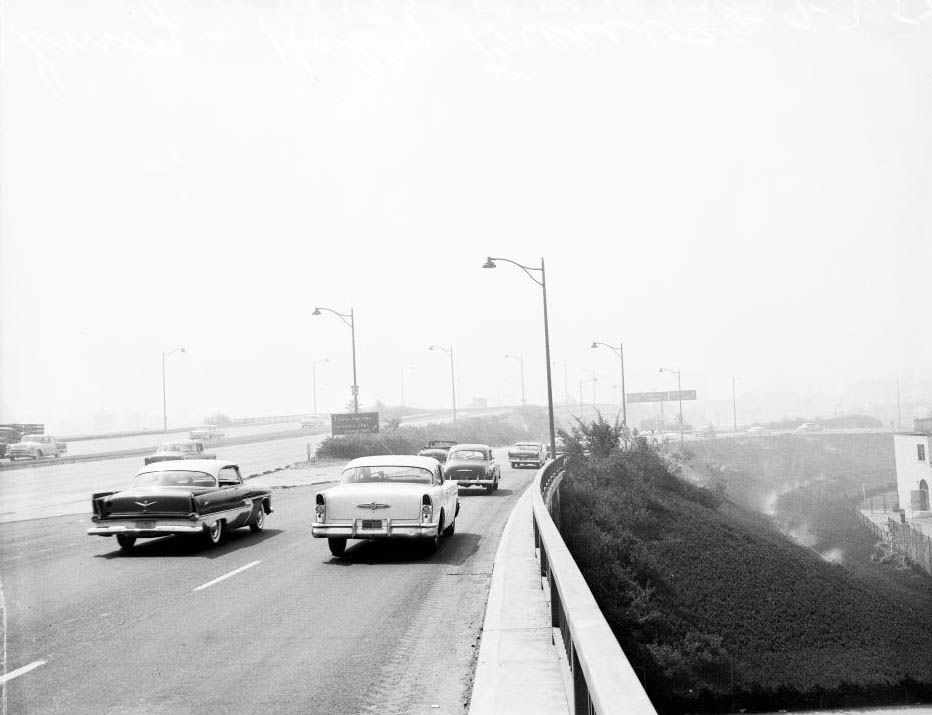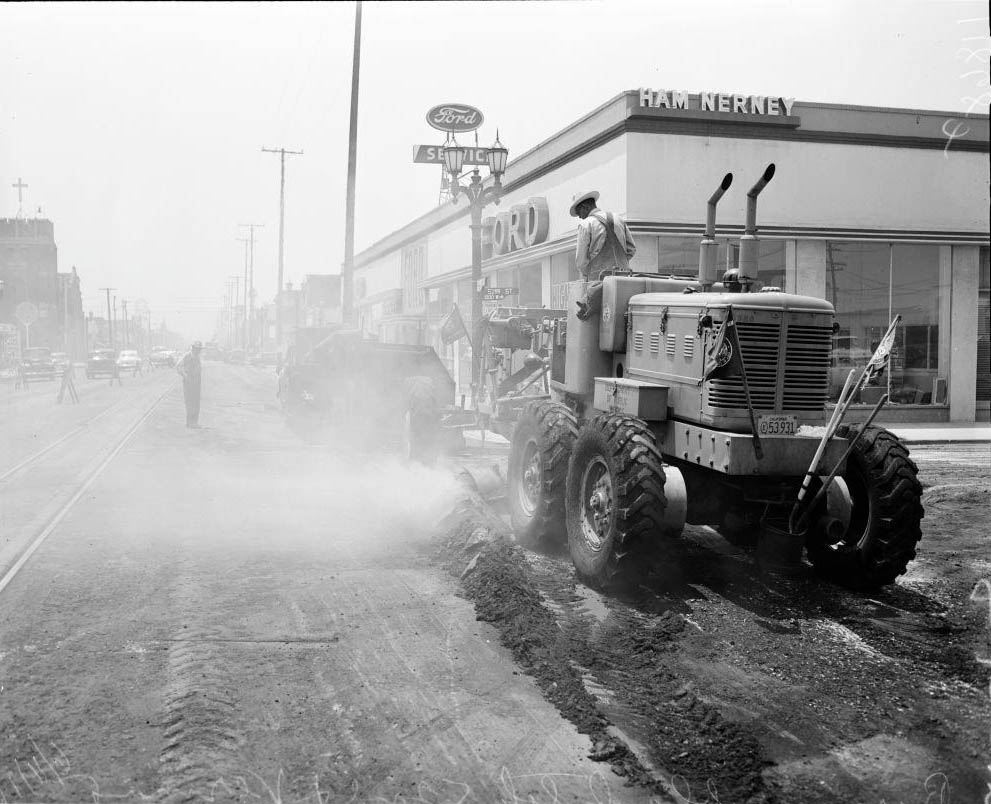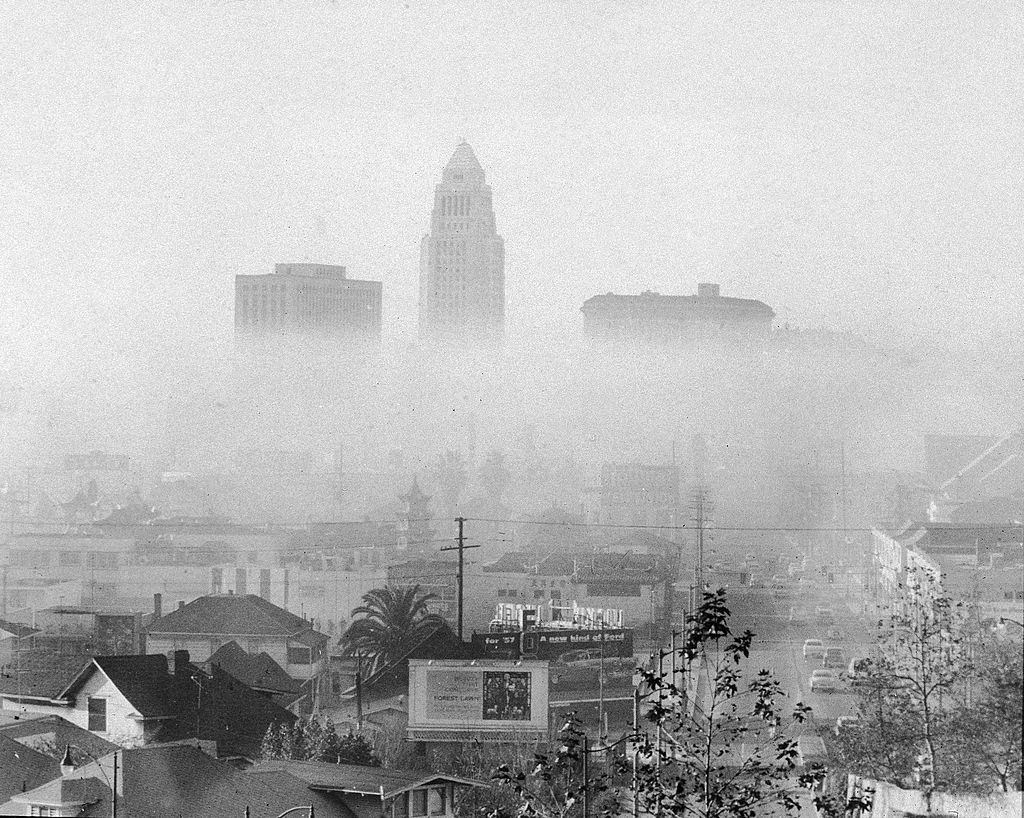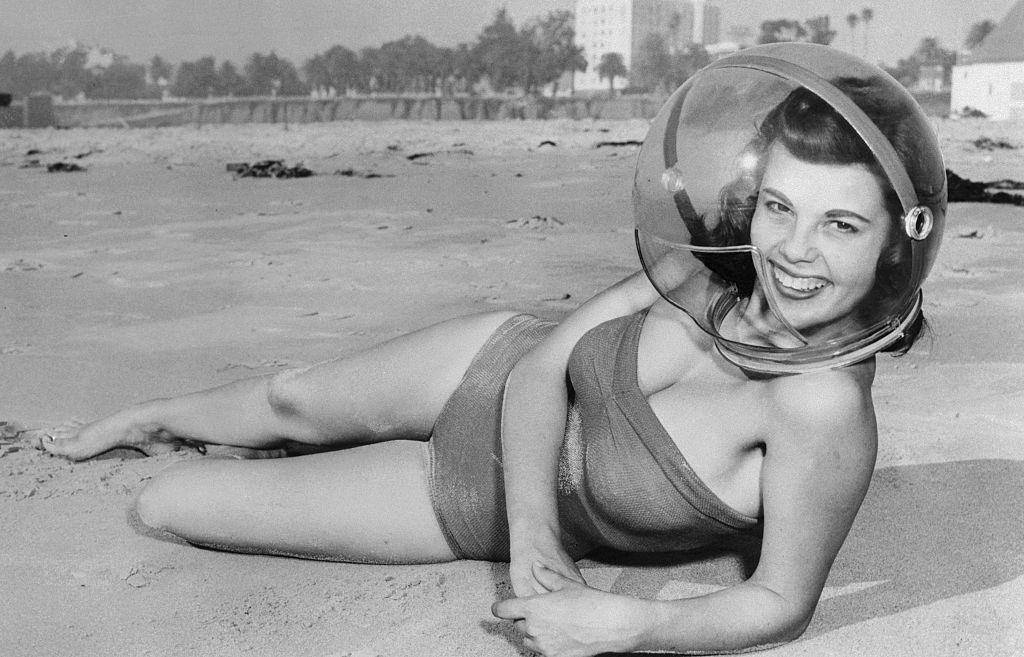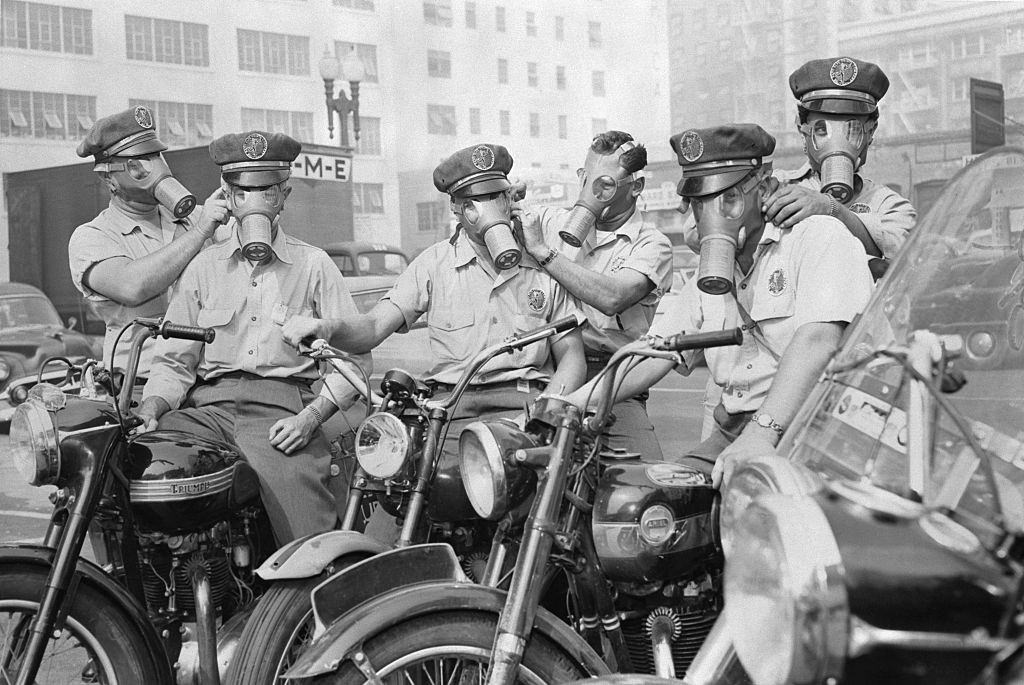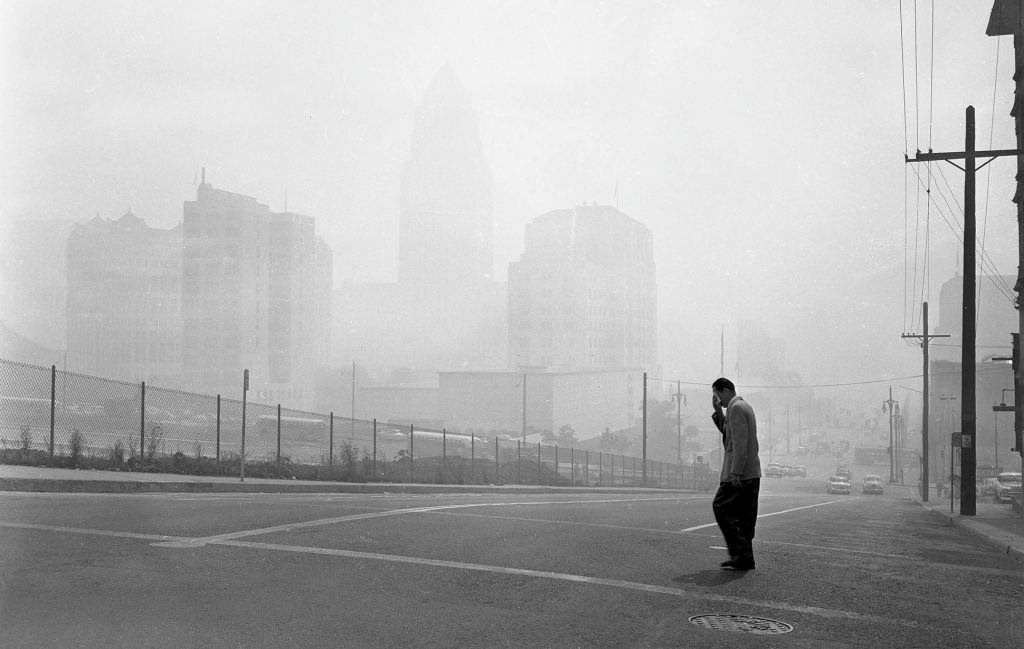Los Angeles residents thought that the Japanese attacked them with chemical weapons during World War II. The air was thick with a dense fog that made people’s eyes sting and runny noses throughout the city. Visibility was reduced to three city blocks. Residents later discovered that the fog had not been caused by an outside attack but by their vehicles and factories. L.A. was the most prominent car market the industry had ever seen due to wartime immigration into a city built for automobiles. But the influx of cars and industry, along with geography that traps fumes like a big bowl, had caught up to Angelenos. With millions of vehicles on the road and a temperature inversion, Los Angeles provided a near-perfect environment for the production and containment of photochemical smog.
Los Angeles has suffered from thick air pollution for years due to a high population, unregulated industries, a booming automobile industry, and natural geography. In 1943, the first big smog scare sent residents running from what they thought was a Japanese gas attack. The once clear coastal air had turned into a tear-inducing haze, and no one knew what caused it. Initially, it seemed like a geographical anomaly. As the number of cars in L.A. doubled from one to two million in the 1940s, air pollution became significant. Smog was initially attributed to chemical plants and backyard trash fires because scientists began to understand the effects of industry and development on the environment. An Arie Haagen-Smit, a biochemist at Caltech, made the connection with car exhaust in 1948. Haagen-Smit still had to fight backed by the oil industry researchers who tried to disprove his theories after his discovery.
Slowly, change followed. In 1963, U.S. Congress passed the Clean Air Act. A few years later, national laws were enacted requiring catalytic converters for all new cars. New rules helped reduce the L.A. haze, but the legislation came too late for the millions of residents who had grown up in a smog-filled environment. An estimated 27 percent of Angelenos had severely damaged lungs by 1987. Every year, almost 10,000 people in California died from air pollution-related illnesses until the 1980s.
California officials have been setting standards for decades that have phased out many inefficient engines for cars and trucks, as well as some of the dirtiest fuels for everything from lawnmowers to school buses to heavy-duty trucks. Los Angeles smog-fighters forced the cleanup of oil refineries, manufacturing plants, and consumer goods such as paints and solvents. The city and state also offered incentives to replace old trucks and buses. The ozone levels in Los Angeles are 40 percent lower than they were in 1970 – and that’s with twice as many cars. On a bad day, though, the air is still pretty rough, and one can easily see why the city has earned its derisive nickname: Smell-A.
#1 Broadway looking south, City Hall in smog, Hall of Records looking west from City Hall and Views from City Hall tower, 3 September 1948
#2 Broadway looking south and Views from City Hall tower, 1948.
#3 Looking west from City, 1948.
#4 Los Angeles in vicinity of General Hospital, 1948
#5 Smog blanket laying over city, 1948
#6 Los Angeles smog, 1948
#7 Views looking east from Hollywood Boulevard and Vine Street, 1948
#8 Views looking east from Hollywood Boulevard and Vine Street, 1948
#9 Looking south from Fourth Street and Olive Street, 1948
#10 Mission Hosiery Mills, 3764 South Broadway Place, 1952
#11 Hammond Lumber Company stacks at Washington Boulevard and Alameda Street at 3:25 p.m.; Morris P Kirk and Son Inc, 1948
#12 Columbia Steel Company at Torrance, showing smoke coming out of smoke stacks, 1948
#13 Smog hearing by grand jury, 1948
#14 Protestants at Board of Supervisors with plackards, 1948
#15 Smoggy Day at City Council, 1948
#16 Protestants at Board of Supervisors with plackards, 1947
#17 New smog car, 1947
#18 Looking south from City Hall tower, 1947
#19 View from City Hall, 18 July 1947
#20 Looking south from City Hall tower, 1947
#21 Miss Mildred Fitzpatrick, 1947
#22 Second of a series of three pictures showing stages of smog formation in Los Angeles, California, 1940s.
#23 Stages of smog formation in Los Angeles, California, 1940s.
#24 Bethlehem Steel Corporation at 3396 East Slauson Avenue gives out with smog from two smoke stacks at 2:00 p.m., 1950
#25 Varnish Workers Picket Factory, 1950
#26 Smog from San Rafael Drive overlooking Highland Park. Smog — pix looking north from San Rafael Hills showing Mount Wilson, 1949
#27 Smog from San Rafael Drive overlooking Highland Park. Smog, 1947
#28 Smog east of City Hall from 25th floor, City Hall, From 8th floor, City Hall, 1949
#29 Smog east of City Hall from 25th floor, City Hall from 8th floor, 1949
#30 Smog east of City Hall, 1949
#31 9th floor Hall of Justice, 1949
#32 South east of City Hall from 9th floor Hall of Justice, 1949
#33 Smog east of City Hall, 1949
#34 South east of City Hall, 1949
#35 Smog, 1949
#36 Smog from 9th floor Hall of Justice, 1949
#37 Two women wearing mask for protection from smog, 1949
#38 A Smoggy day in Los Angeles, 1949
#39 Aerial views of smog over Los Angeles, 1949
#40 Aerial views of smog over Los Angeles, 1949
#41 Smog from Monterey Hills, South Pasadena, 1949
#42 Smog from Mount Washington Drive looking southwest toward Los Angeles River and Elysian Park, 1949.
#43 Smoking stack from Mercer Hotel, 1347 South Hill Street, throwing heavy clouds of smoke upward, 10 March 1949
#44 View from Fort Moore Hill (South toward Broadway), 4 January 1949
#45 View from 212 North Vignes Street (West toward Civic Center), 1949
#46 View from Fort Moore Hill (South toward Broadway), 1949
#47 View from Fort Moore Hill (South toward Broadway), 1949
#48 View from Fort Moore Hill (South toward Broadway), 1949
#49 View from Fort Moore Hill, 1949
#50 Photographing density of atmosphere, 1949
#51 Union Depot, Freeway at Figueroa Street junction looking South, 1949
#52 Arroyo Freeway at Figueroa Street junction looking South Hill Street from Hill Street tunnel looking south, 1949
#53 Taken from City Hall, August 1949
#54 Smog from roof of Occidental Building, looking southeast, 1949
#55 Smog from roof of Occidental Building, looking southeast, 1949
#56 Looking west from City Hall, 1949
#57 Smog from roof of Occidental Building, looking southeast, 1949
#58 Nurse Ruth Bergman taking care of Mrs. John Wickham, 1949
#59 Smoggy Road in L.A., 1949
#60 George Ichien (Air Pollution Control Inspector, atop Cecil Hotel looking for violators, 1948
#61 View looking east from Mode-O-Day building at 8 a.m., 1948
#62 Views from various directions from Cecil Hotel, 1948
#63 Views from various directions from Cecil Hotel, December 1948
#64 Thomas A Dobbie, Junior (Air Pollution Control inspector looks over horizon for violators). Smog control in downtown Los Angeles, 7 December 1948.
#65 Thomas A Dobbie, Junior (Air Pollution Control inspector looks over horizon for violators) and W.C Tiffany (Maintenance Foreman, Pacific Telephone & Telegraph Company), 1948
#66 Smog blanket over Los Angeles in vicinity of General Hospital, 1948
#67 Wrecks caused by smog obscuring road, 1948.
#68 Wrecks caused by smog obscuring road, 1948
#69 General views of autos and trucks piled up in freak accident on east side of Lincoln Boulevard, south of Manchester Avenue, 1948
#70 Wrecks caused by smog obscuring road, 1948.
#71 Civic Center seen from the Pasadena Freeway, showing smog, 1948
#72 Don Lee Television Station in Hollywood Hills; Picture shot from Vine Street and Sunset Boulevard, north toward Hollywood Hills, 1948
#73 Vine Street and Sunset Boulevard, north toward Hollywood Hills, showing dust, smudge and smog hanging over Hollywood, 1948
#74 Broadway looking south, 1948
#75 Fuller’s men in connection with smog, 1955
#76 Smog in Los Angeles
#77 Joan Sanders Holding a Cocktail in Los Angeles, 1950
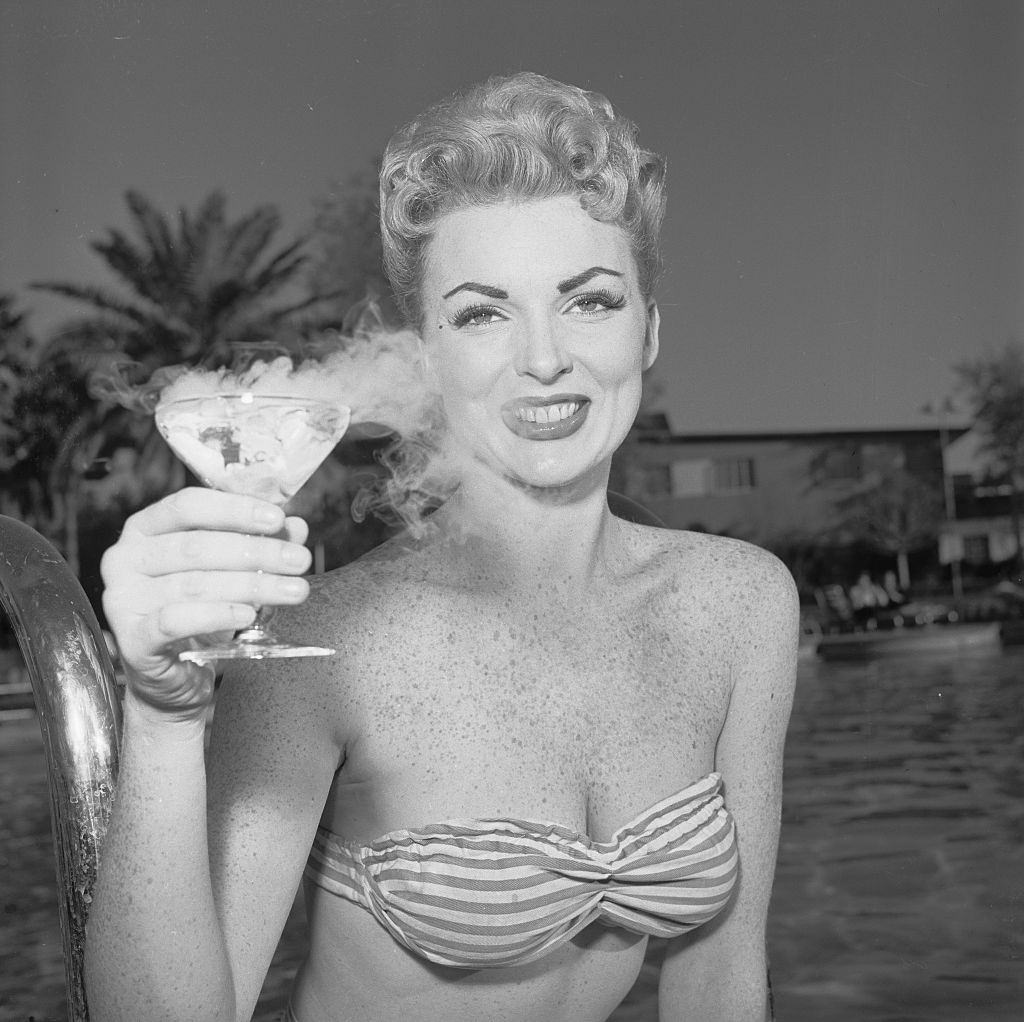
Joan Sanders, chorus girl at Las Vegas' Flamingo Hotel demonstrates the smog cocktail, inspired by Los Angeles weather. The drink consists of your favorite beverage with the addition of one lump of dry ice. Joan recommends drinking with straws to facilitate use with a gas mask.
#78 Smog Upsetting Resident, 1950
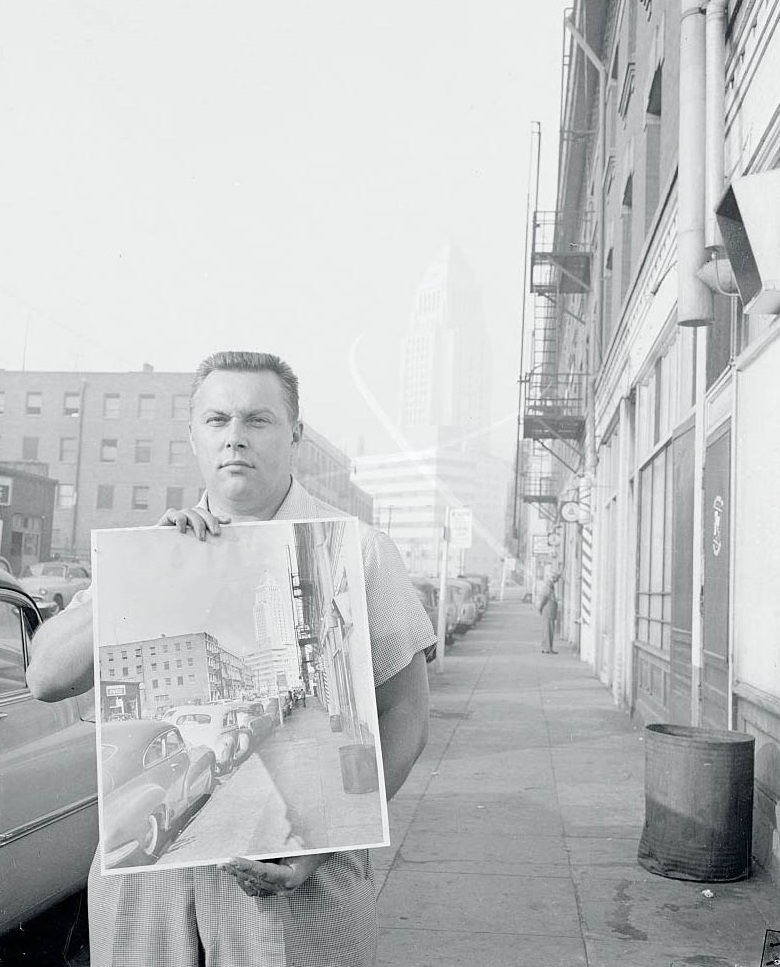
Another smog attack has brought tears to the eyes of Los Angeles area residents. wiping his orbs, Ernest Schworck stands on a Los Angeles sidewalk November 26. He holds a picture taken on a clear day at the same site. The white tower of the City Hall, which is shown clearly in the background of the picture, "disappears" from view in the smog.
#79 Afternoon Traffic in Thick Smog & Fog, 1950s
#80 City Hall and Hall of Records (on right) from North Broadway and Savoy Street, 1953
#81 North Broadway and Savoy Street, 1953
#82 Smog from Temple Street and Grand Avenue, 1953
#83 Smog from Temple Street and Grand Avenue, 1953
#84 Smog scenes over L.A. from Mount Hollywood (Griffith Park), 1952
#85 Smog scenes over L.A. from Mount Hollywood (Griffith Park), 1952
#86 From Broadway at Hollywood Freeway, Federal Building on right, Looking north on Spring from front of City Hall, 1952
#87 Looking North on Spring from in front of City Hall, 1952
#88 Federal Building on right, 1952
#89 Looking N on Broadway from Olympic at the beautiful smoggy Calif, 1952
#90 Federal Building on right, Looking north on Spring from front of City Hall, Smog, 1952
#91 Smoggy Los Angeles, 1952
#92 Civic Center taken from Hill Street overlooking North Broadway, Smog, 1952
#93 Civic Center from Hollywood Freeway, west of Grand Avenue, Smog, 1952
#94 Civic Center taken from Hill Street overlooking North Broadway, Smog, 1952
#95 Civic Center taken from Hill Street overlooking North Broadway, Smog, 1952
#96 Weather (smog downtown), 1952
#97 Smog tests, 1952
#98 Smog — Civic Center, 1 October 1952.
#99 Smog — Civic Center, 1 October 1952.
#100 Looking at Union Depot, Smog 1952
#101 Smog, from top of City Hall, 1952)
#102 Smog, from top of City Hall and “Cops that cried”, 1952
#103 Smog and our fair city (a smelly story), 1951
#104 Smog and our fair city (a smelly story), 1951
#105 Smog and our fair city (a smelly story), 1951
#106 Weather of Los Angeles, Smog, 1951
#107 Smoke coming out of stack on 9th floor roof of City Hall, 1950
#108 Olive Drive from Sunset Boulevard, 1950
#109 East from Sunset Towers, Smog, 1950
#110 Smoggy L.A, 1950
#111 Olive Drive from Sunset Boulevard, 1950
#112 Looking East from Sunset Towers, 1950
#113 Smoggy L.A, 1950
#114 Smoggy L.A, 1950
#115 Smoggy L.A, 1950
#116 Looking east from Fifth Street and Beaudry Avenue at 8 p.m., 1950
#117 Looking east from Fifth Street and Beaudry Avenue at 8 p.m., 1950
#118 Joseph Nold looking south from Poppy Peak in Pasadena, 1950
#119 Looking east from Fifth Street and Beaudry Avenue at 8 p.m., 1950
#120 Julius Tannen (picket) at Griffin Wheel company, 1950
#121 Smudge and smog in San Fernando Valley, 1950
#122 Smudge and smog in San Fernando Valley. 4 January 1950
#123 Smudge and smog in San Fernando Valley, 1950
#124 Smudge and smog in San Fernando Valley, 1950
#125 Stanford Research Institute — Pasadena, 1950
#126 Nancy Matthews at hospital for treatment. Her eyes were affected from smog, 1950
#127 Smoggy L.A, 1950
#128 Three men on top of the building to observe the Smog, 1950.
#129 Smog, Pacific Electric bus smoke, 1950
#130 Smog, Pacific Electric bus smoke, 1950
#131 Smog measuring device, 1950
#132 Smog tour, 1950
#133 Bethlehem Steel Corporation at 3396 East Slauson Avenue gives out with smog from two smoke stacks at 2:00 p.m. Sunday, December 10th 1950
#134 Bethlehem Steel Corporation at 3396 East Slauson Avenue, 1950
#135 Bethlehem Steel Corporation at 3396 East Slauson Avenue, 1905
#136 Man Seated, Looking at Smoggy Los Angeles
#137 A smoggy aerial view of the cityscape and downtown skyline in January 1975 in Los Angeles, California.
#138 Smoggy Aerial of Downtown
#139 Smog in Los Angeles
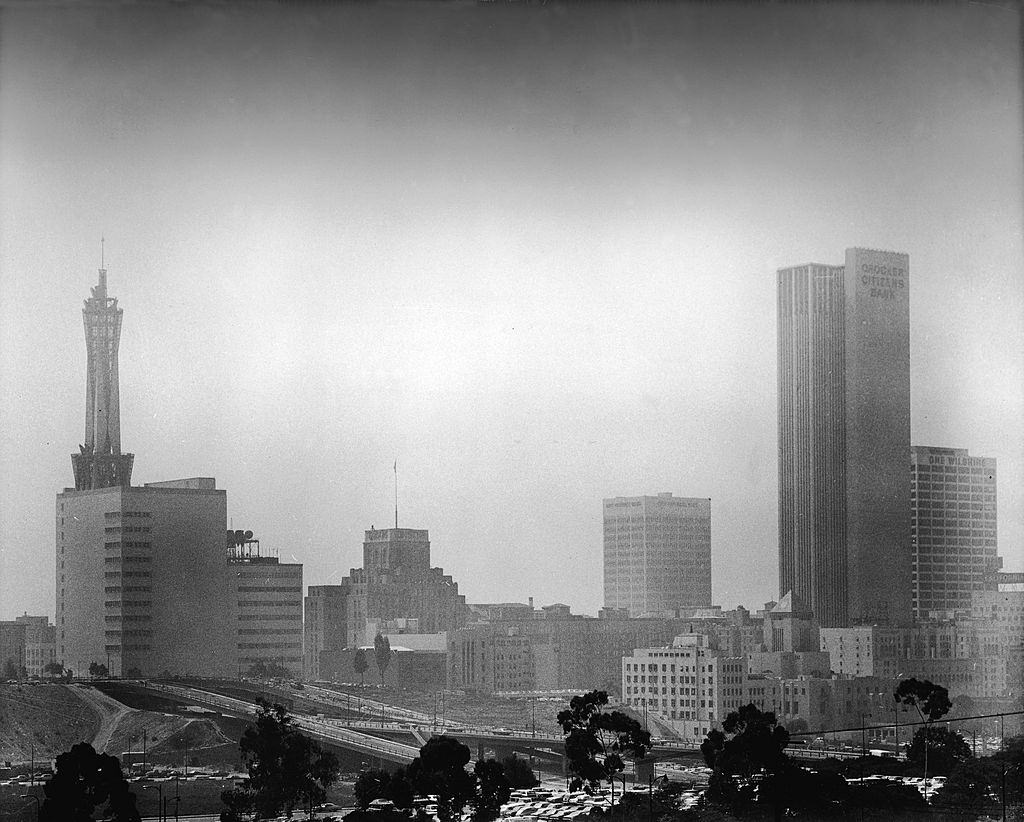
Photo shows the skyline of downtown Los Angeles including the PacBell building (with tower, left), One Bunker Hill (second from left), the City National Bank building (third from right), the Crocker Citizen's Bank Building (now 611 Place, second from right), and One Wilshire (far right), shrouded and obscured by smog.


